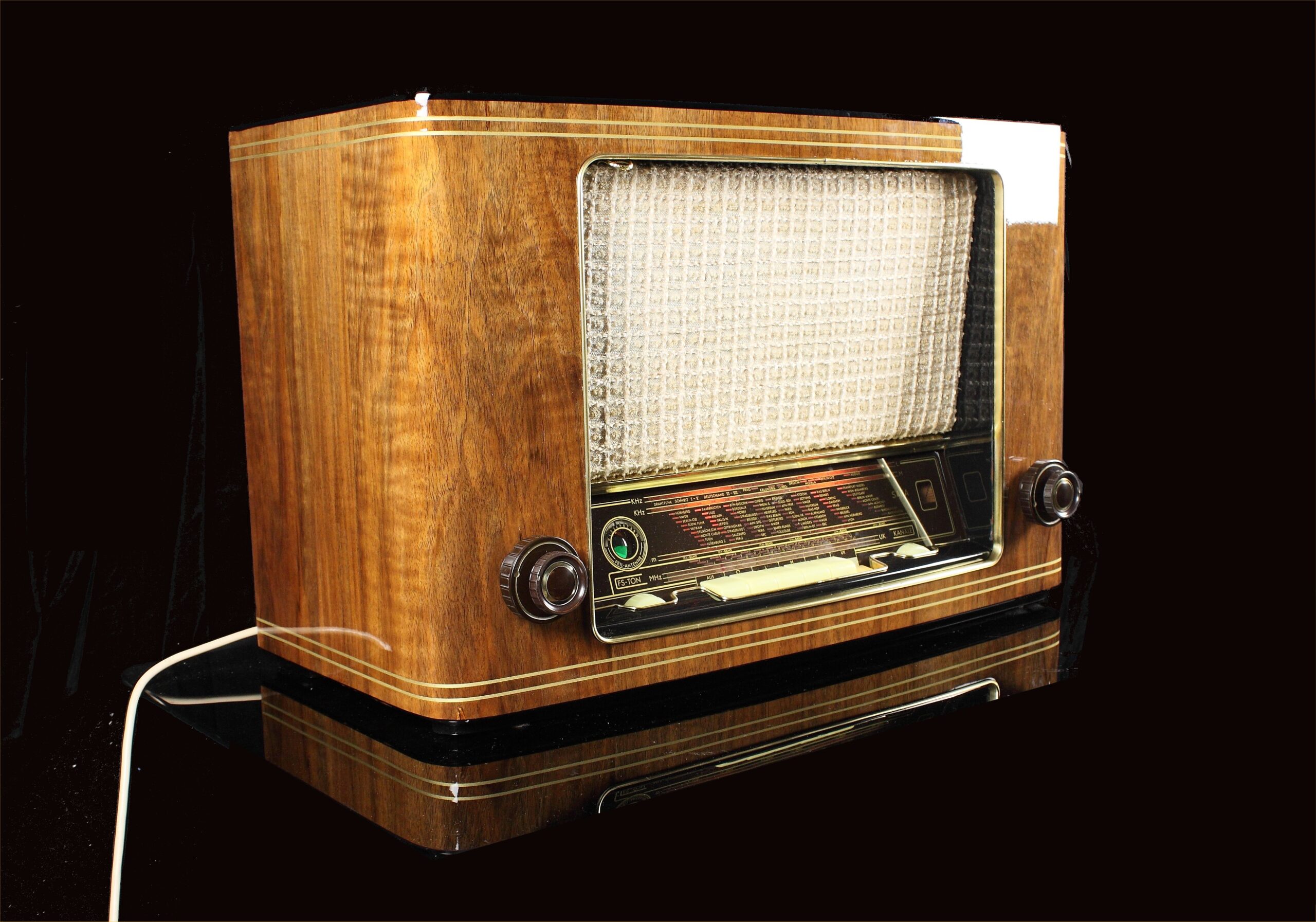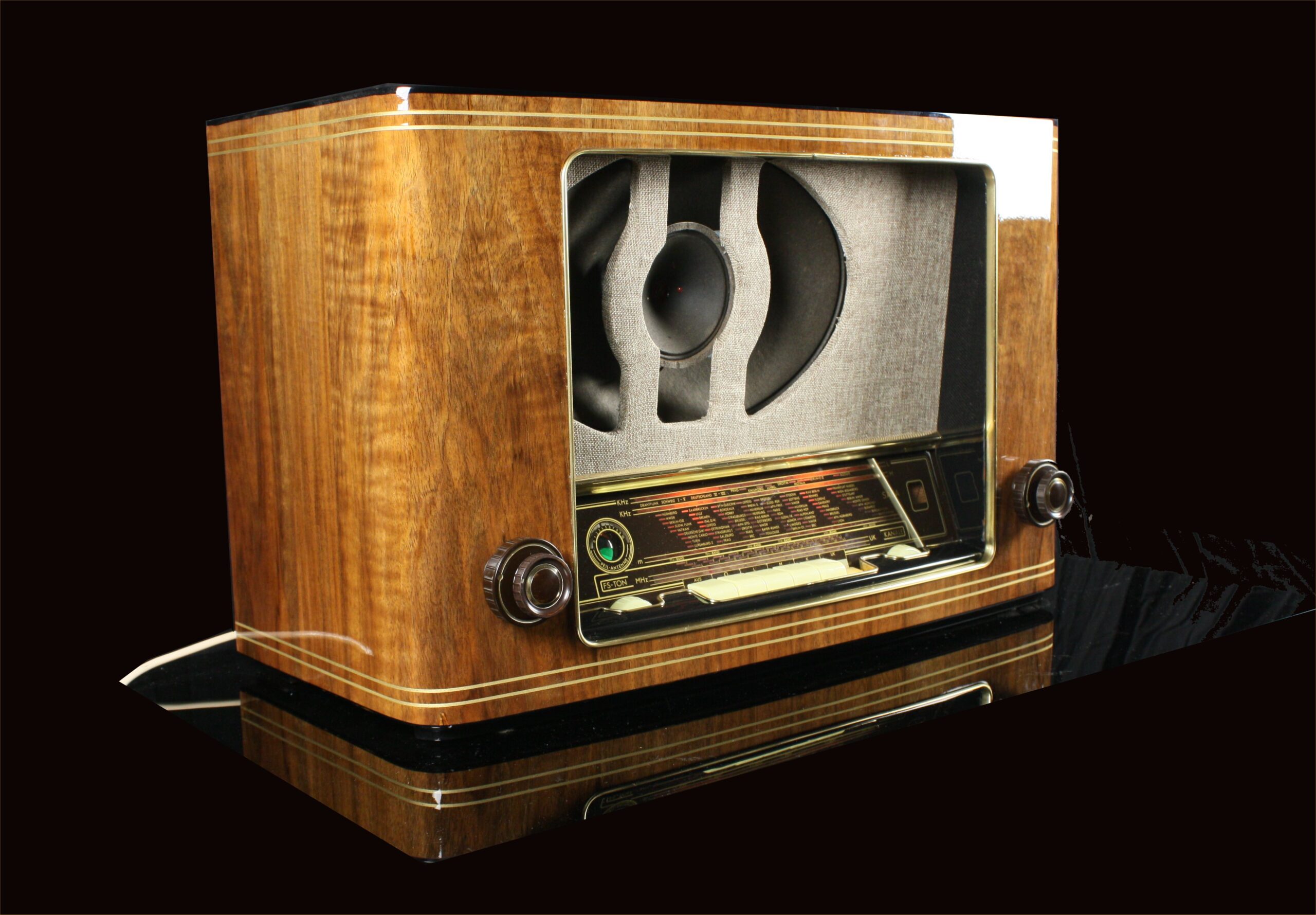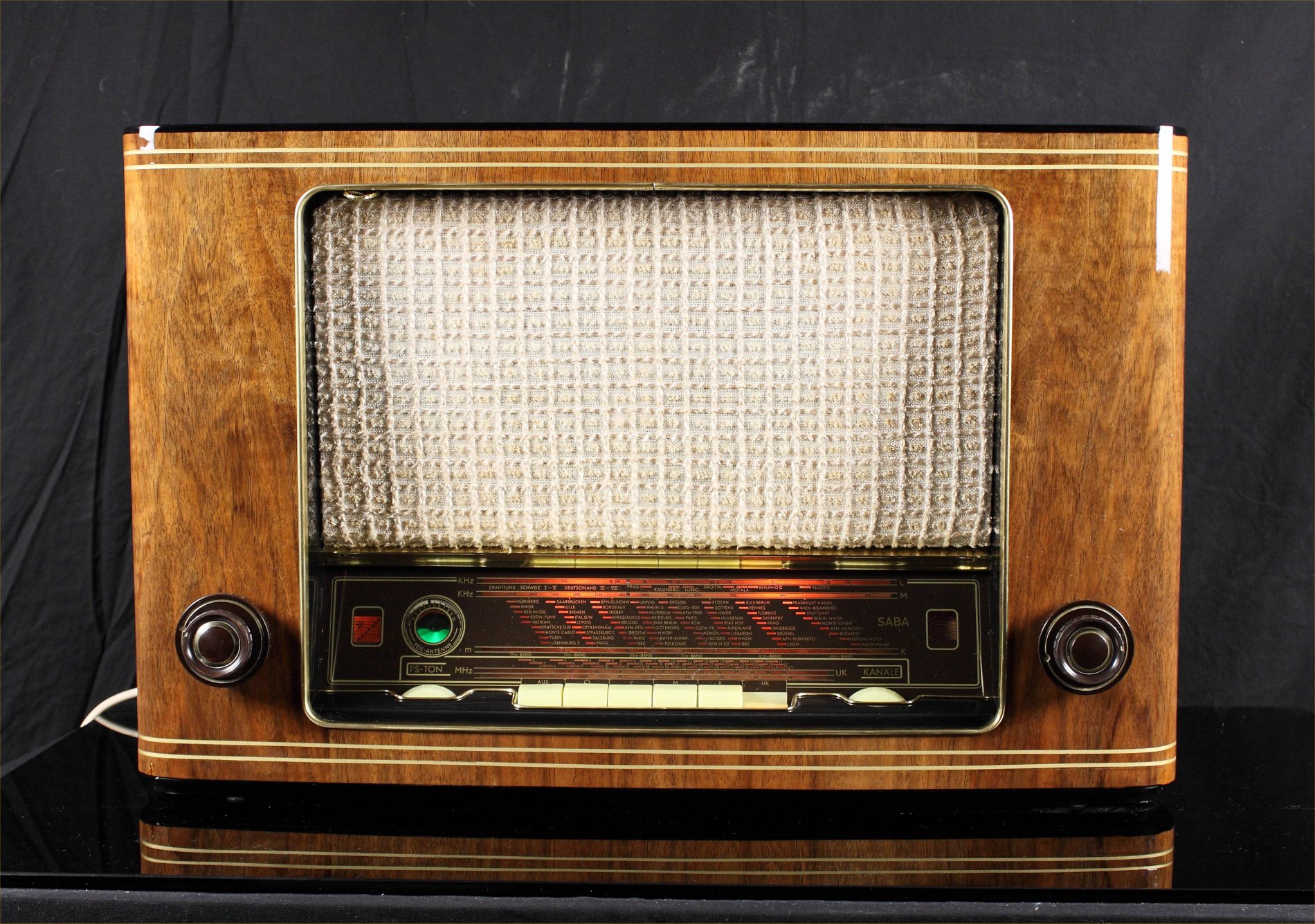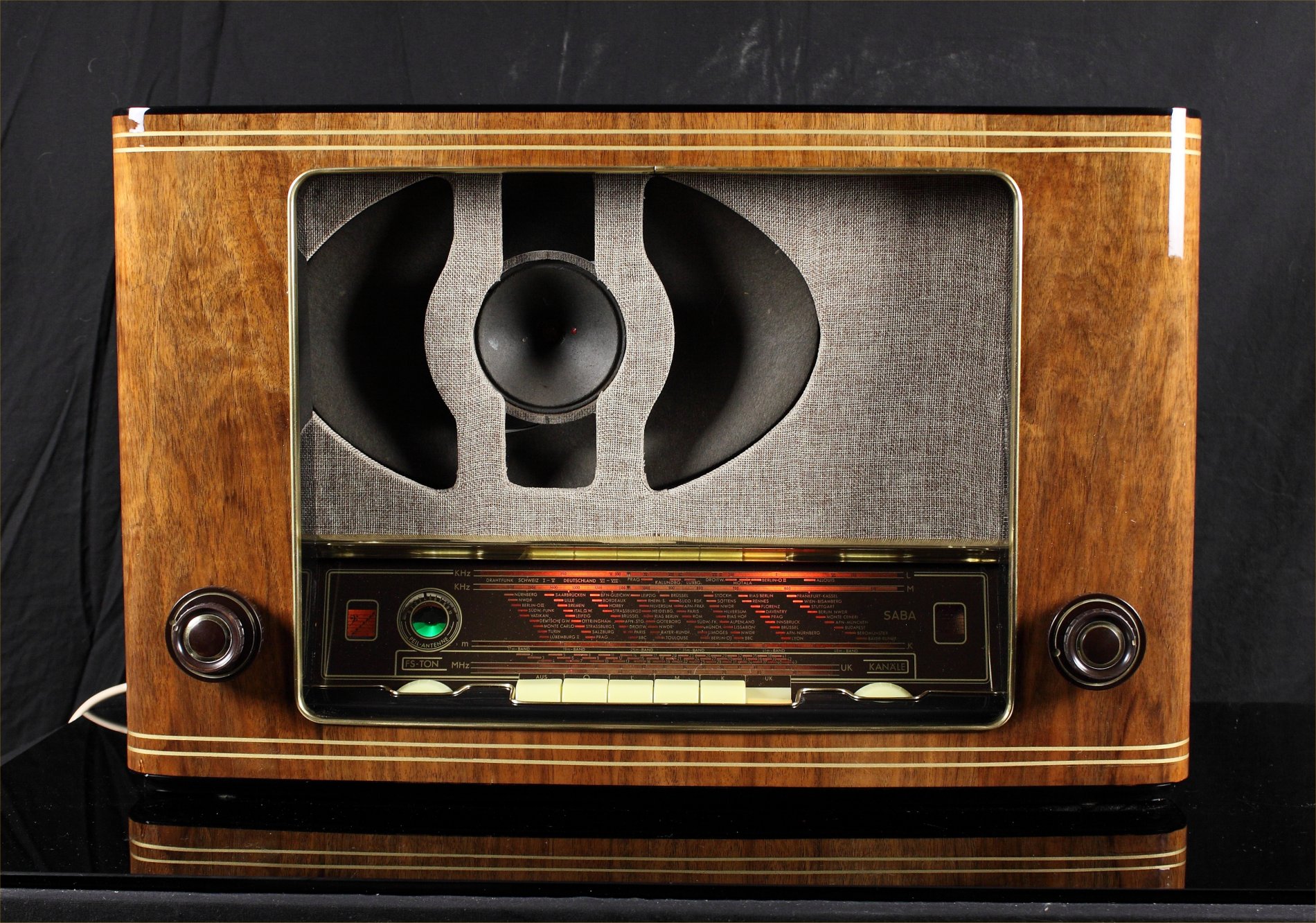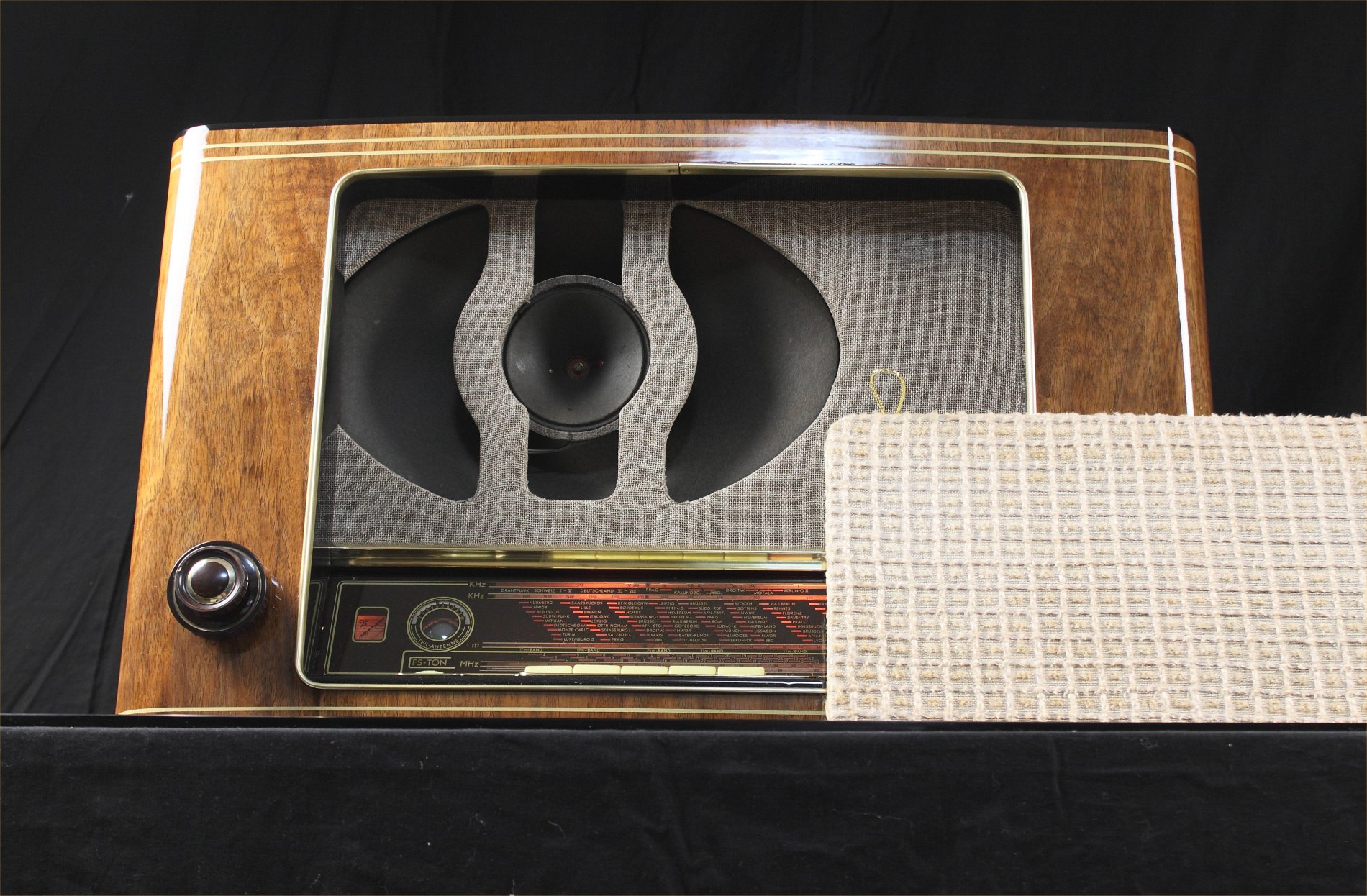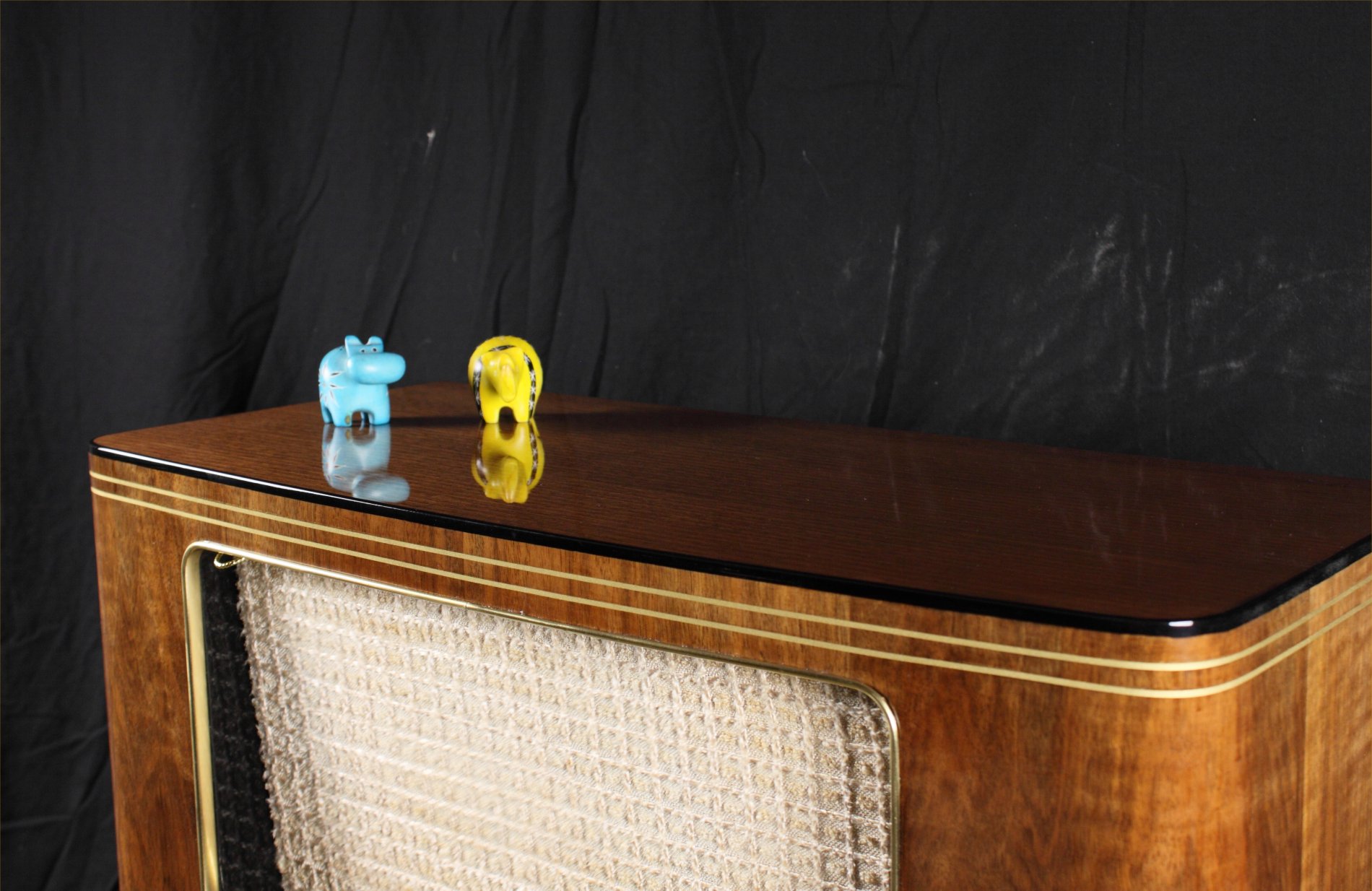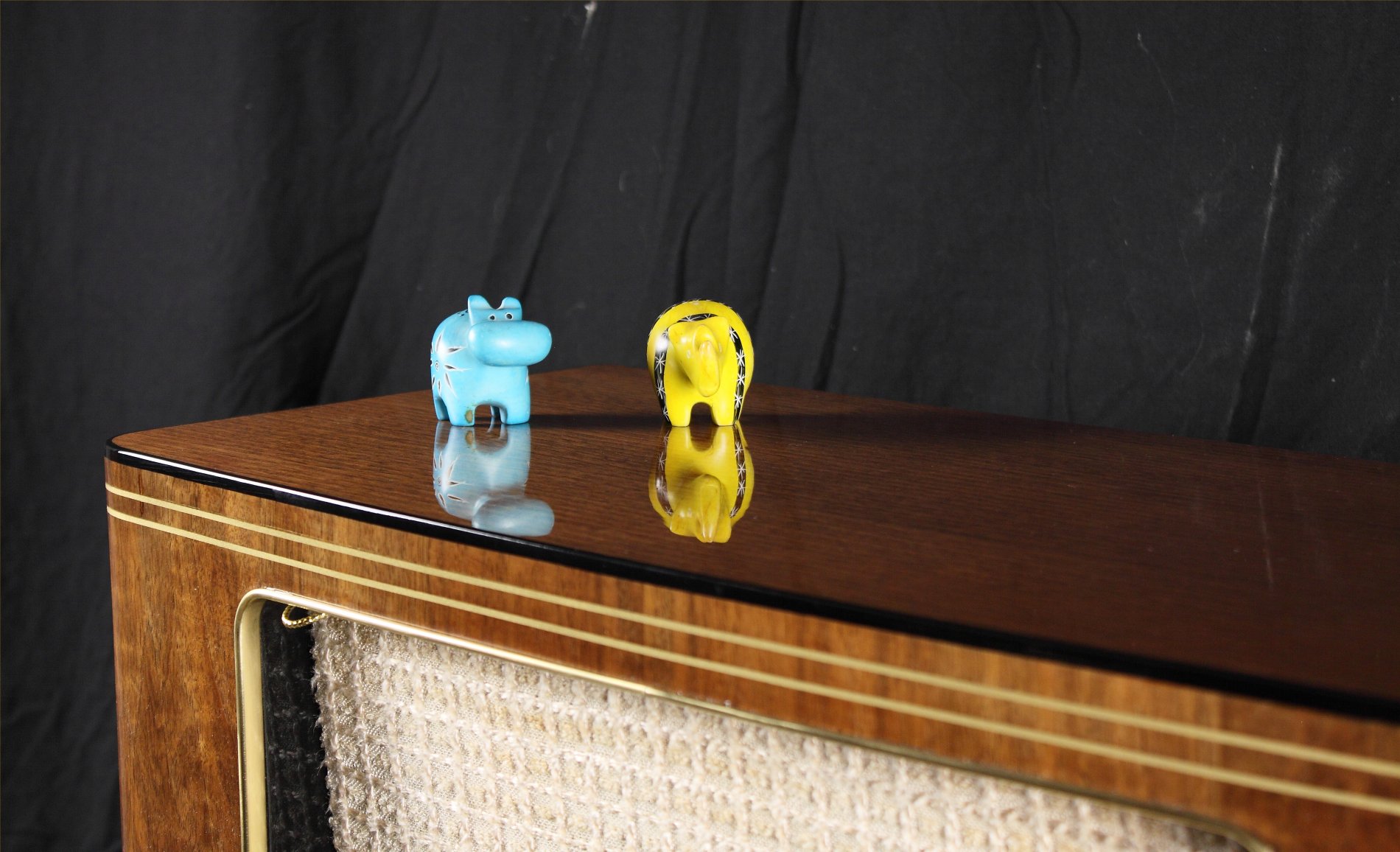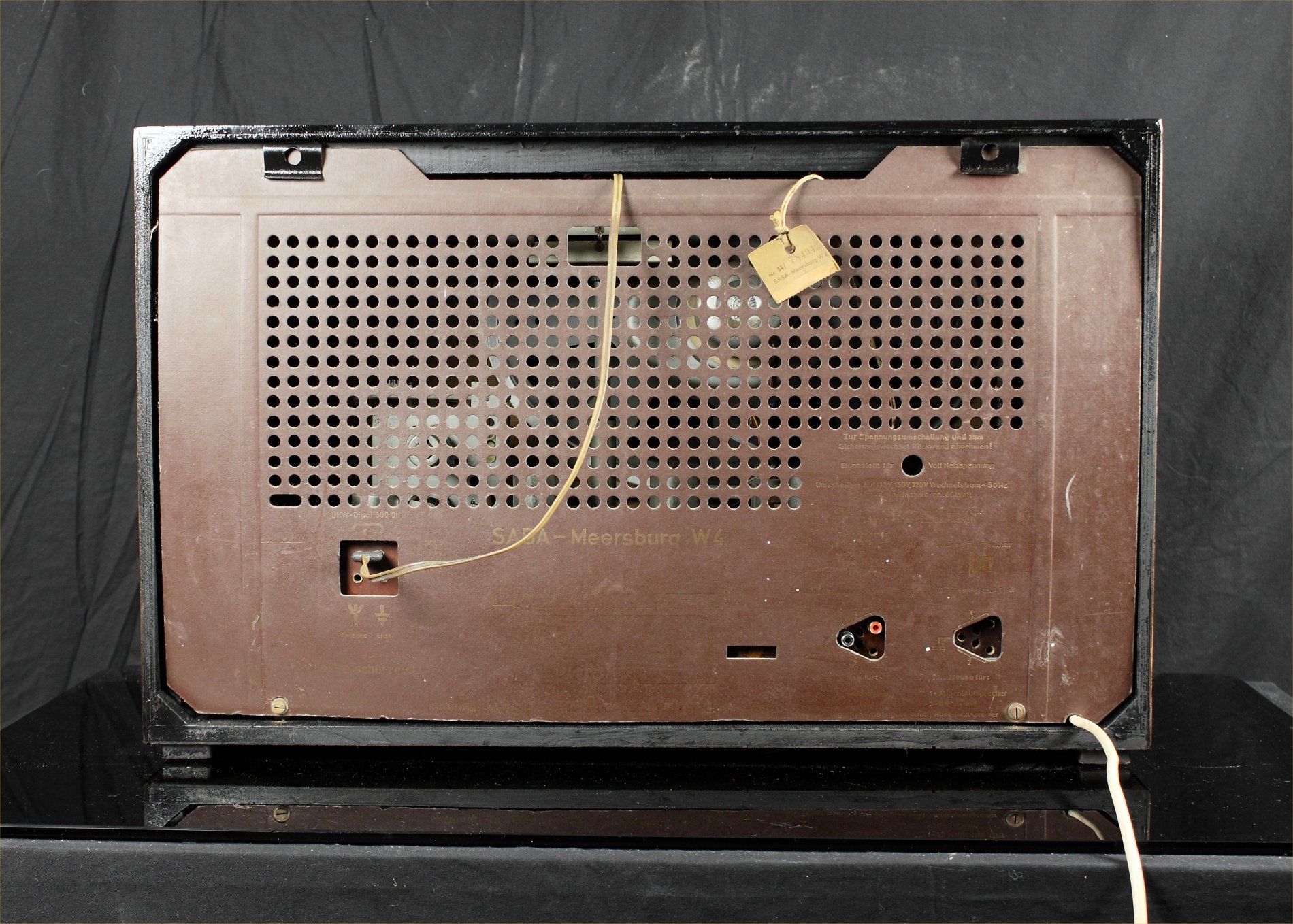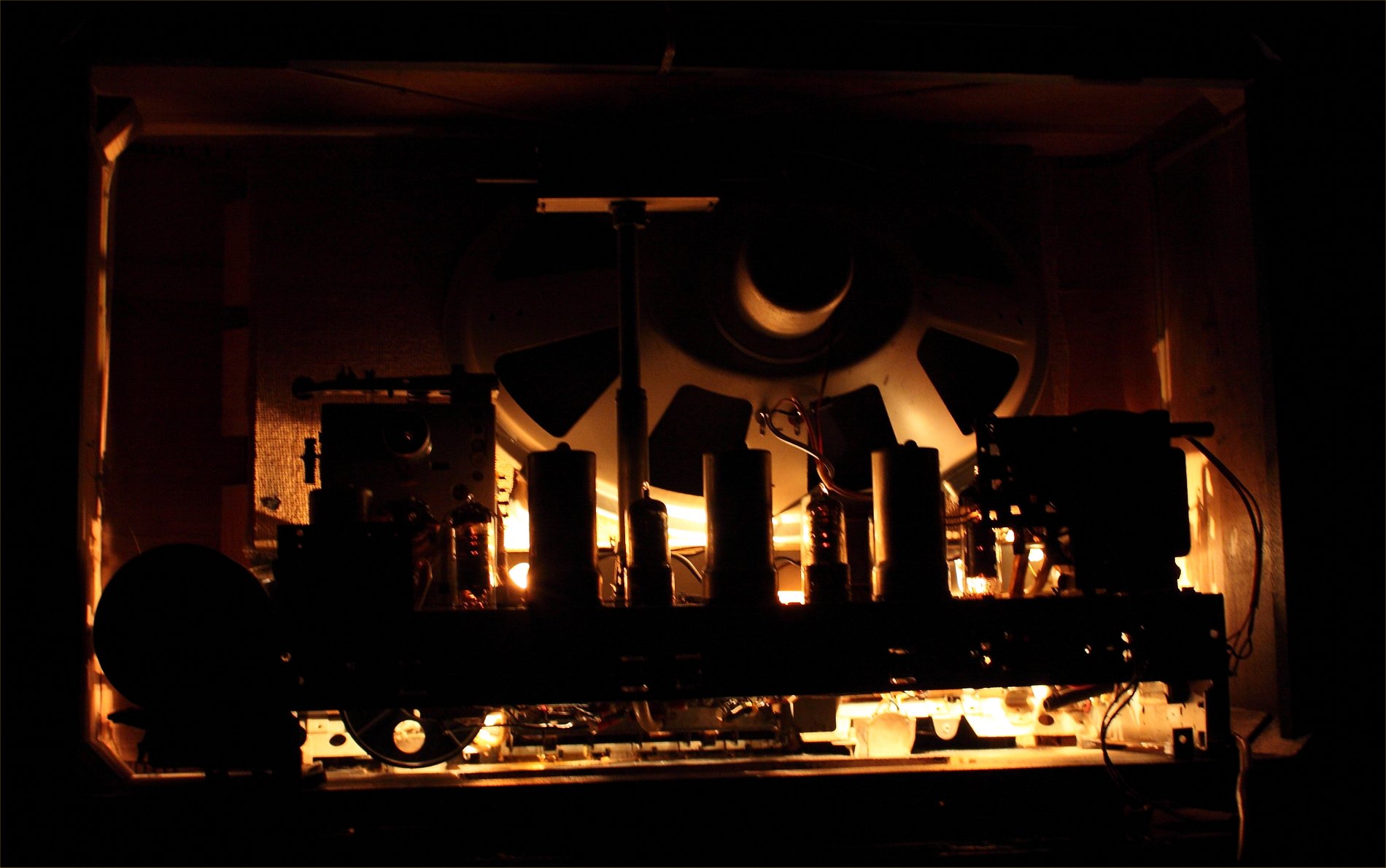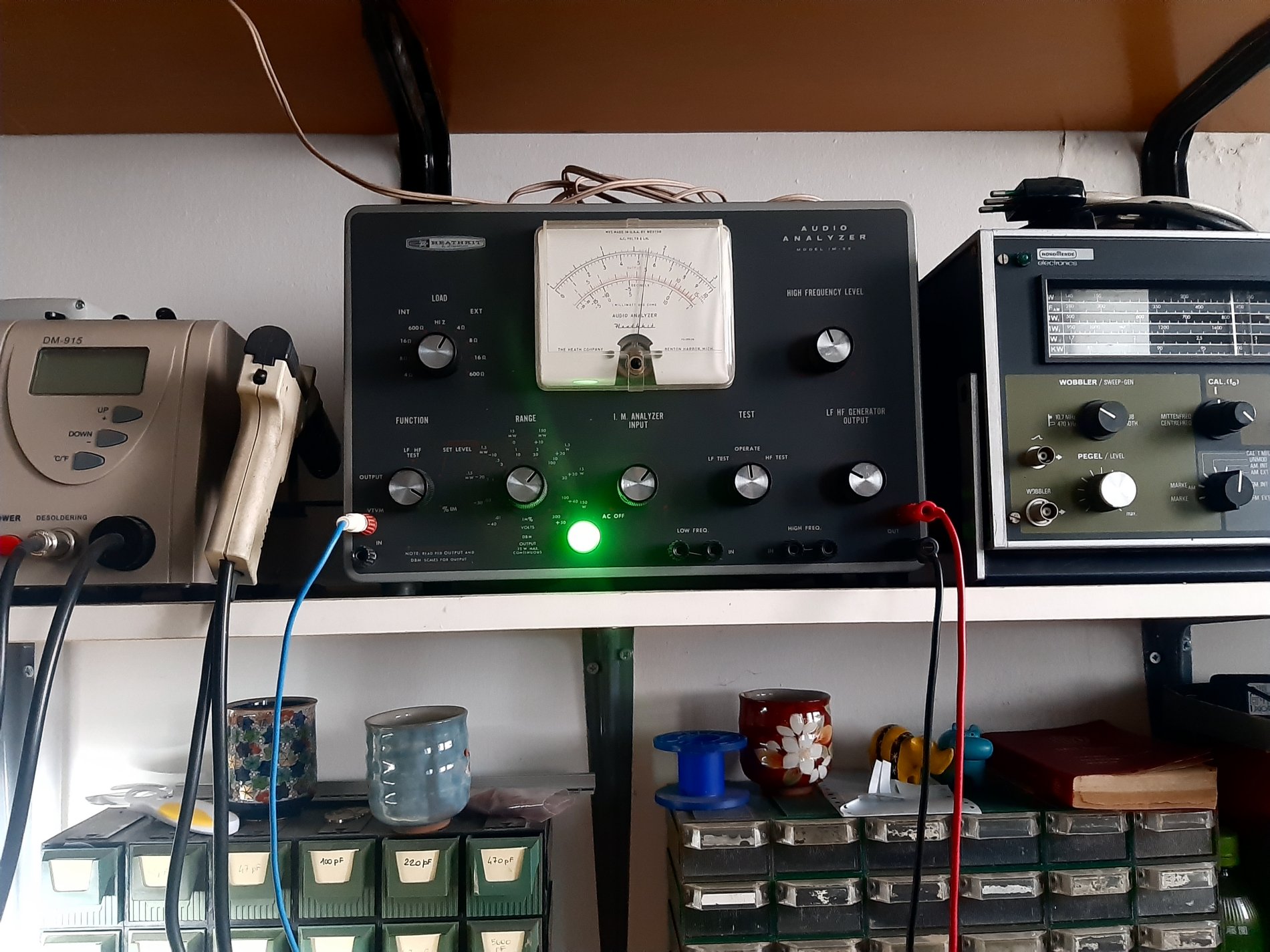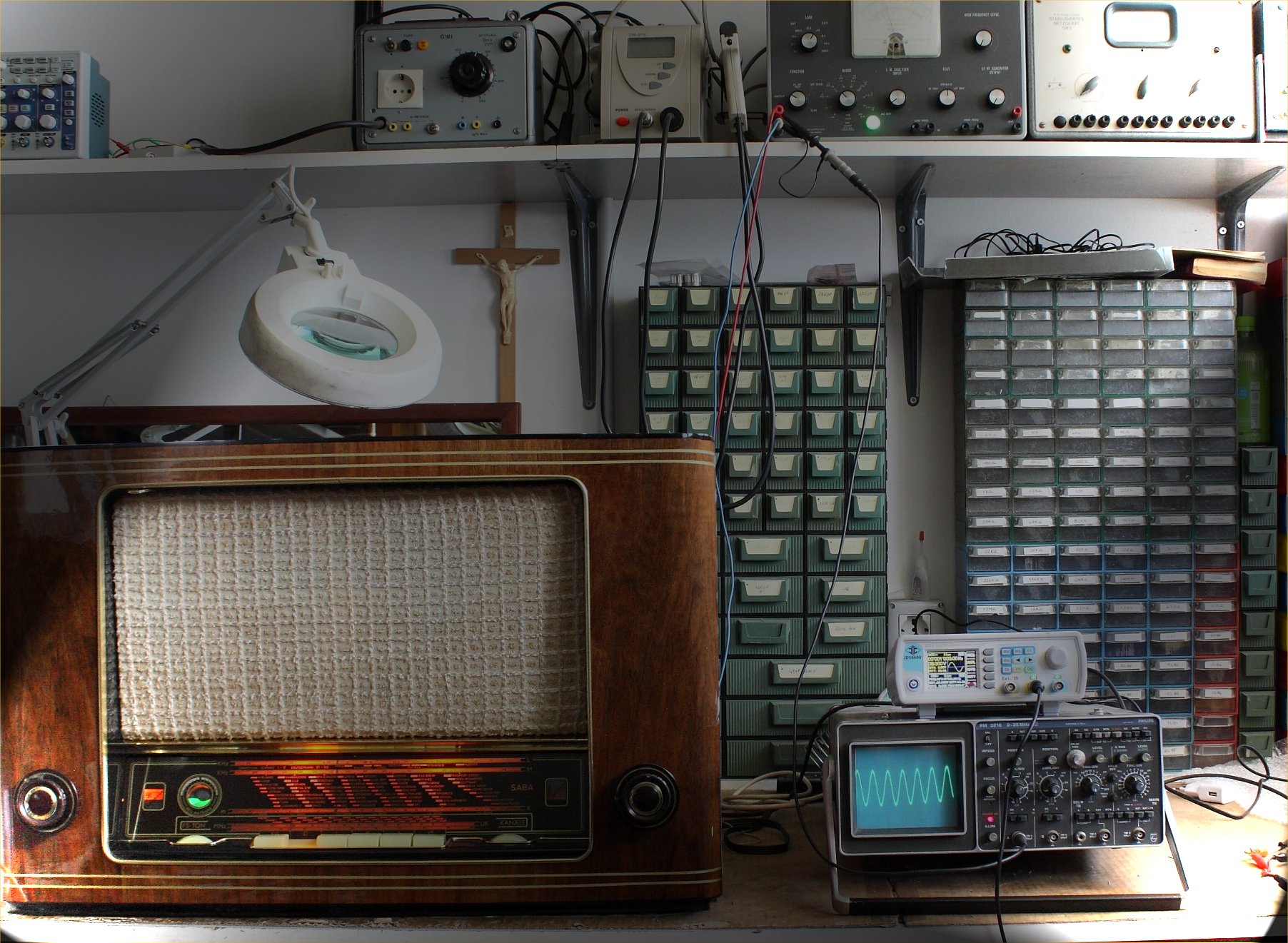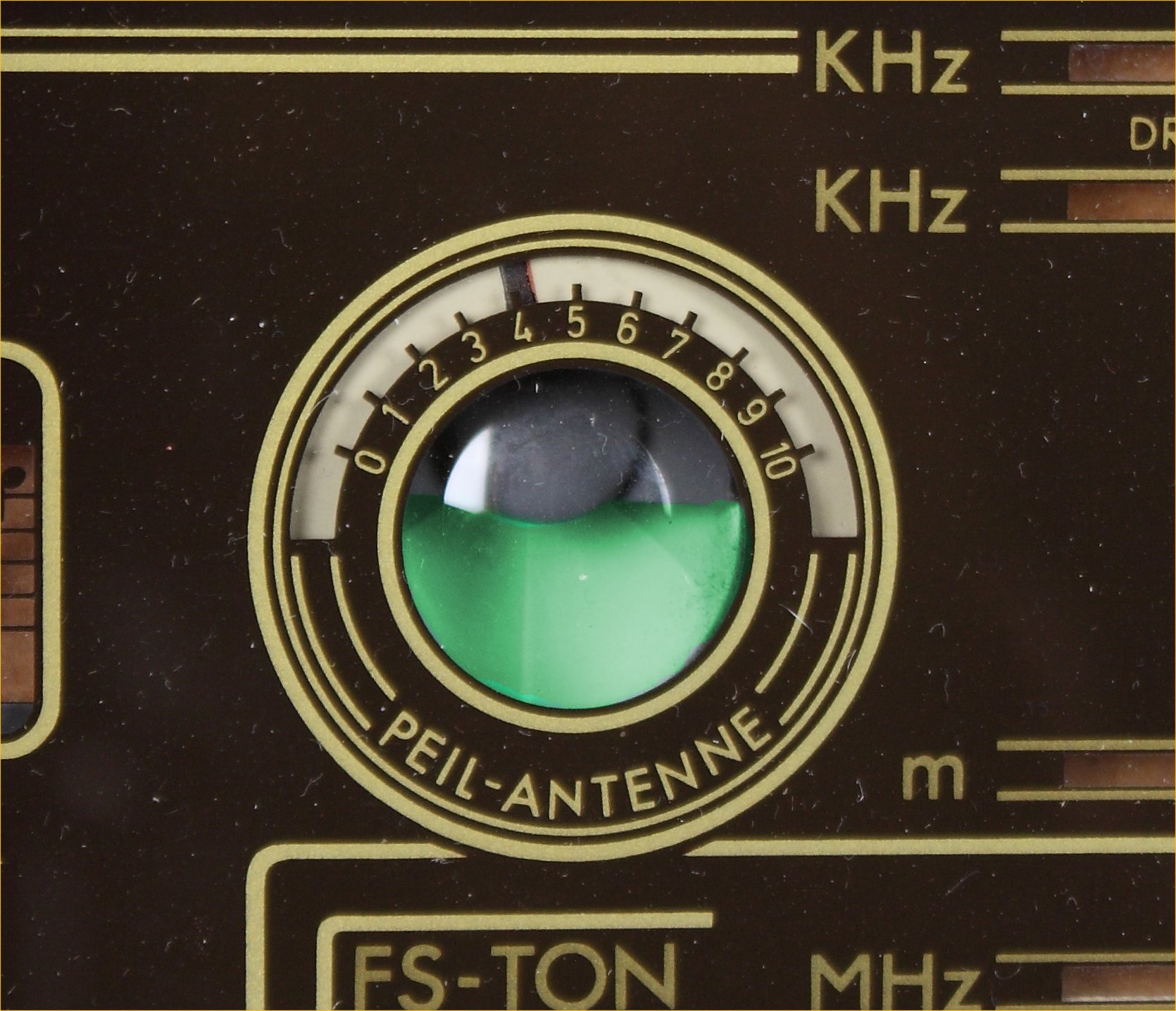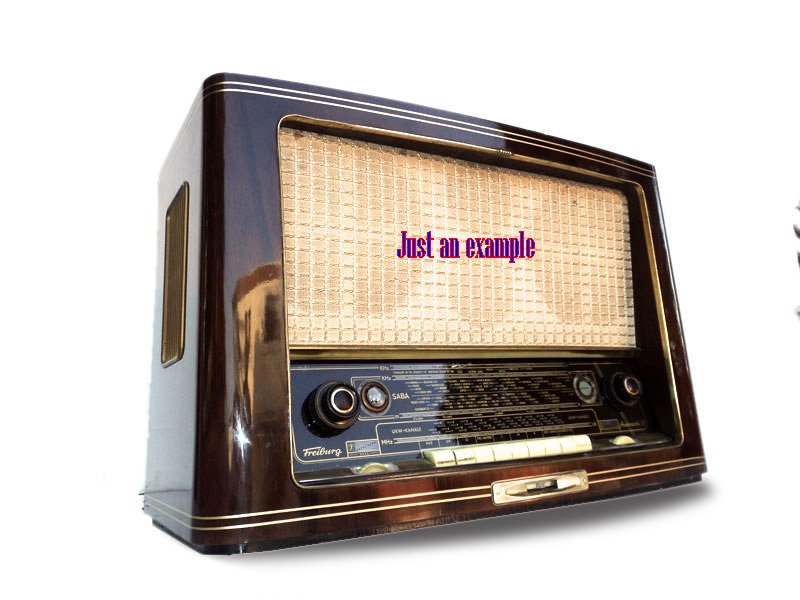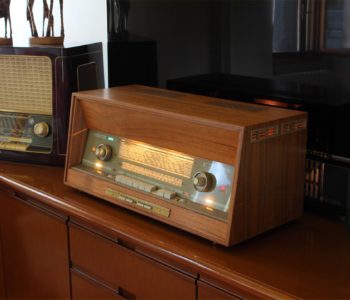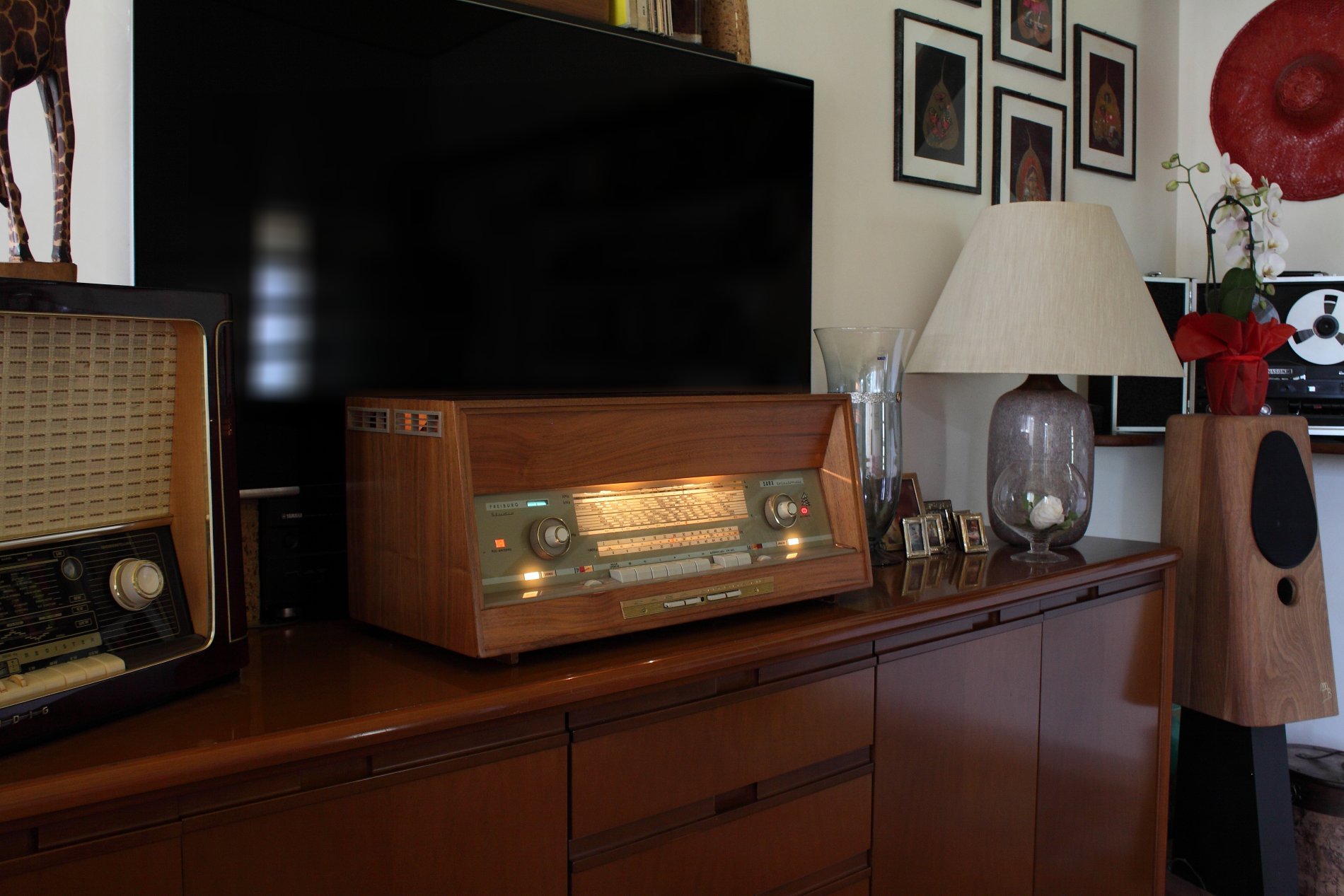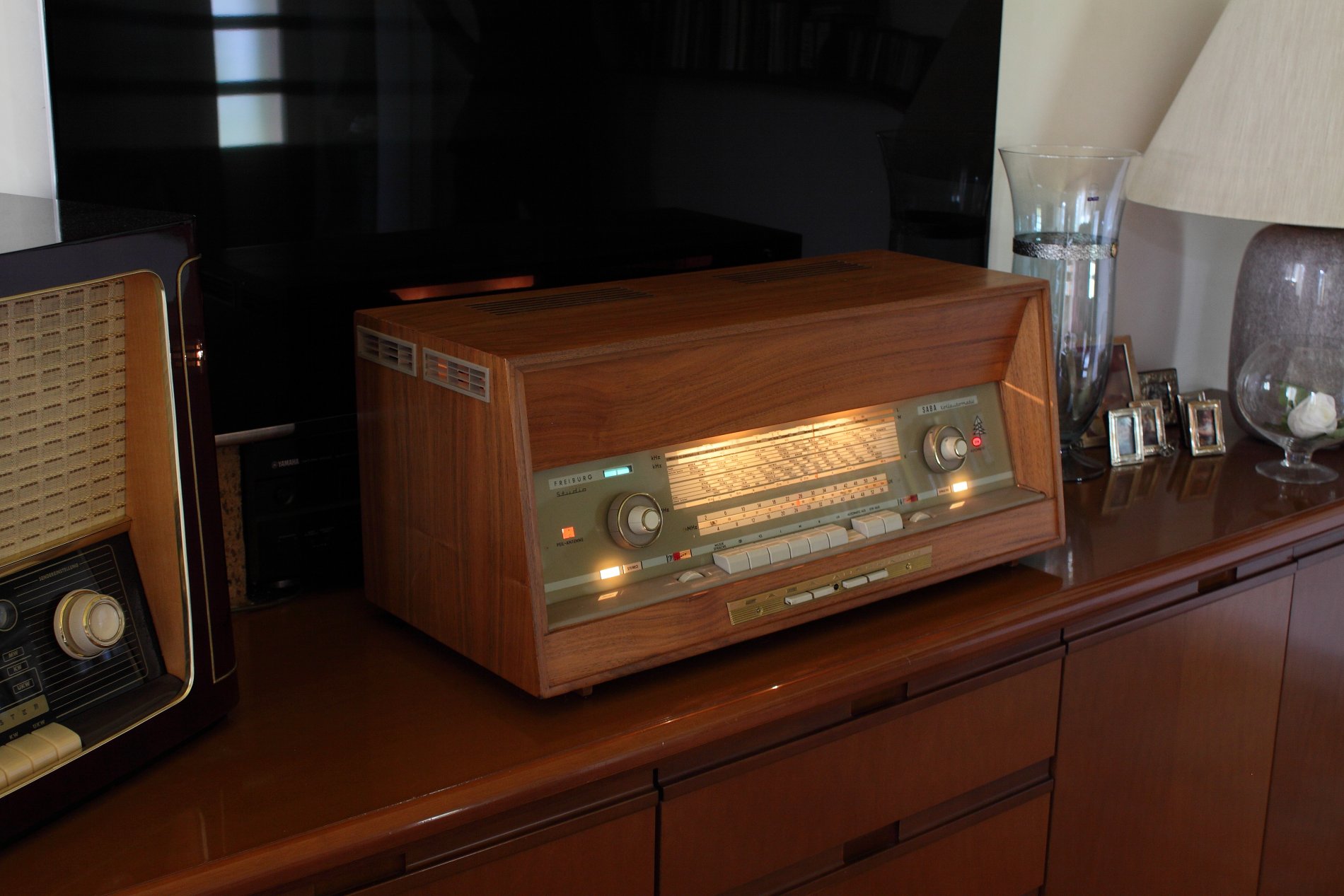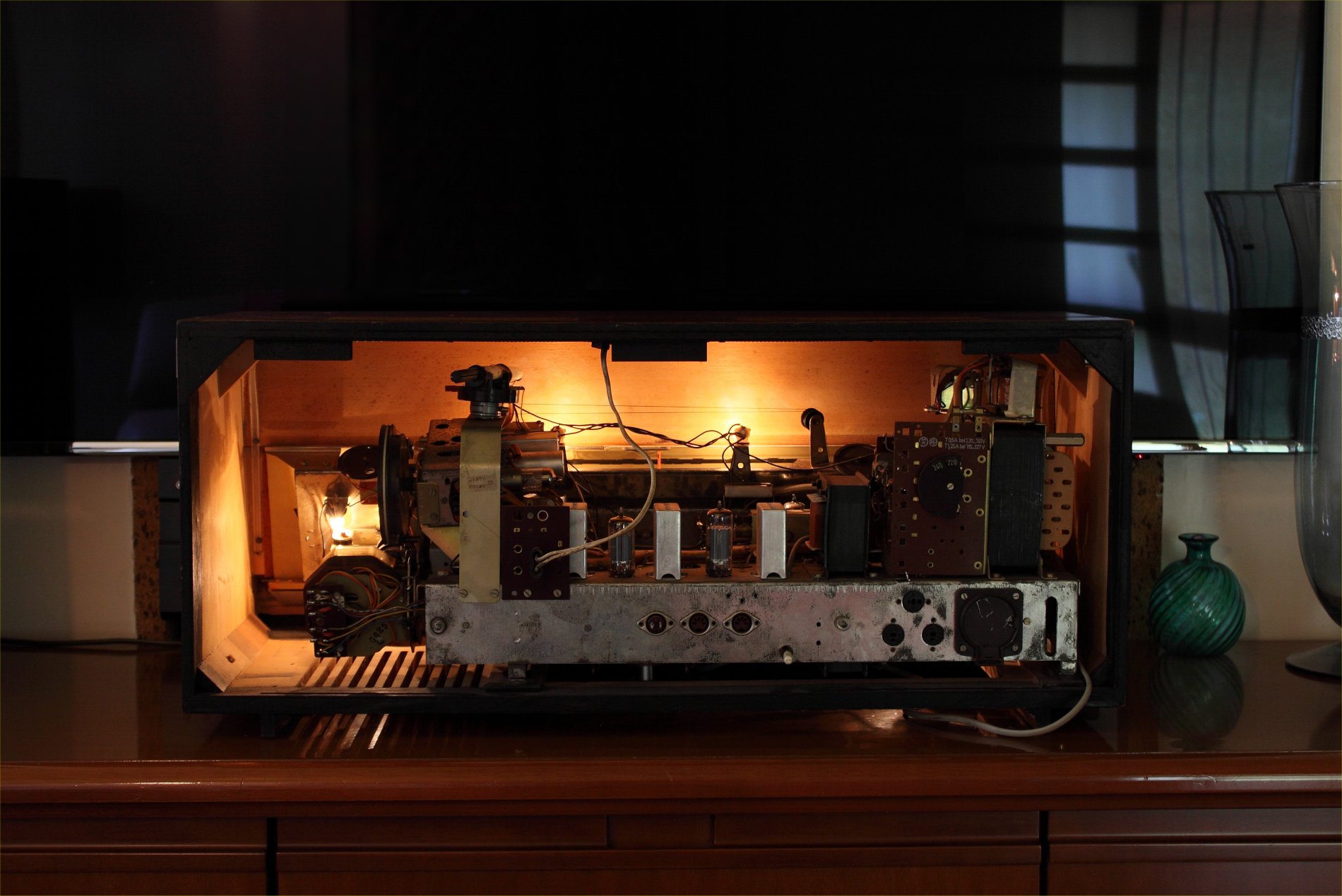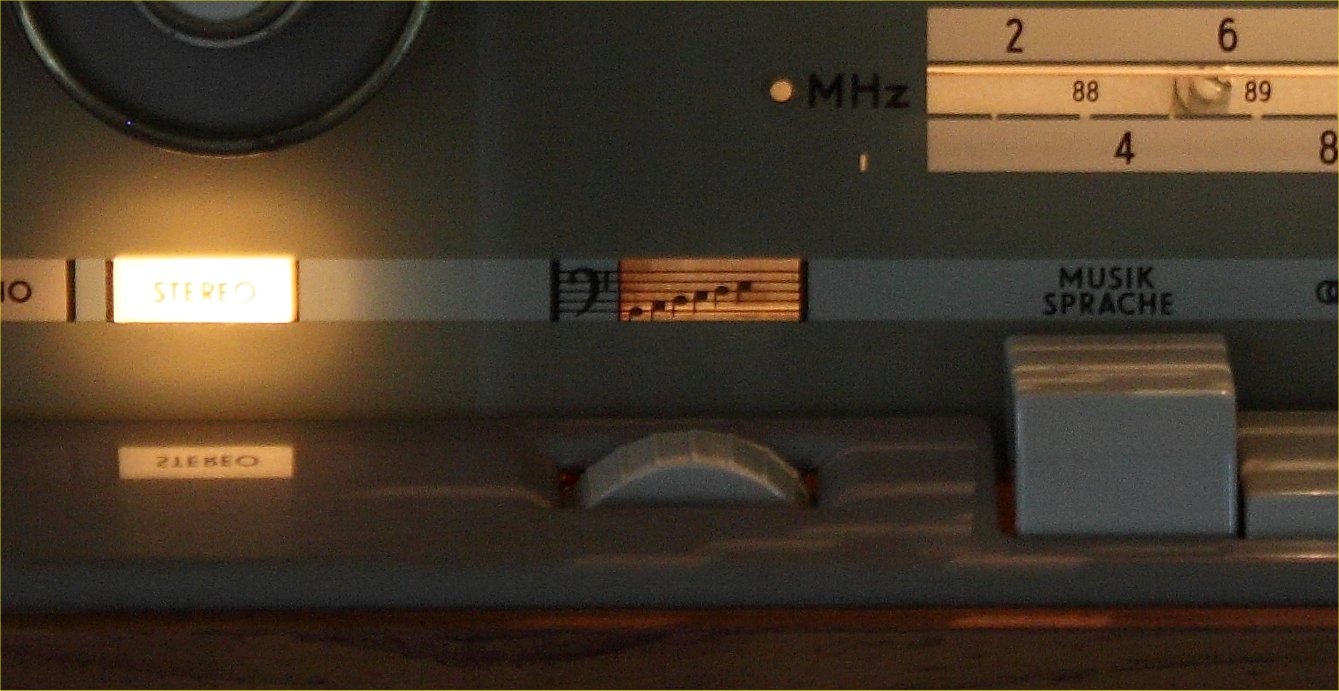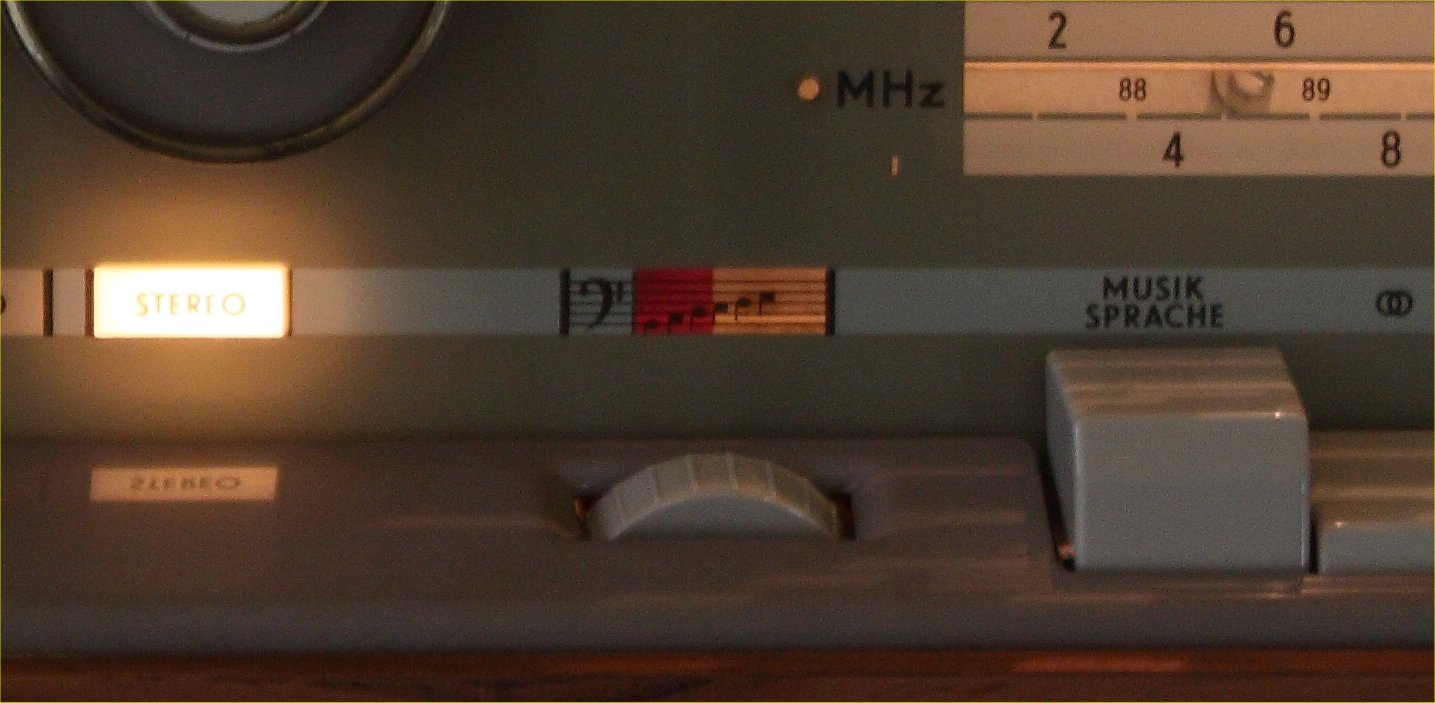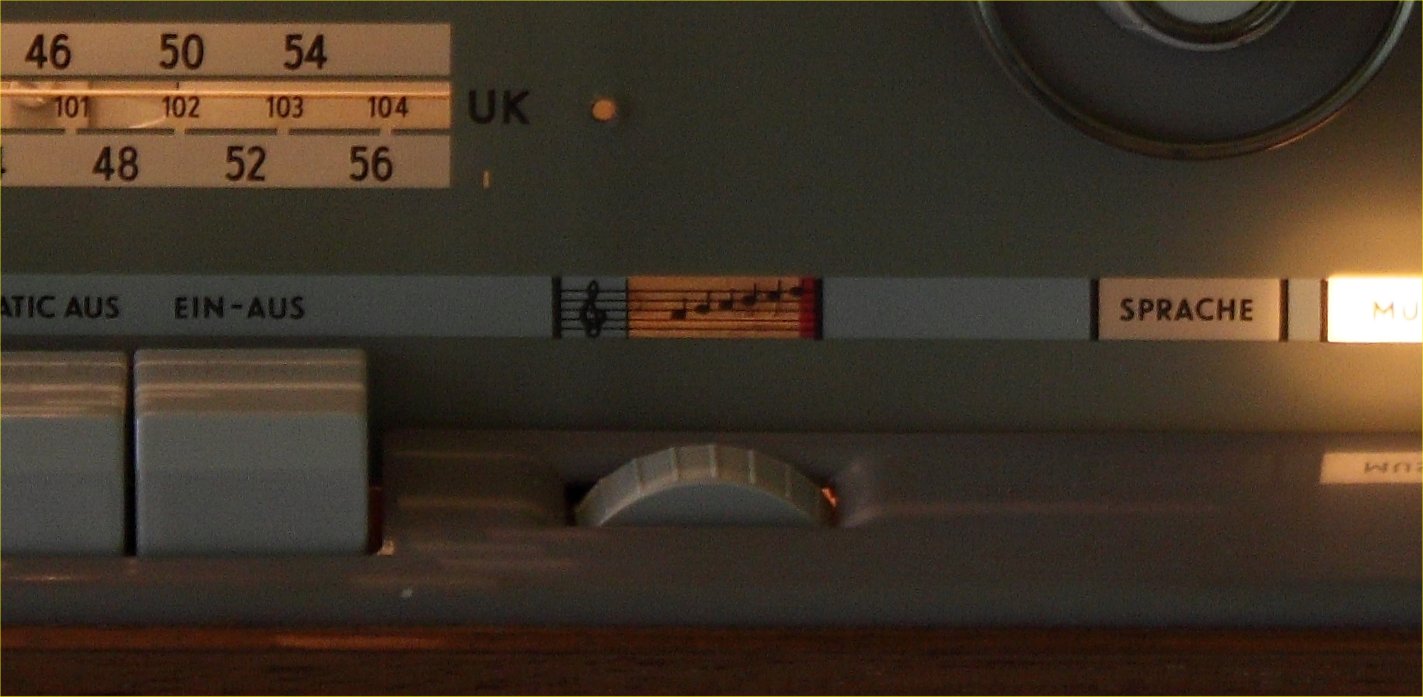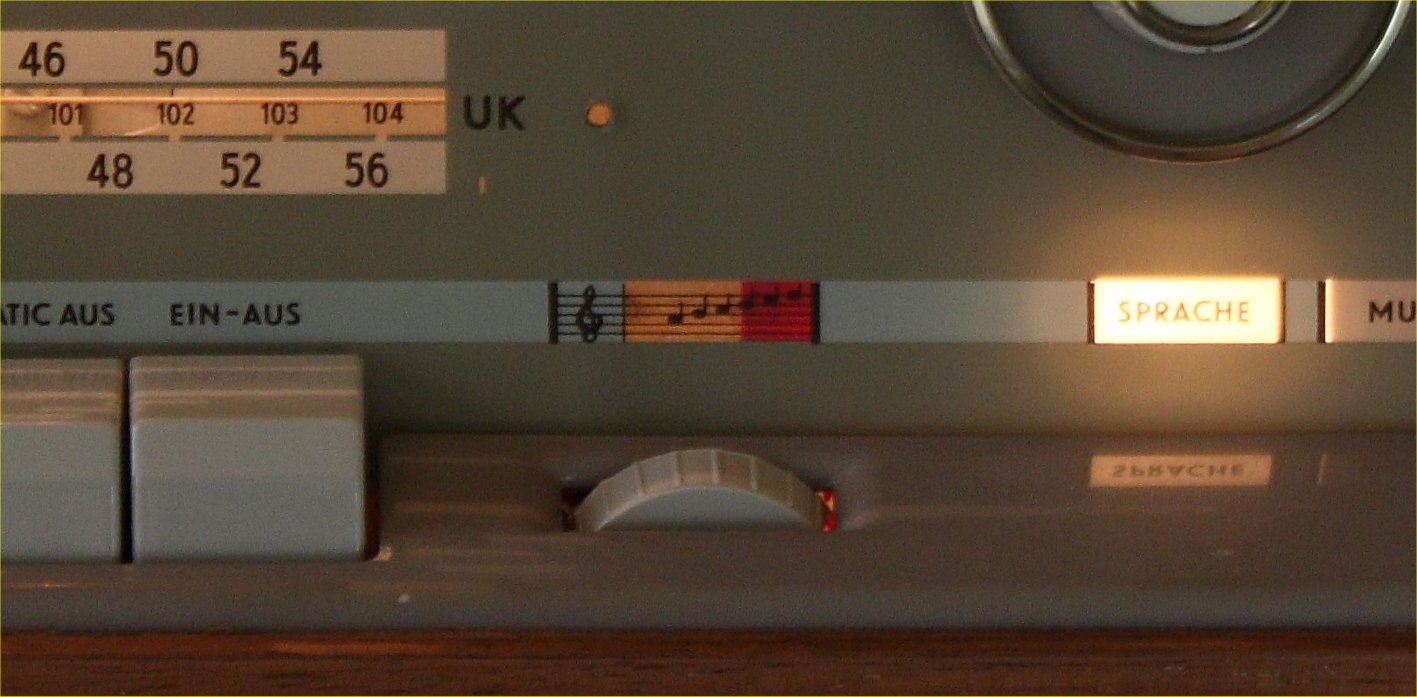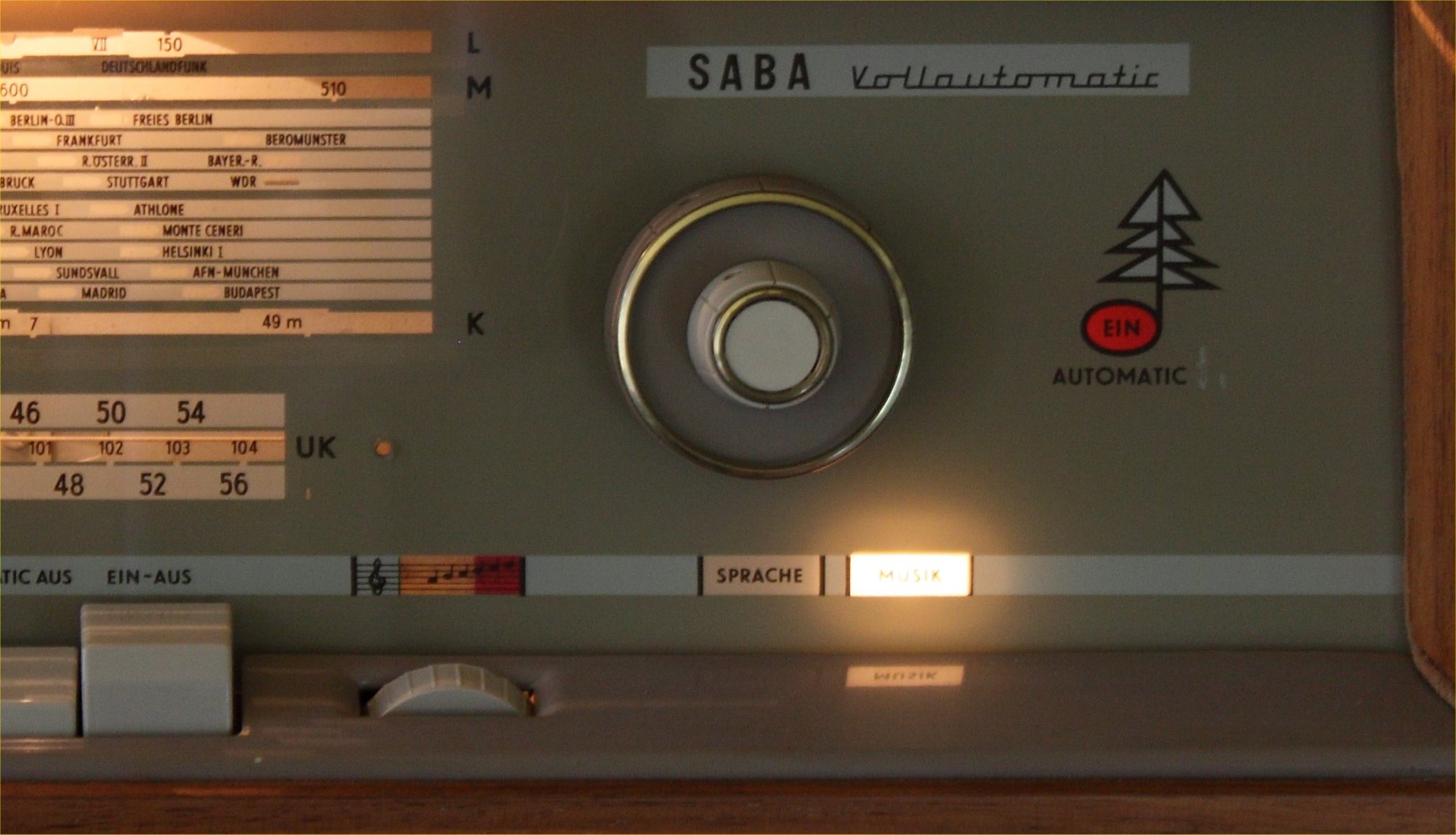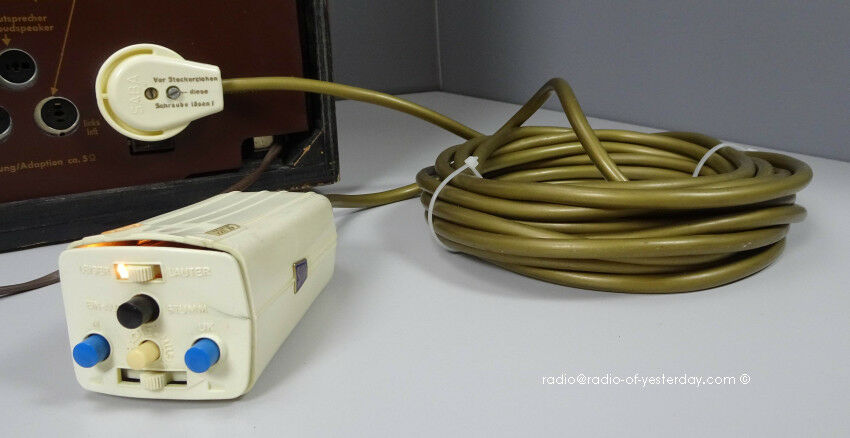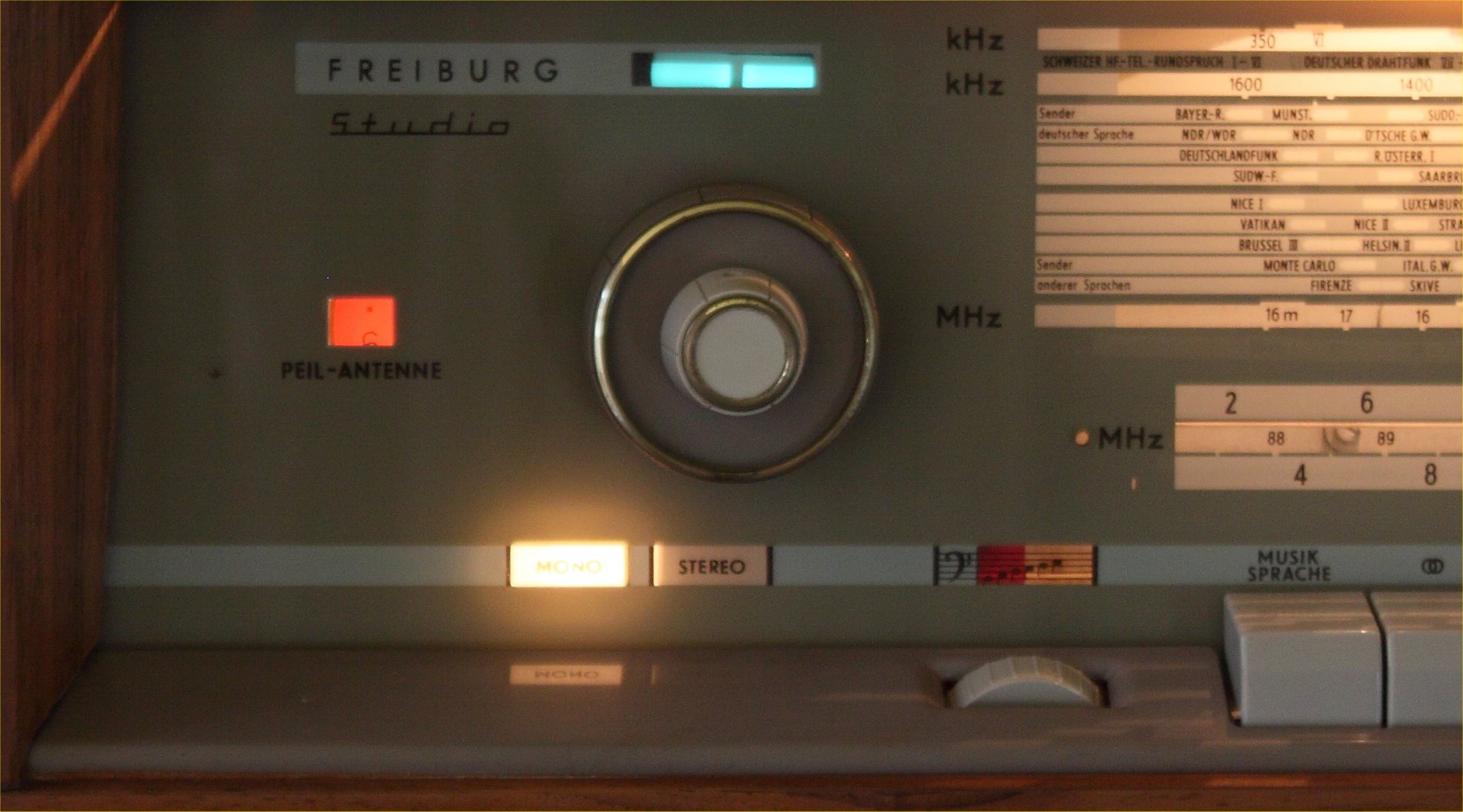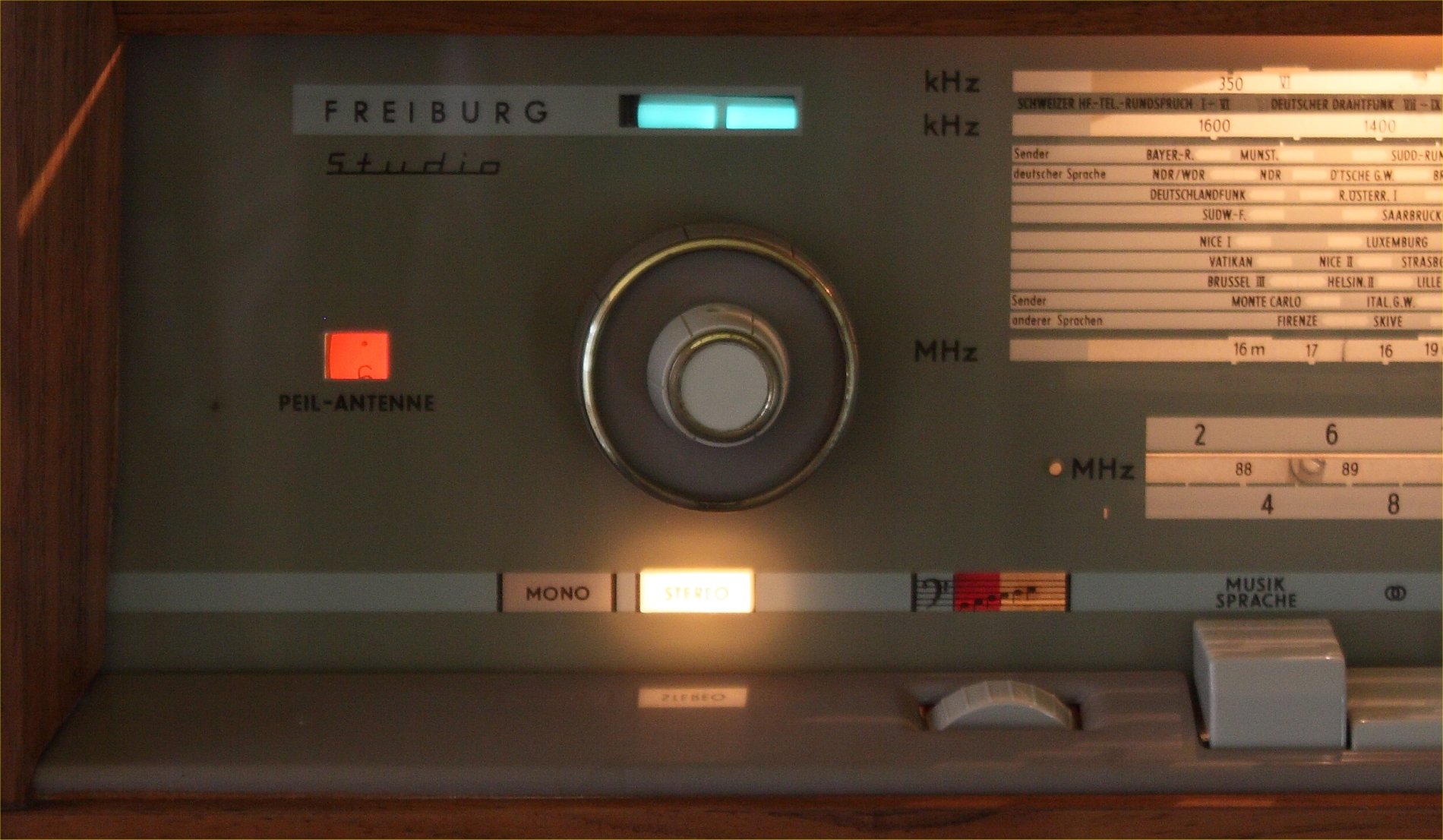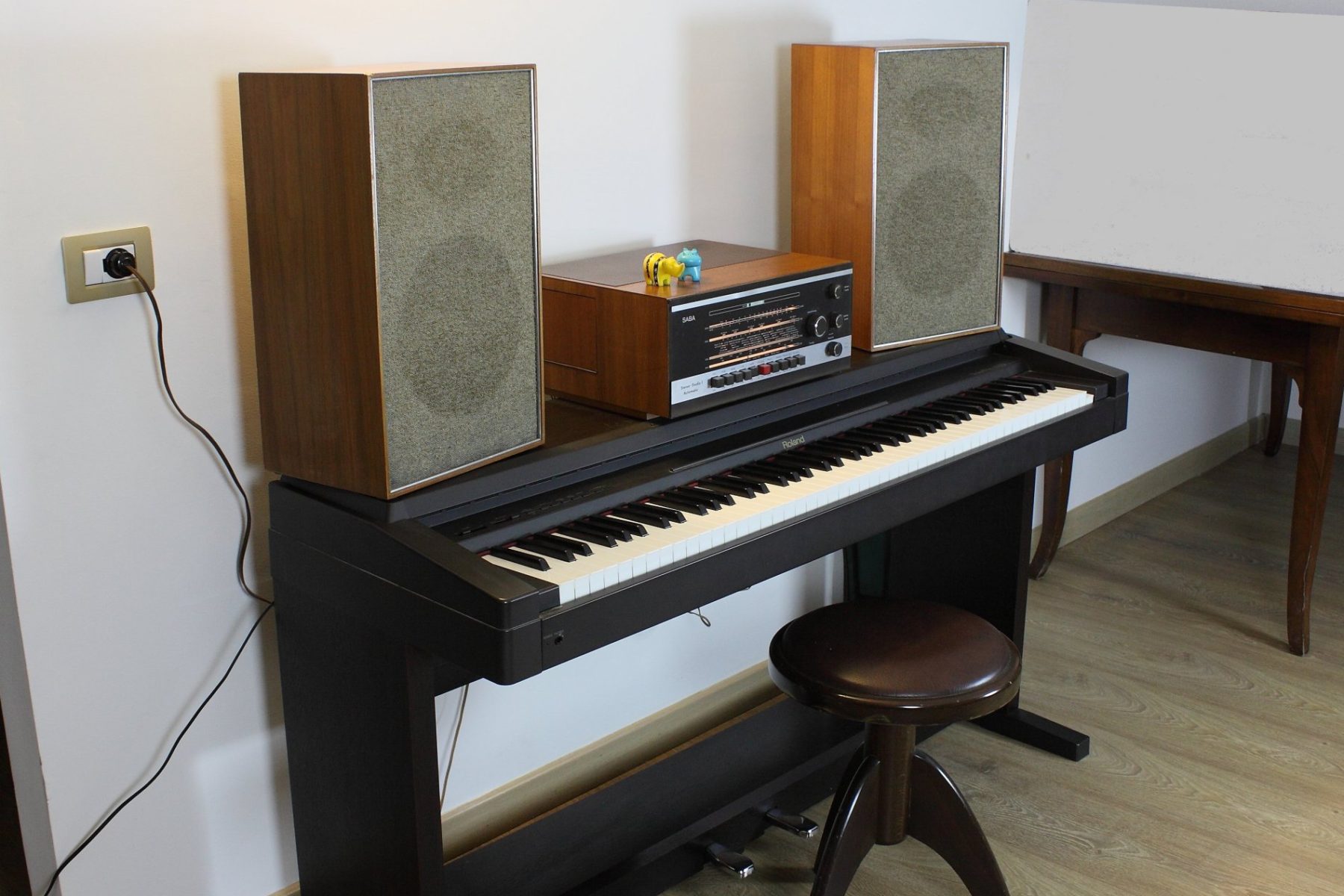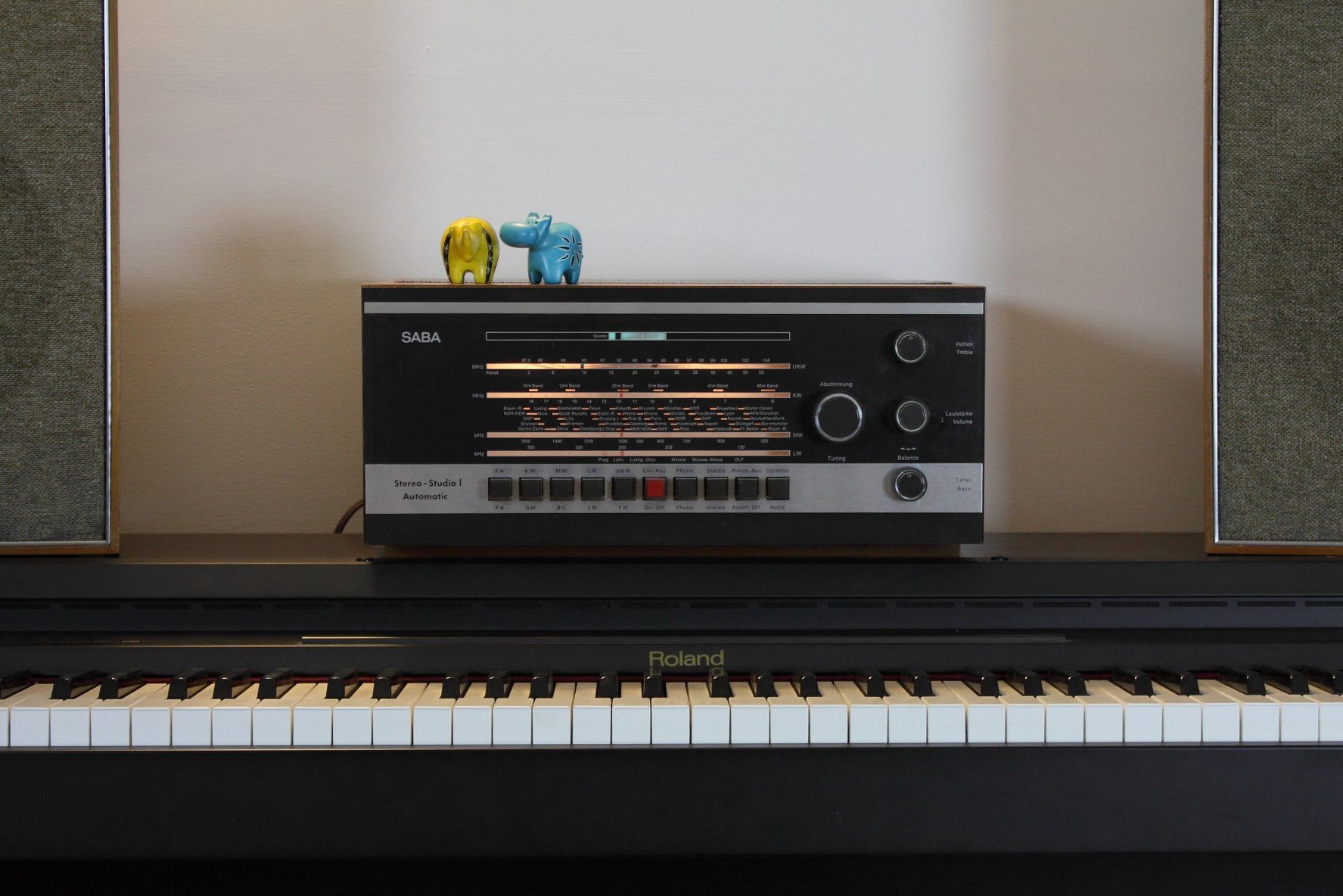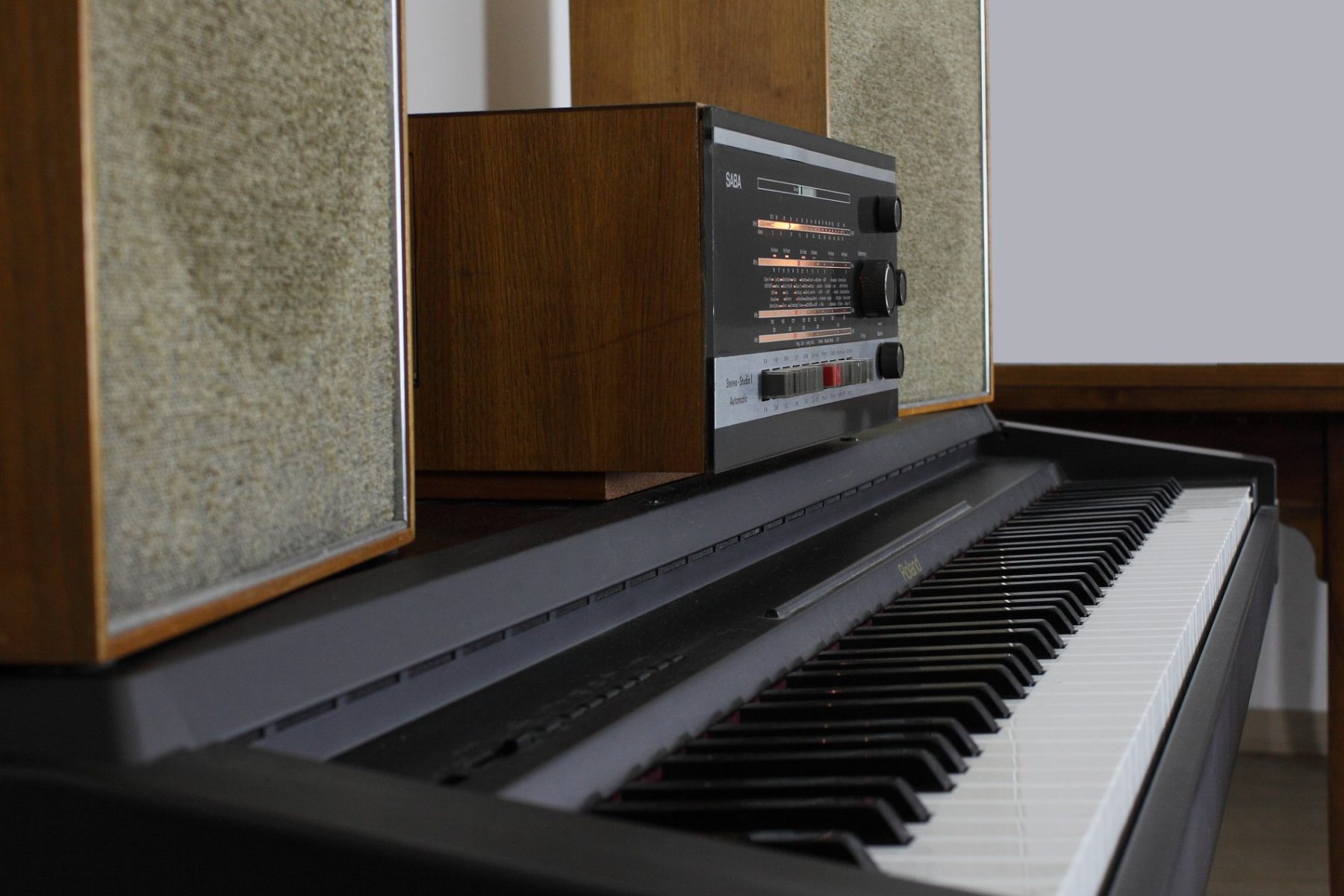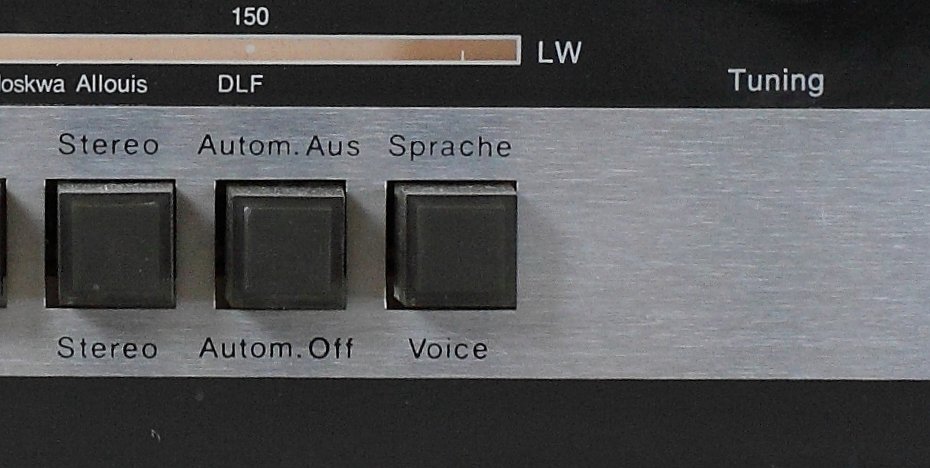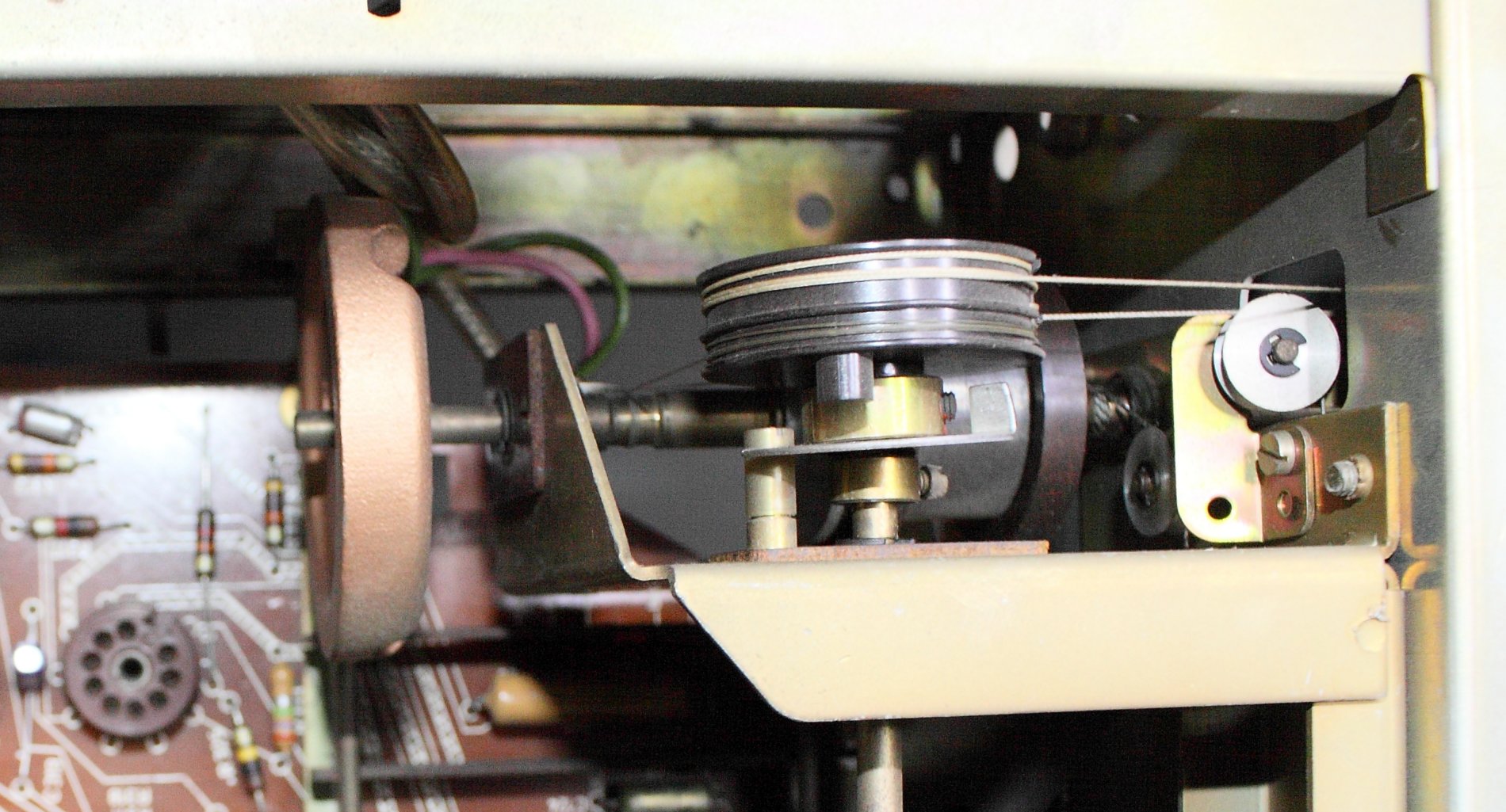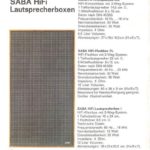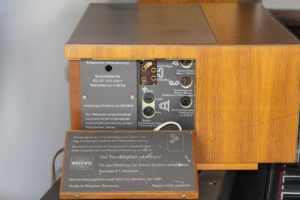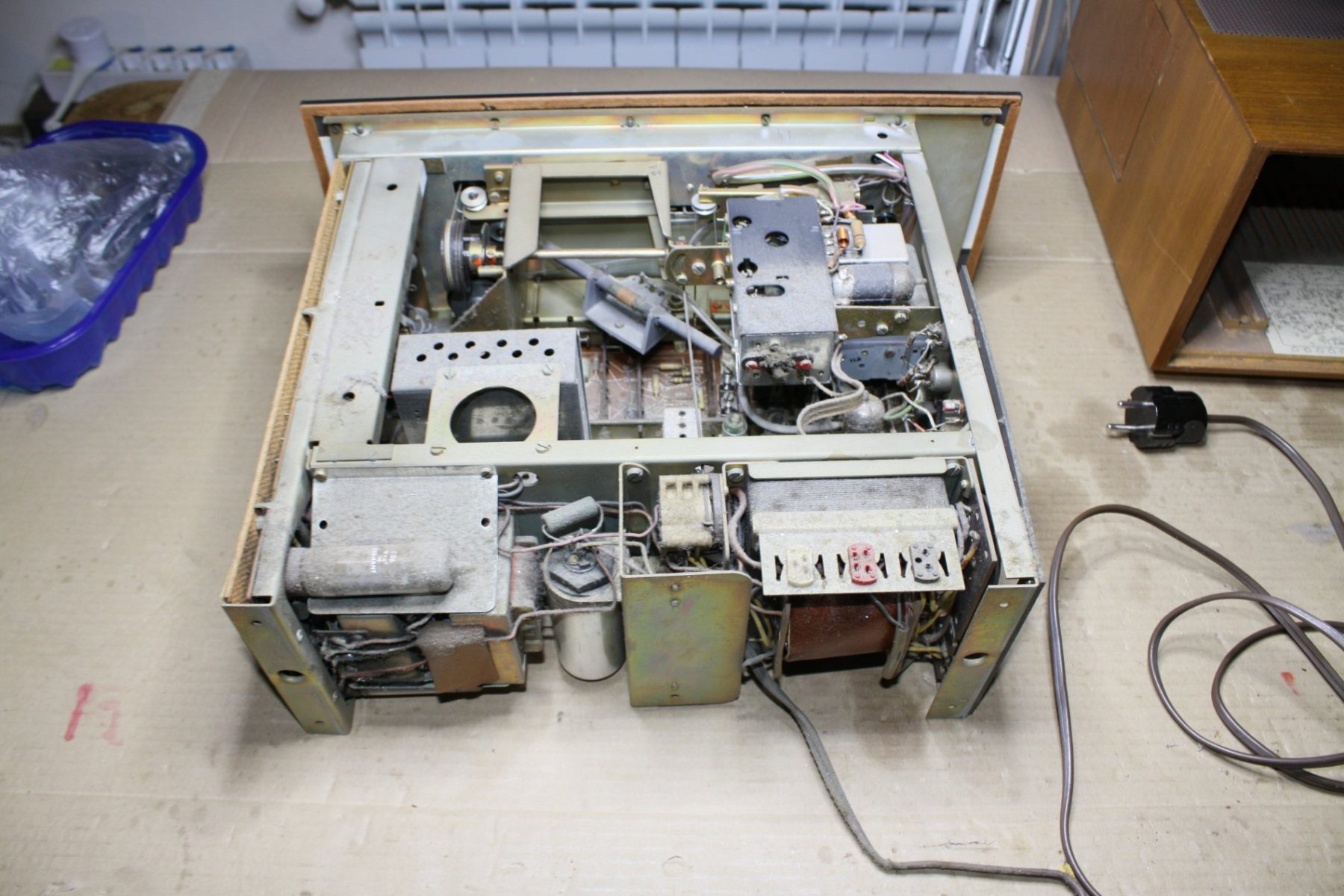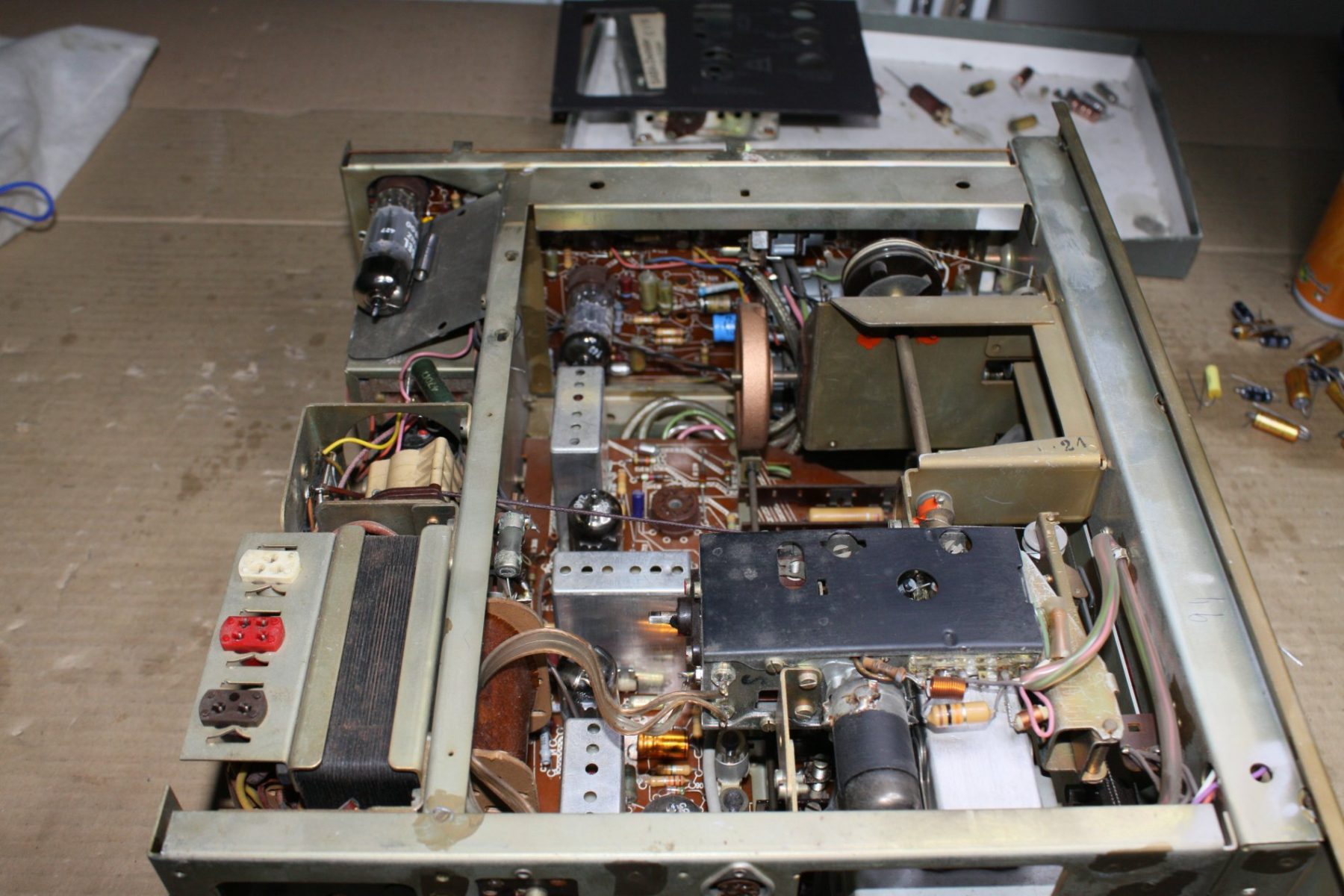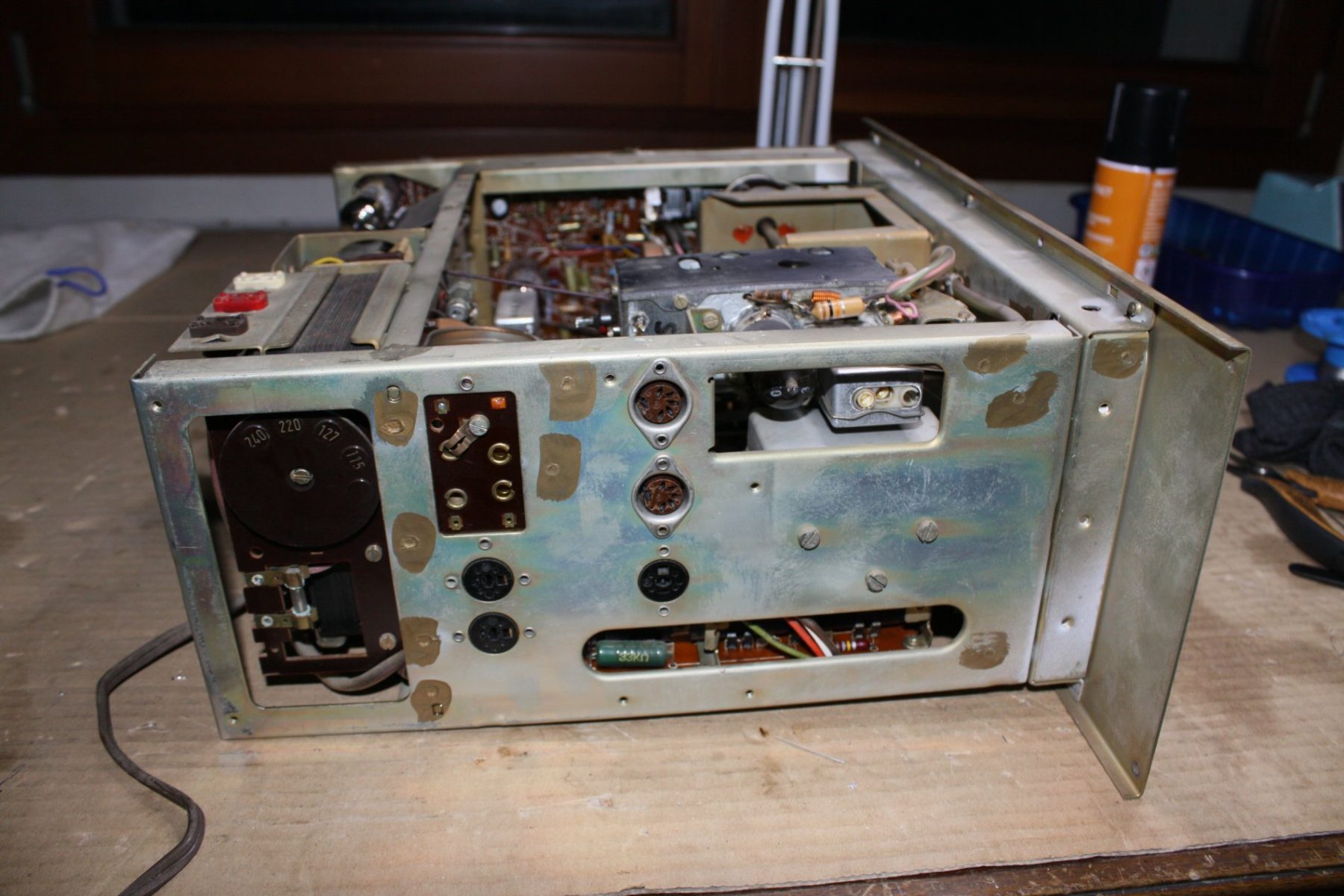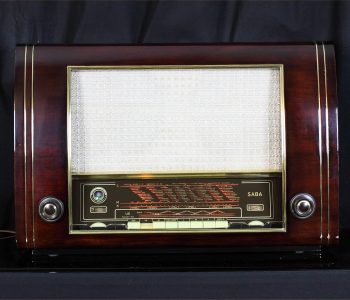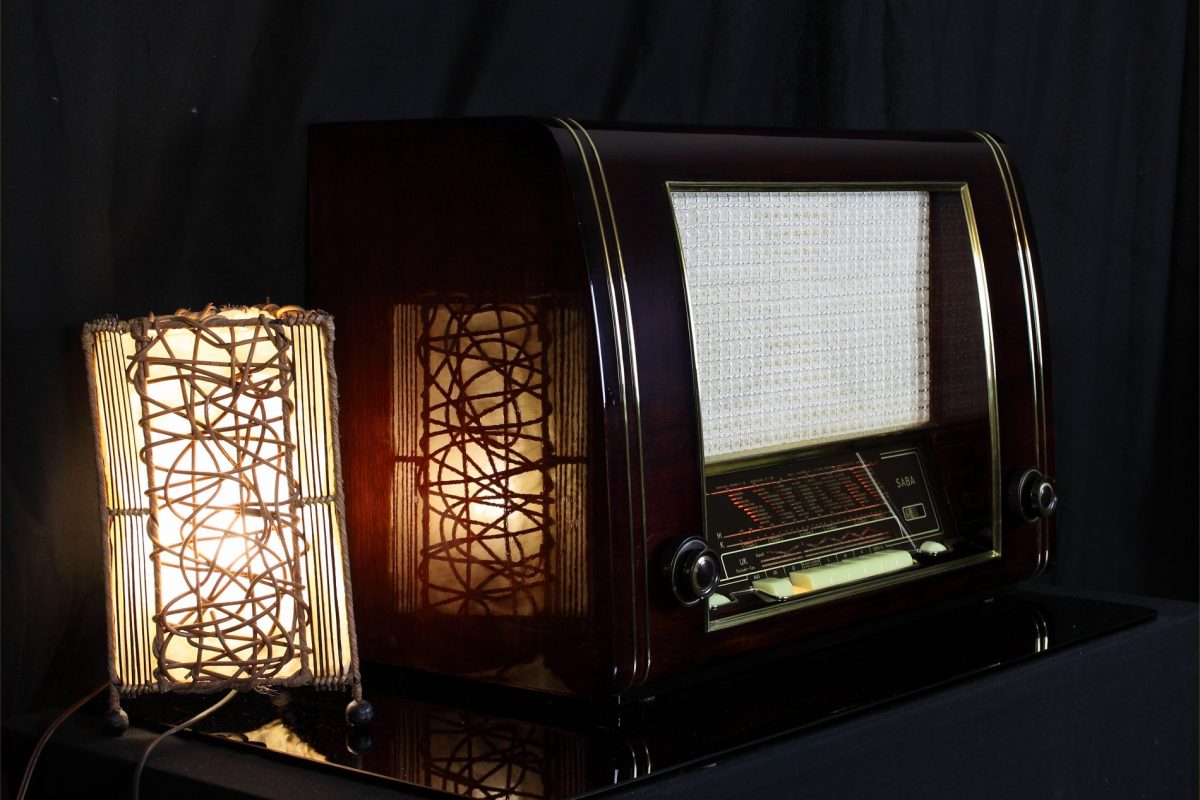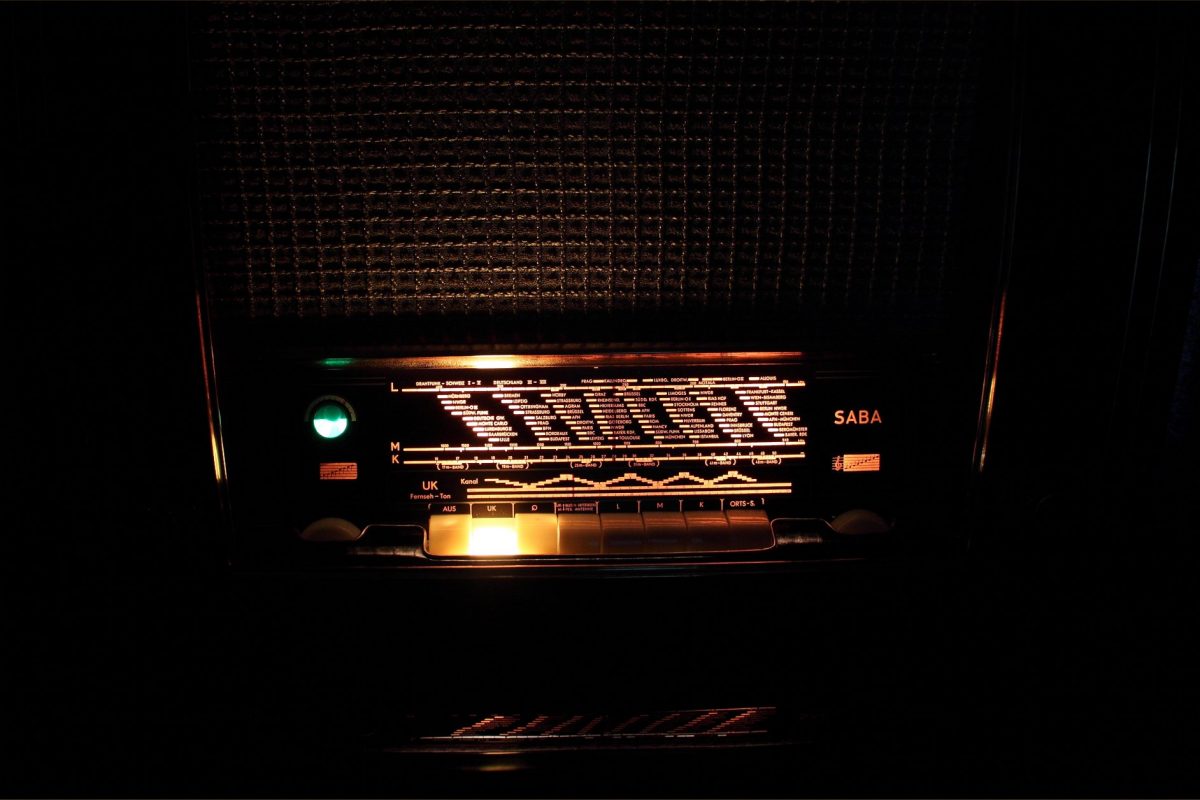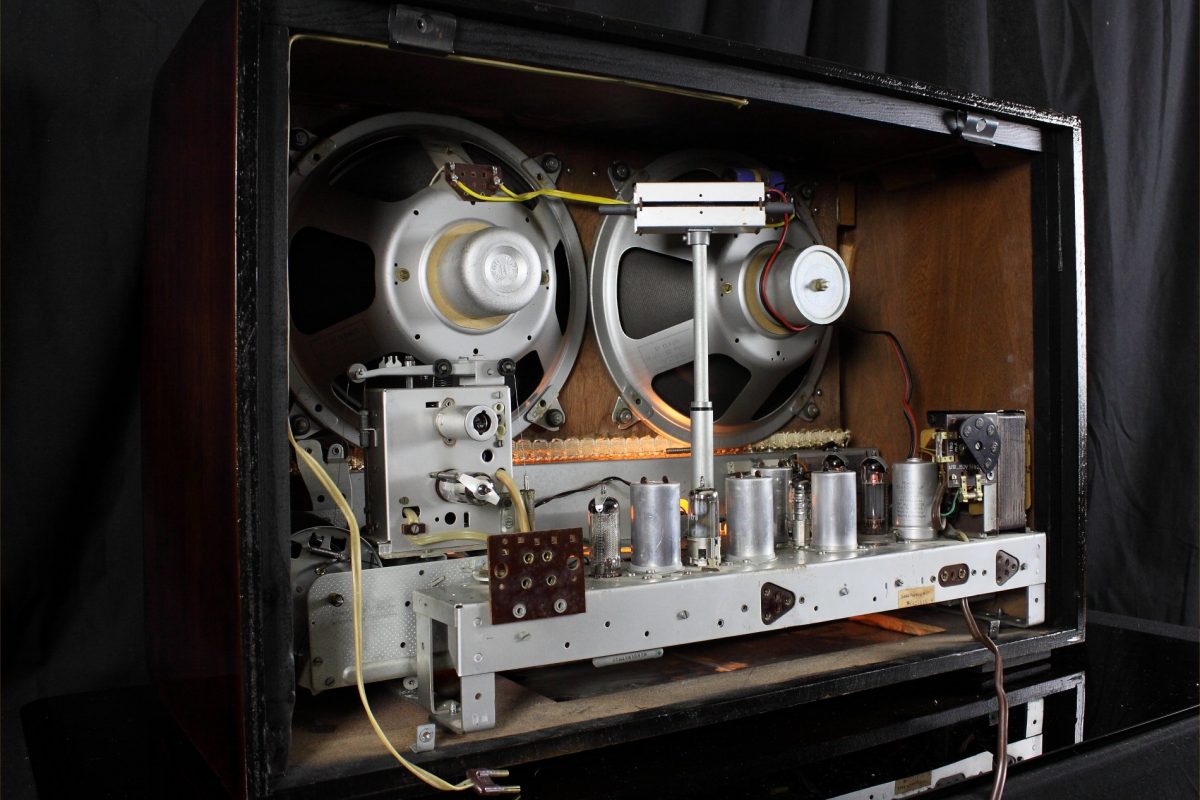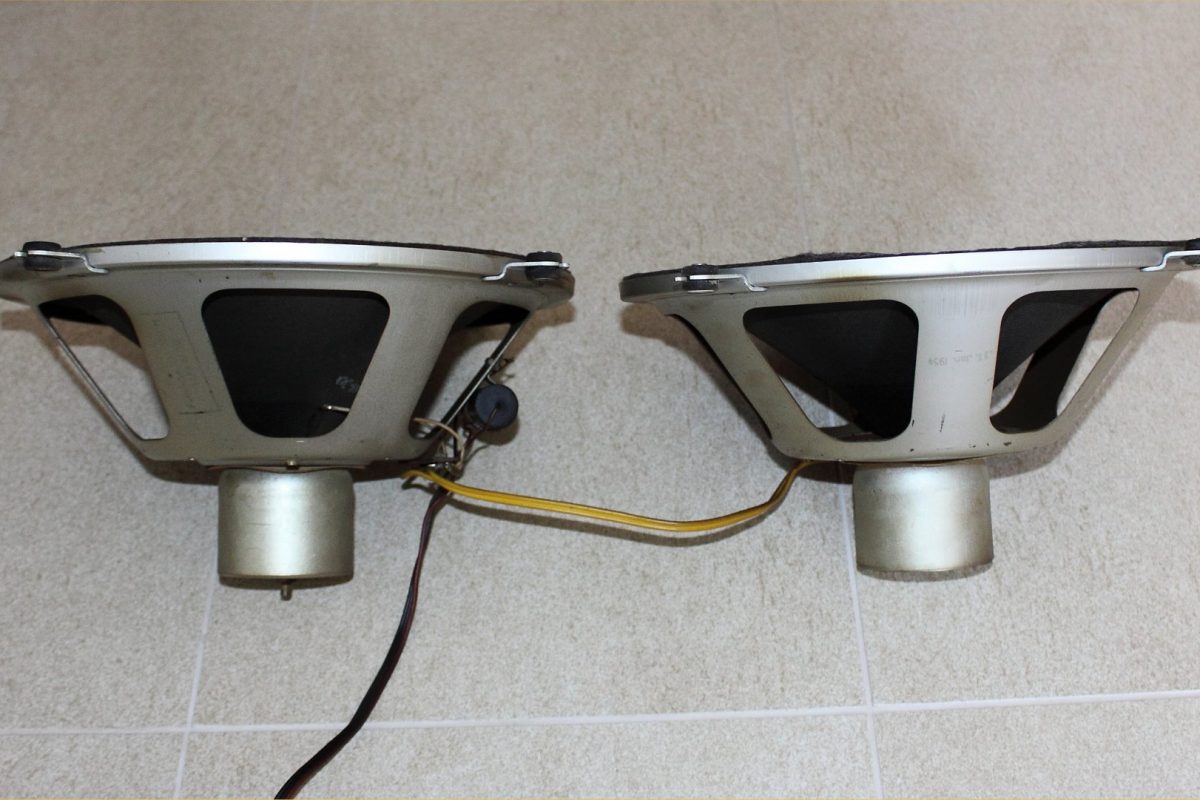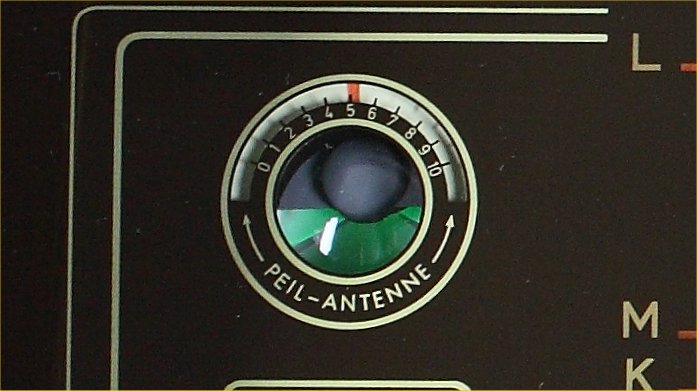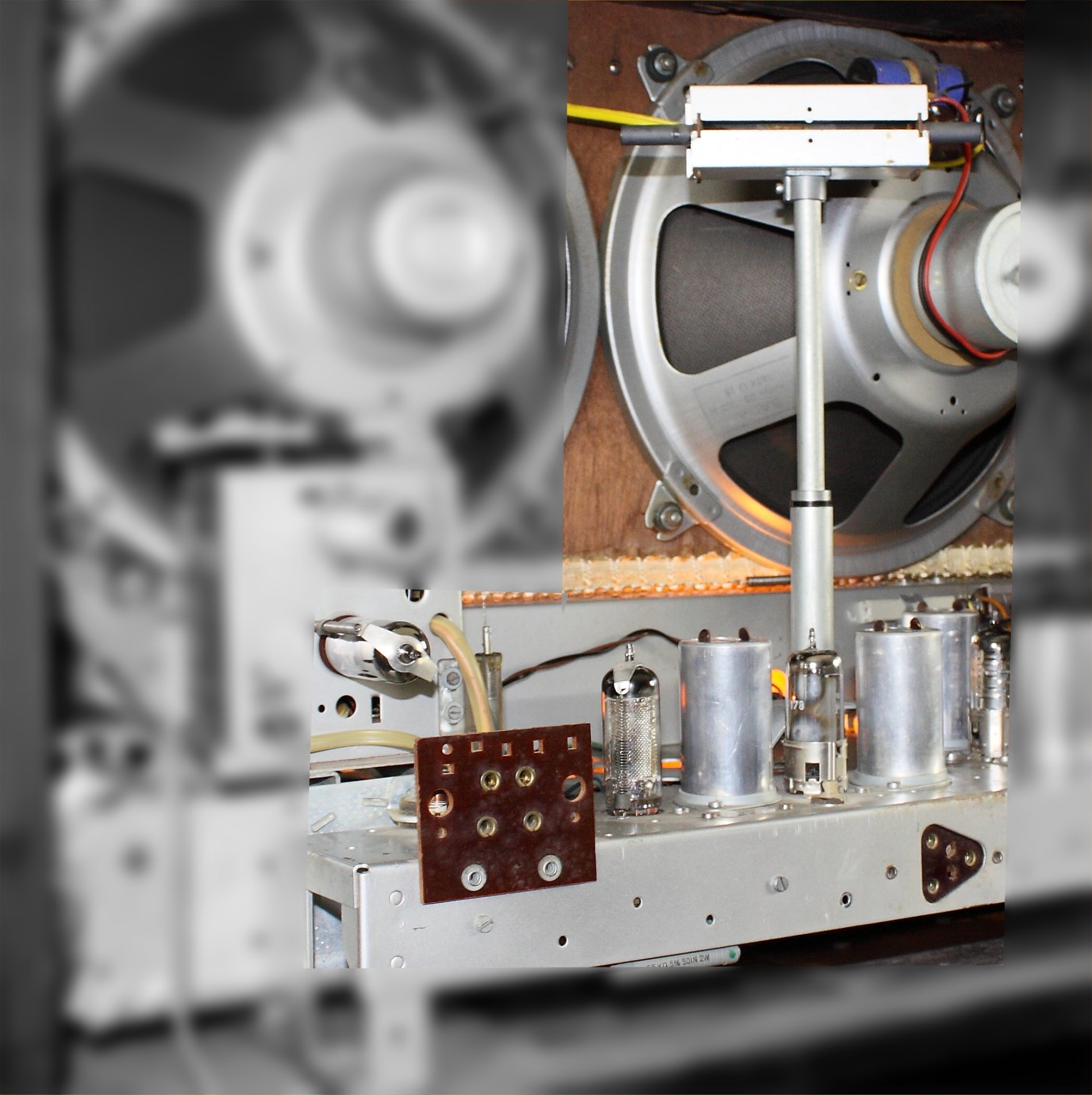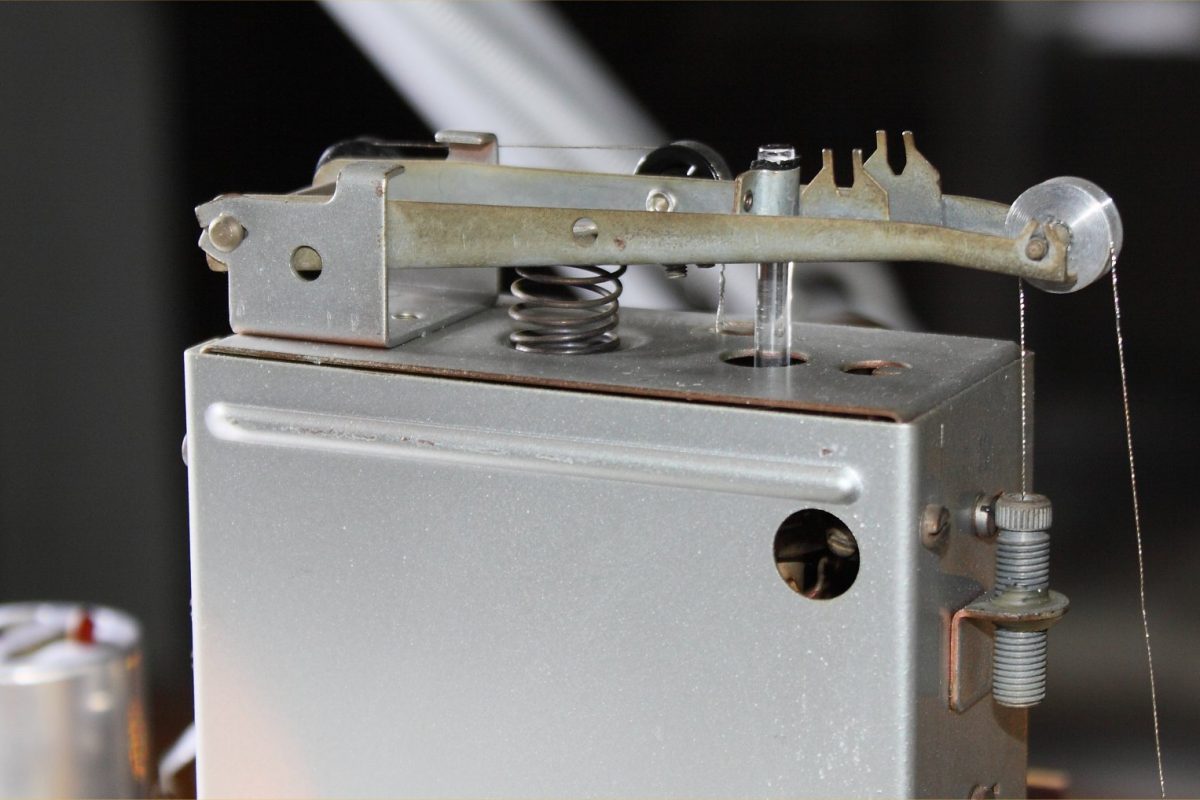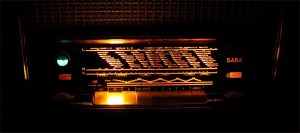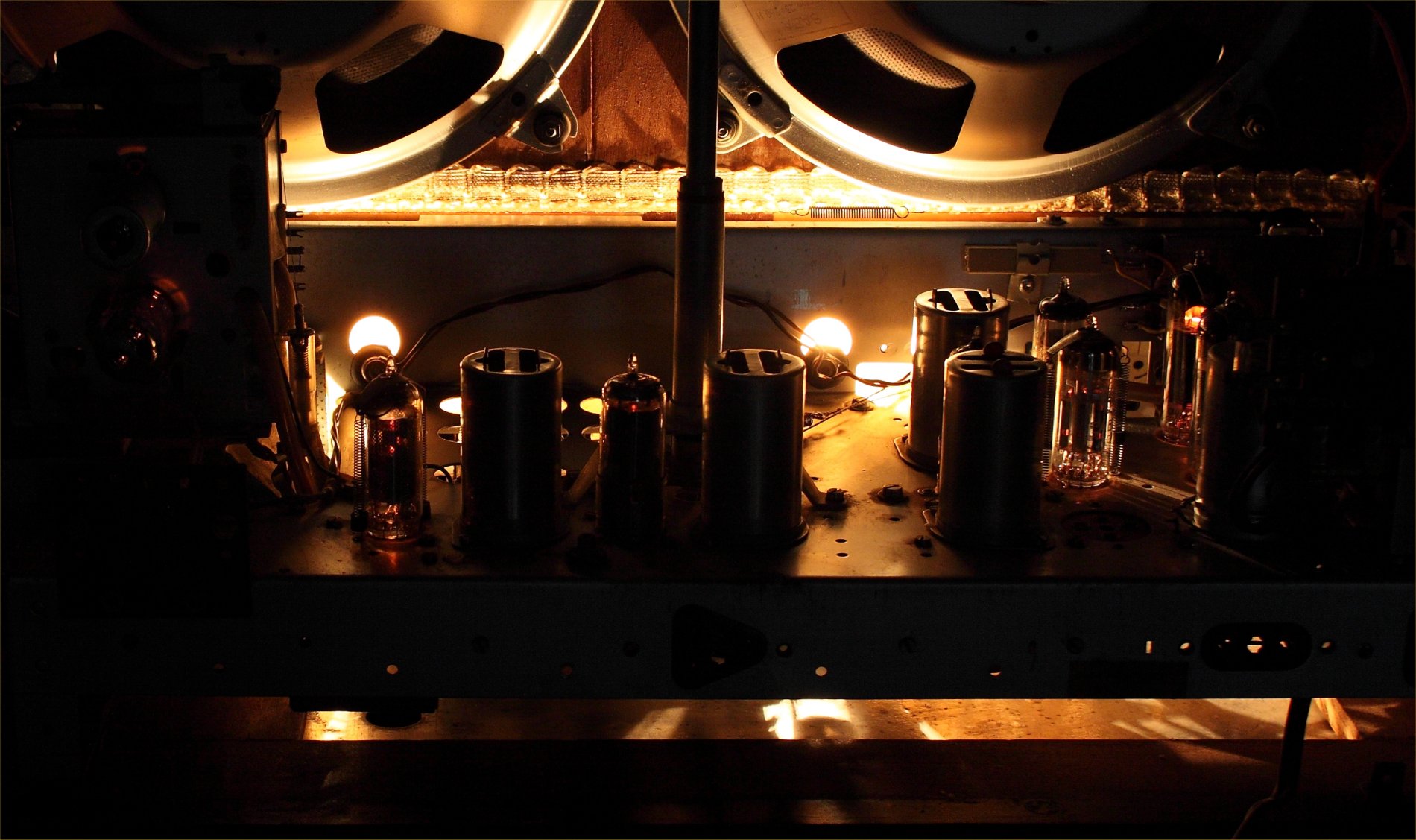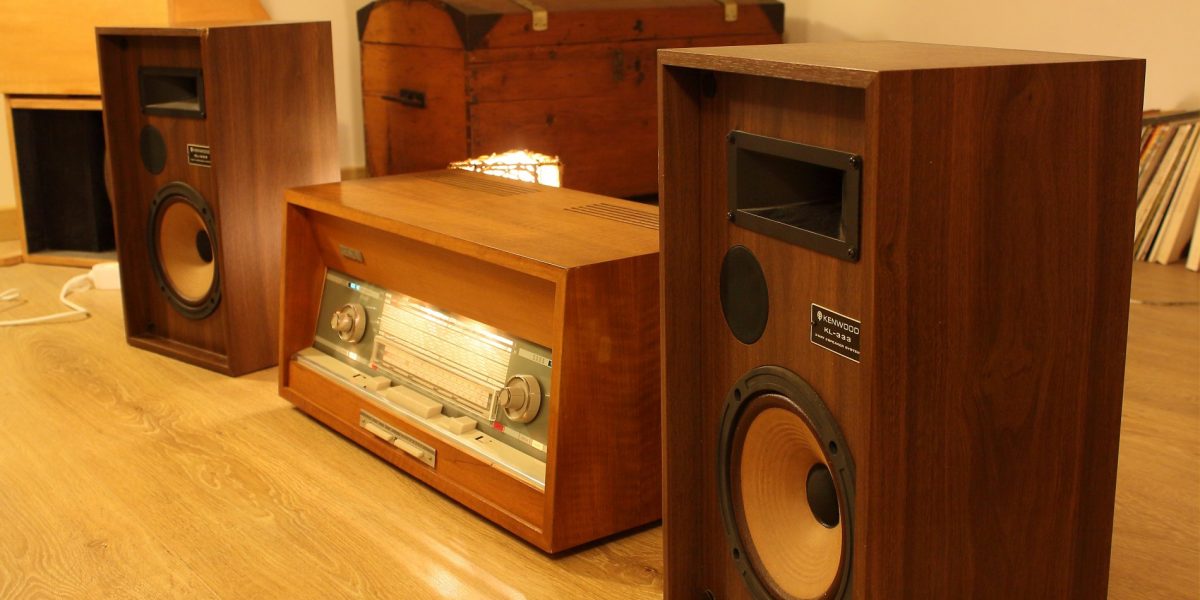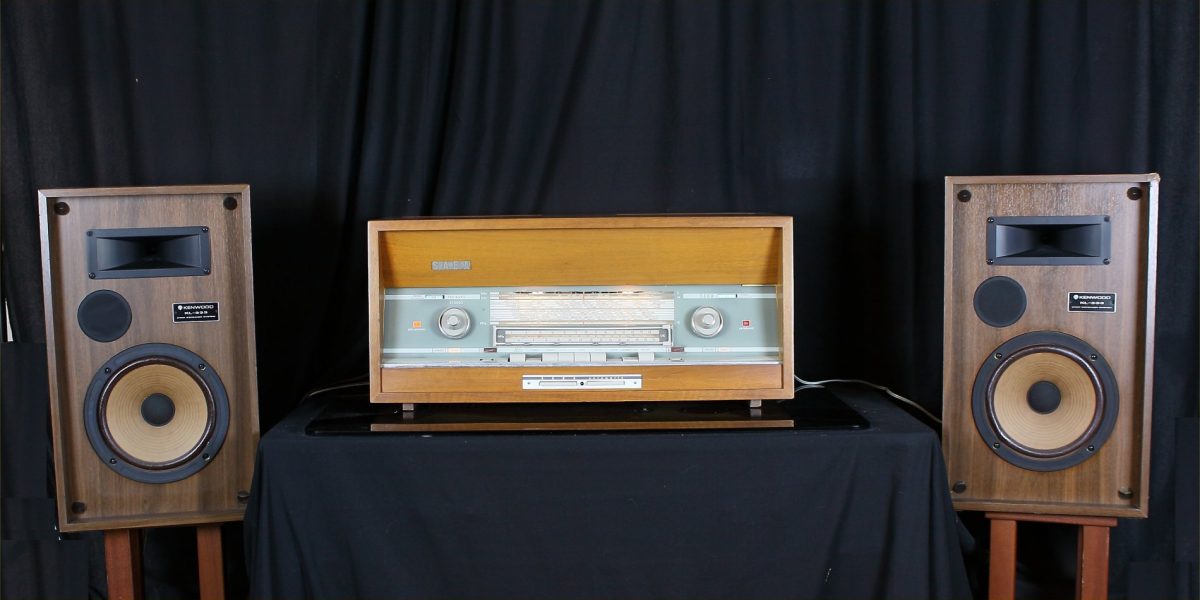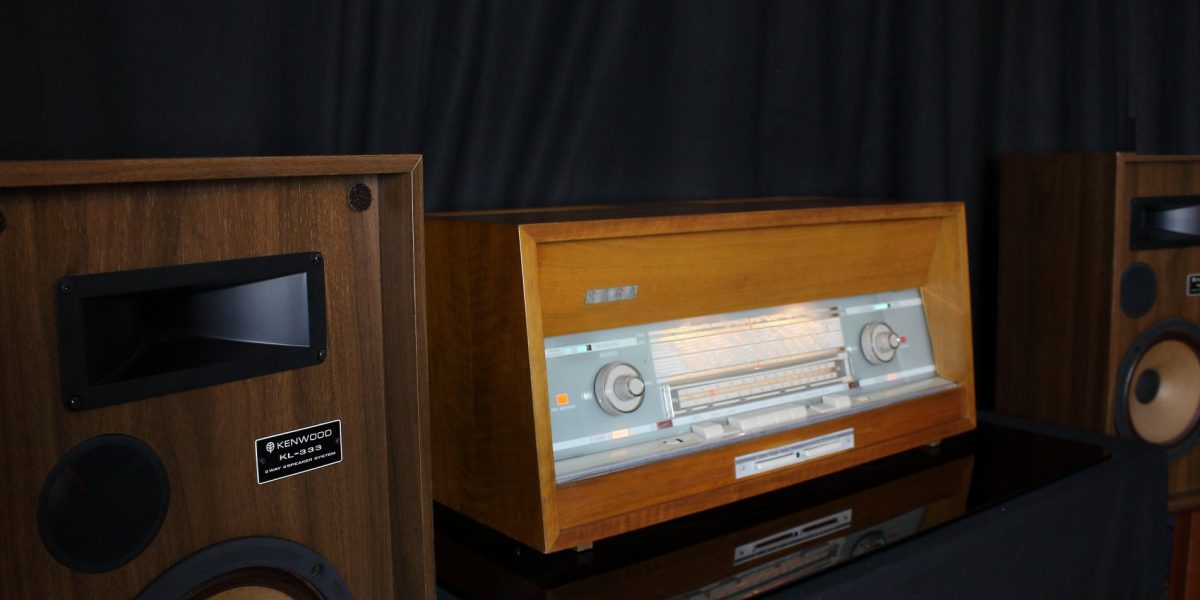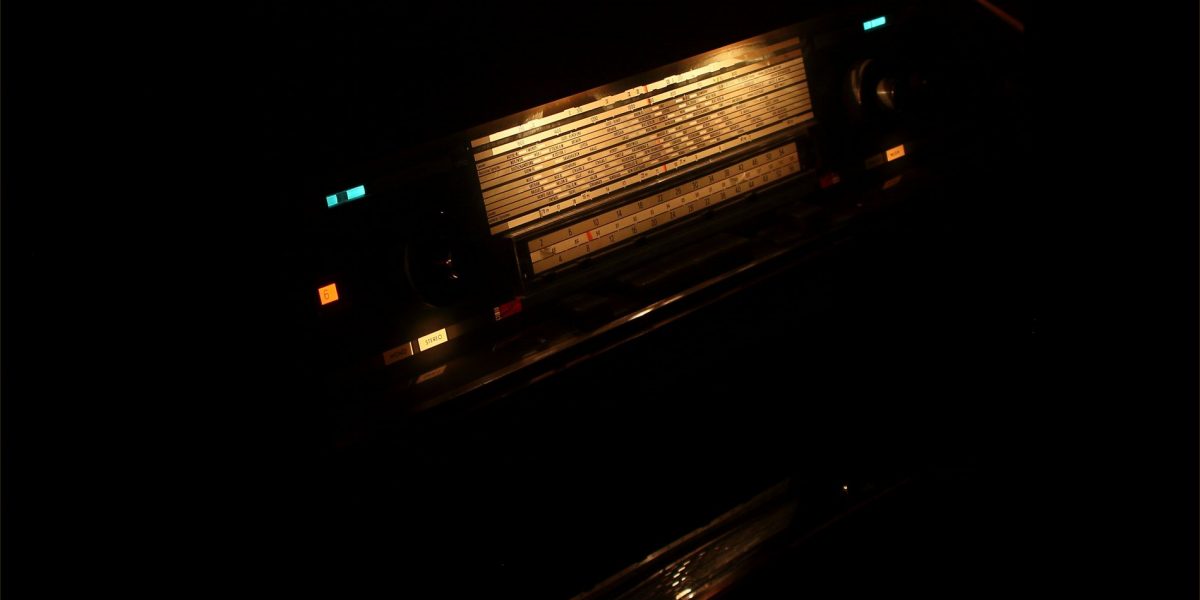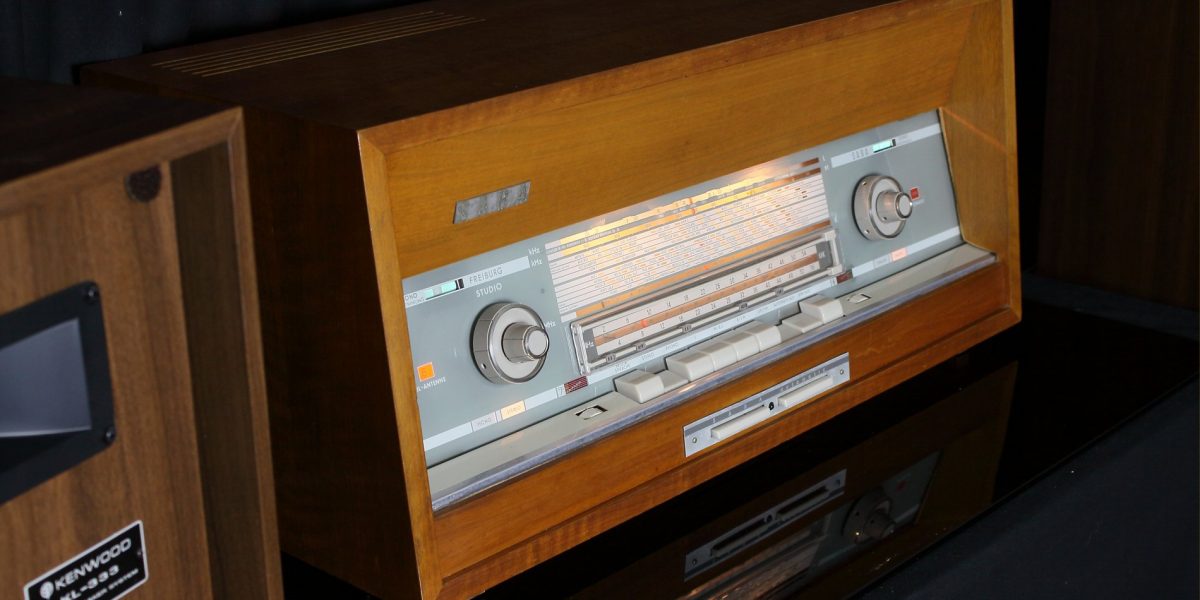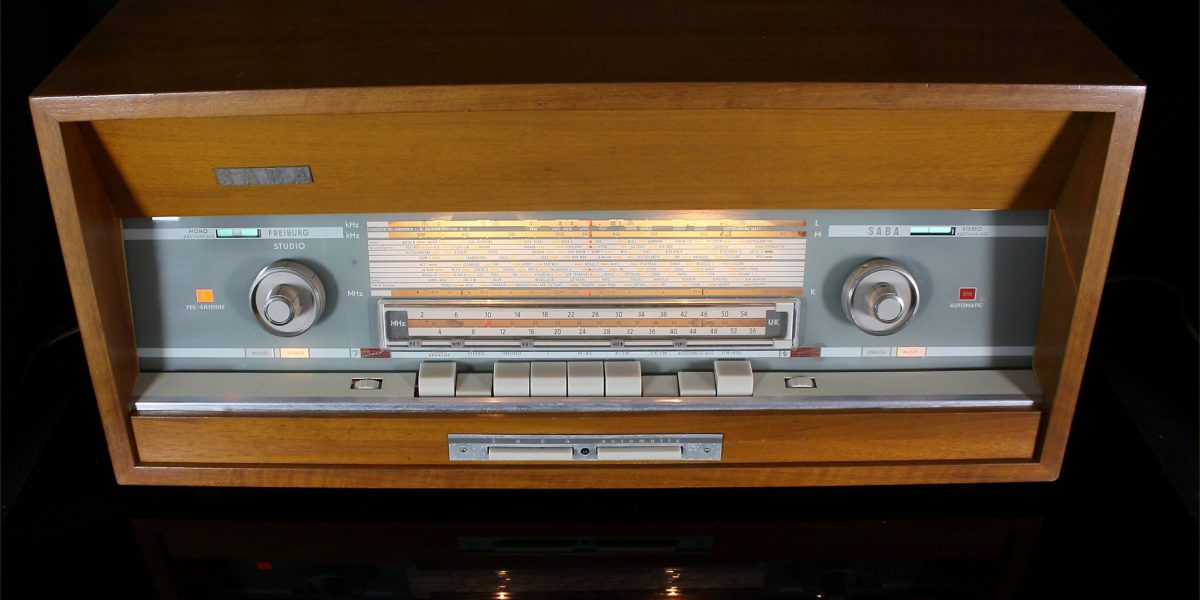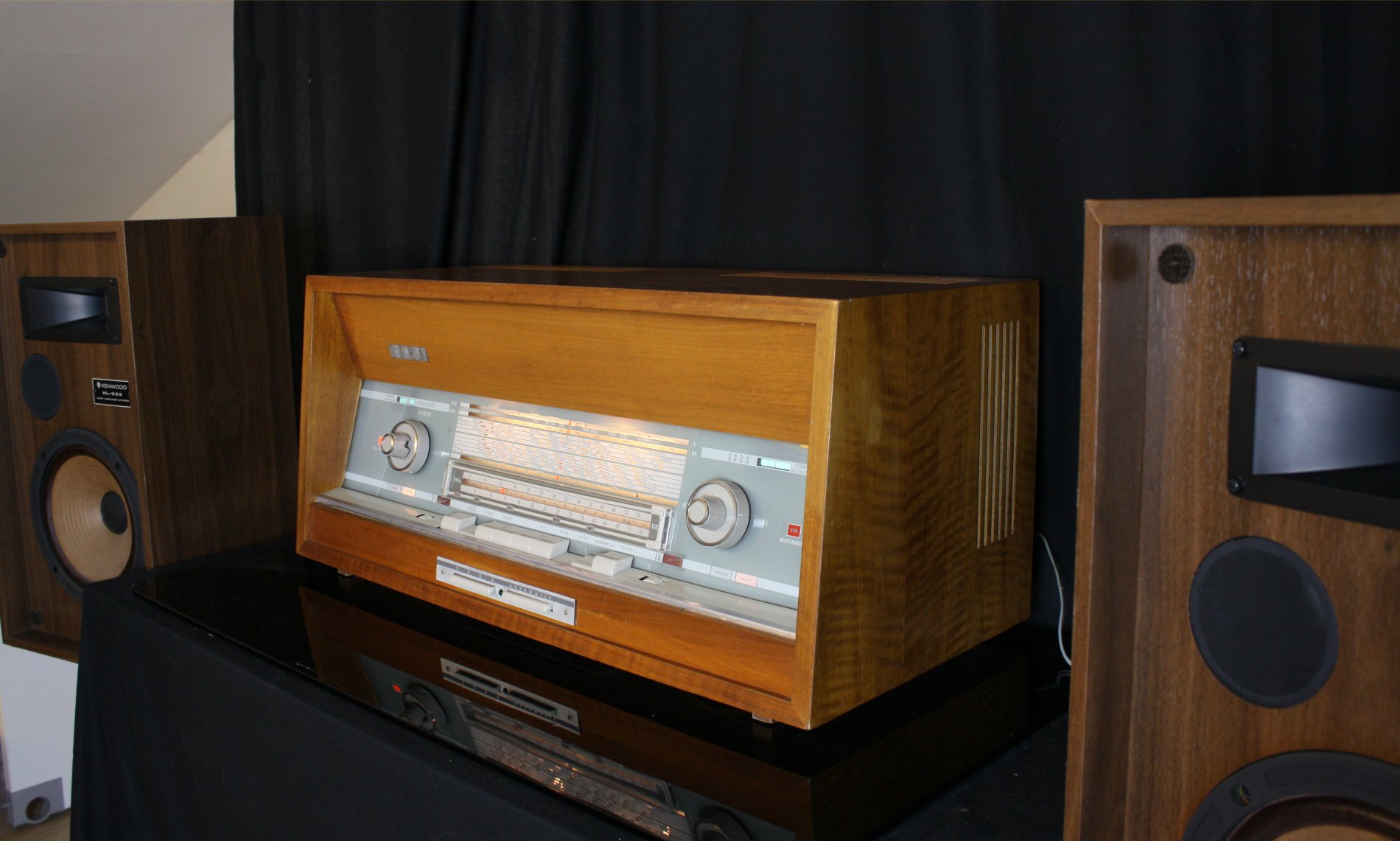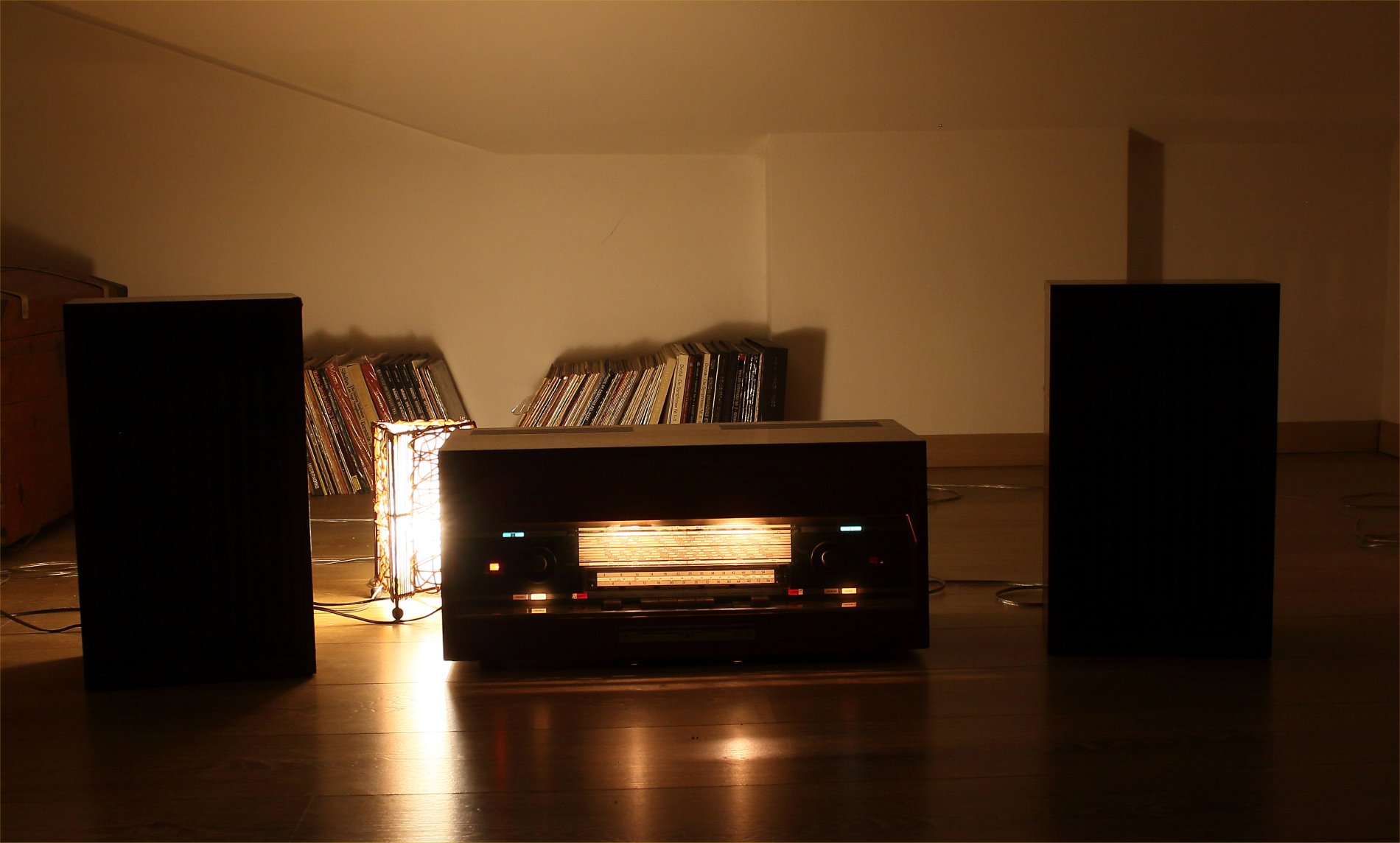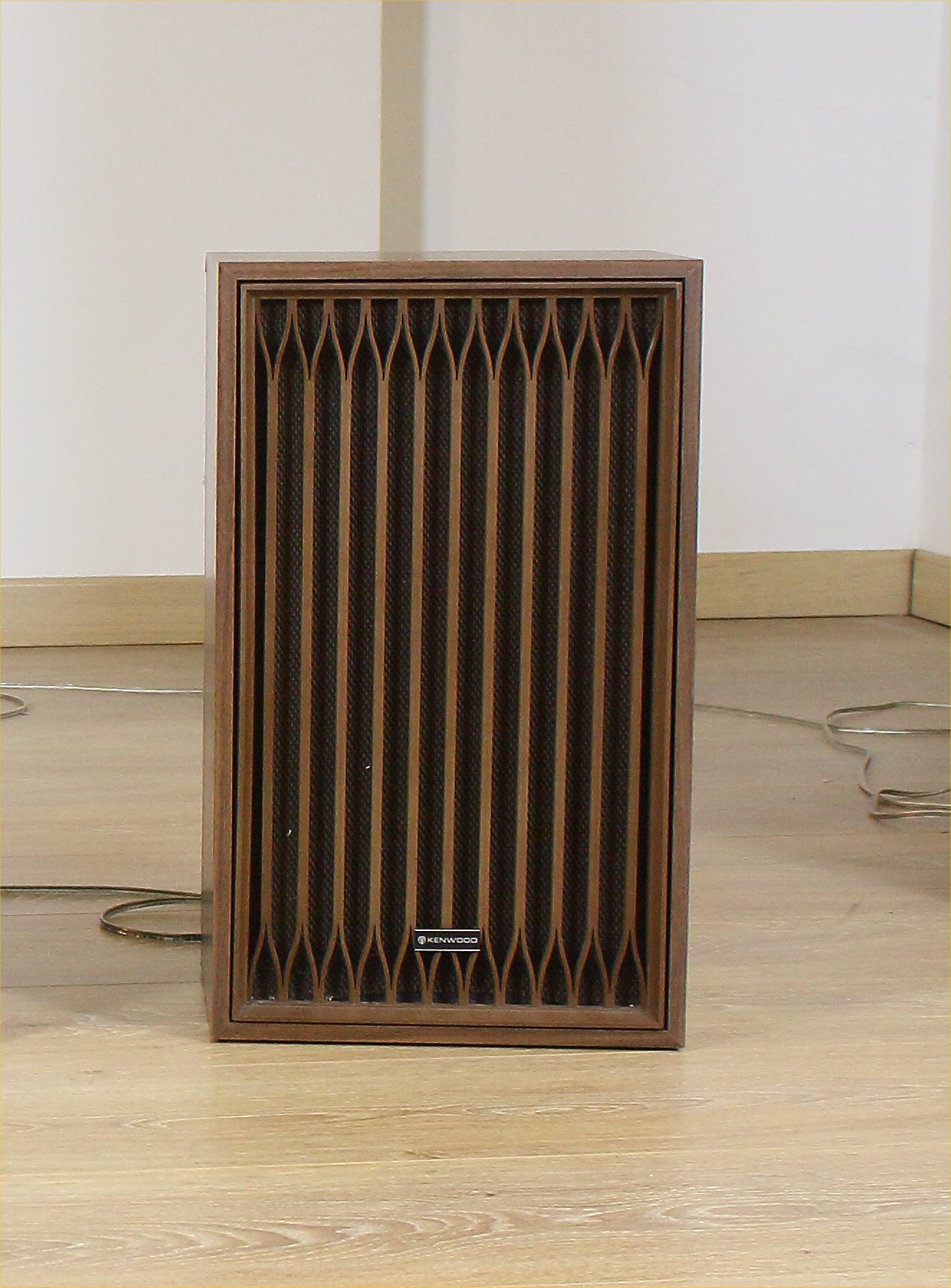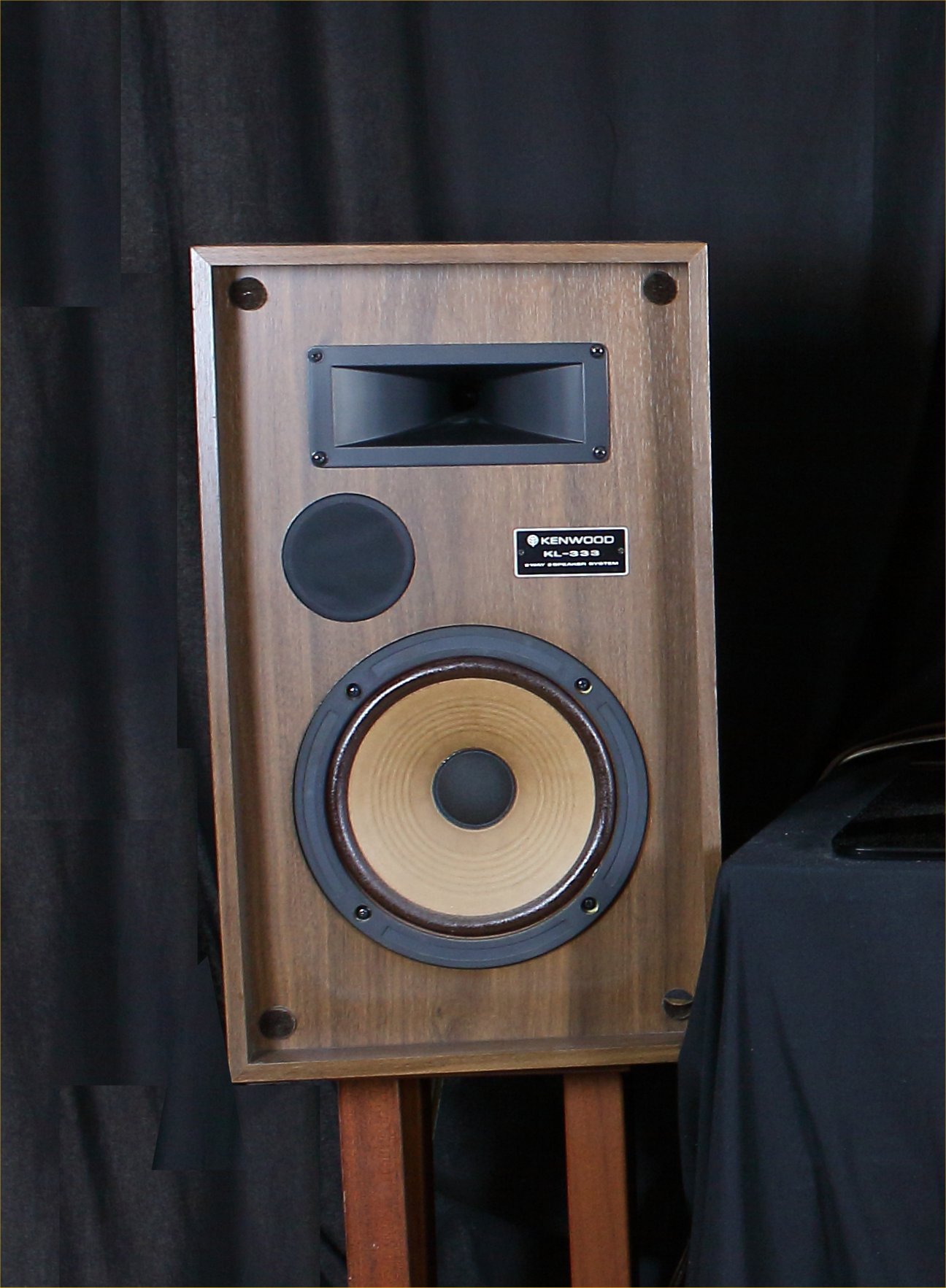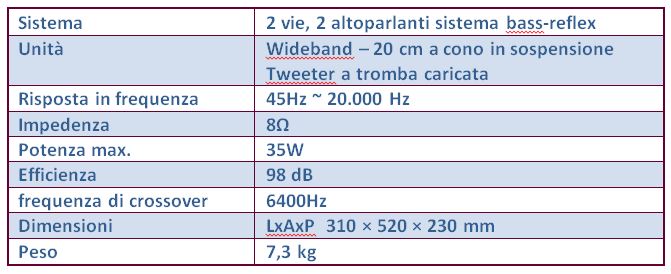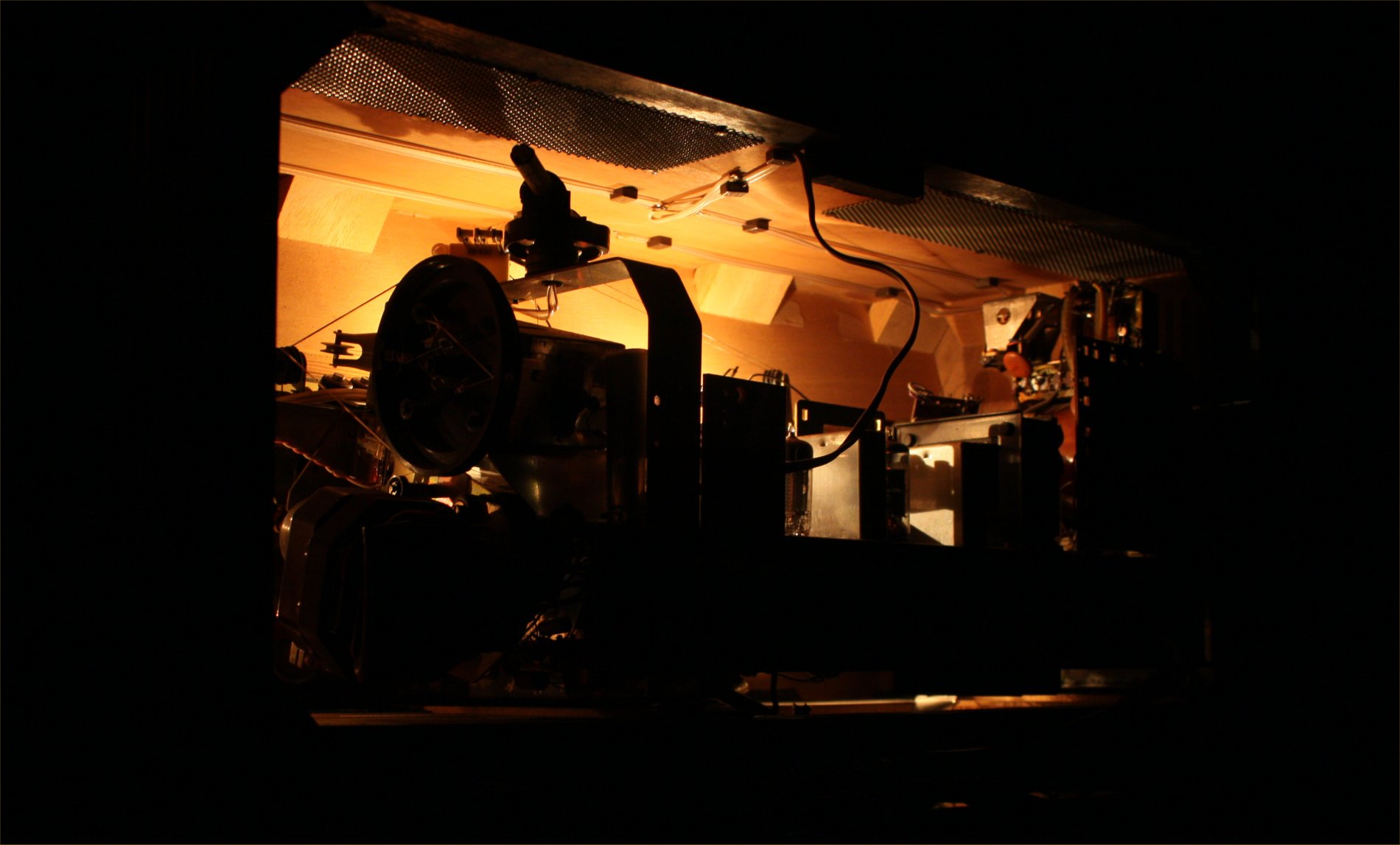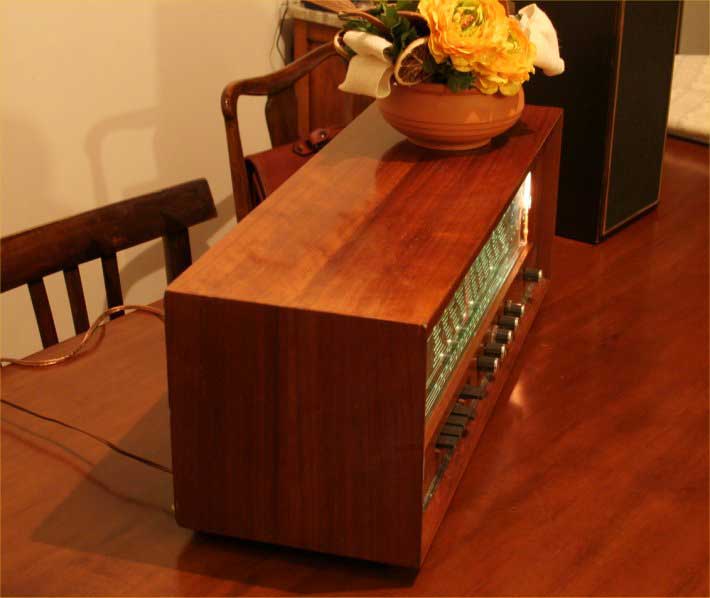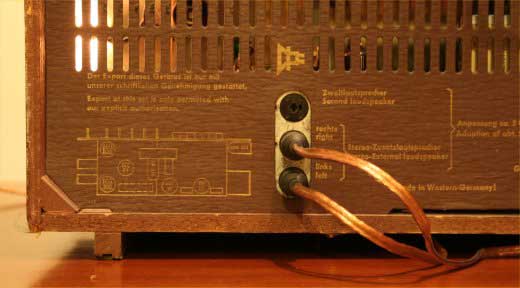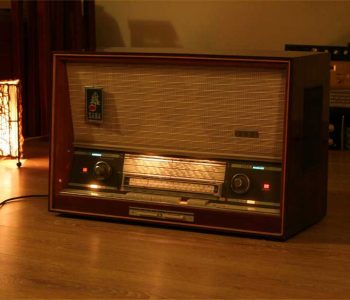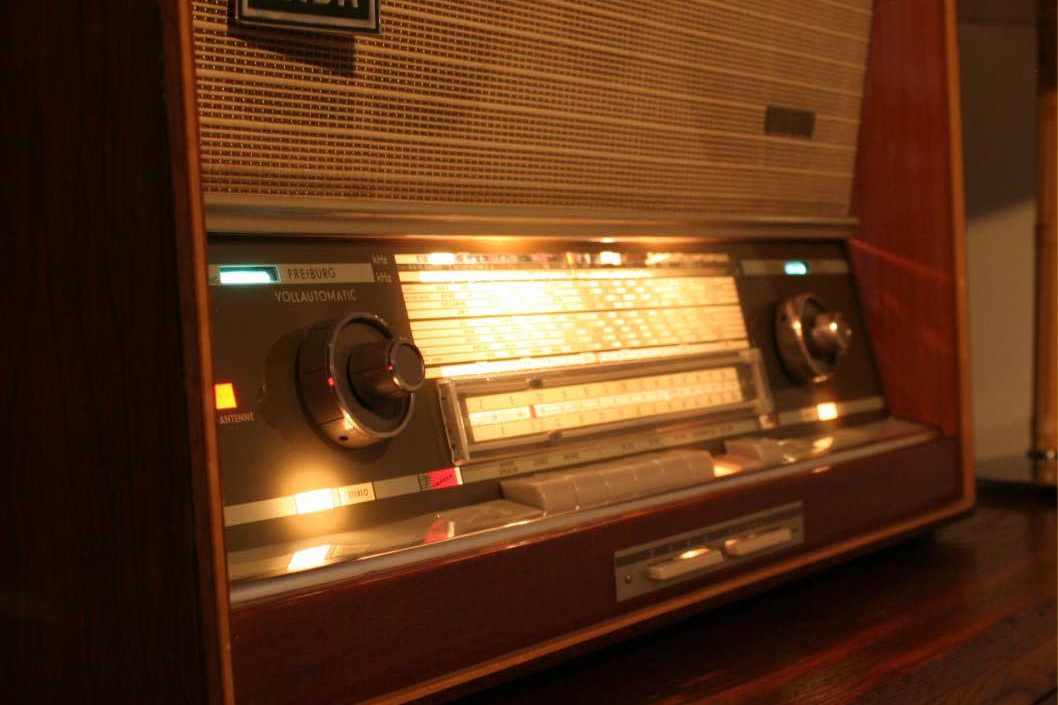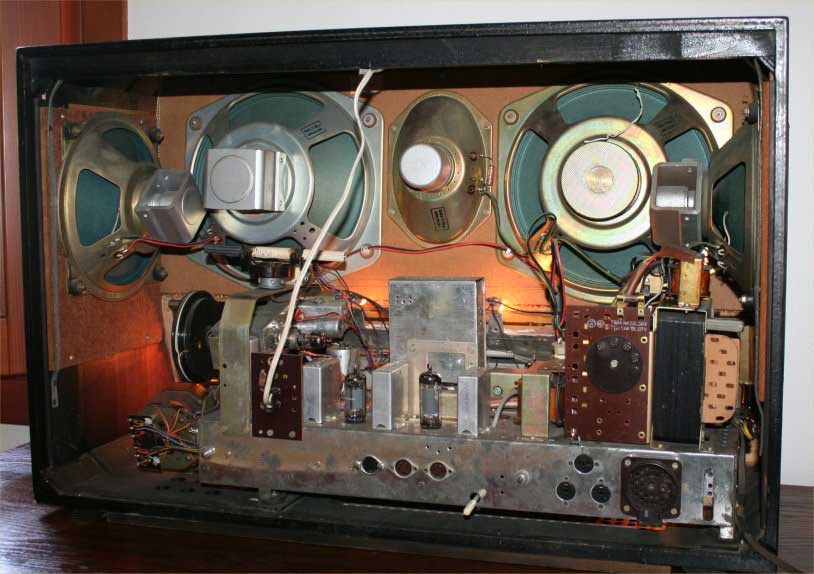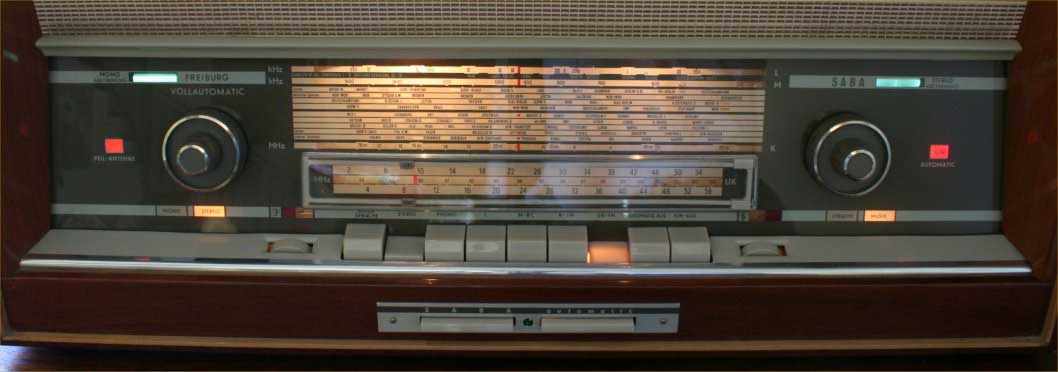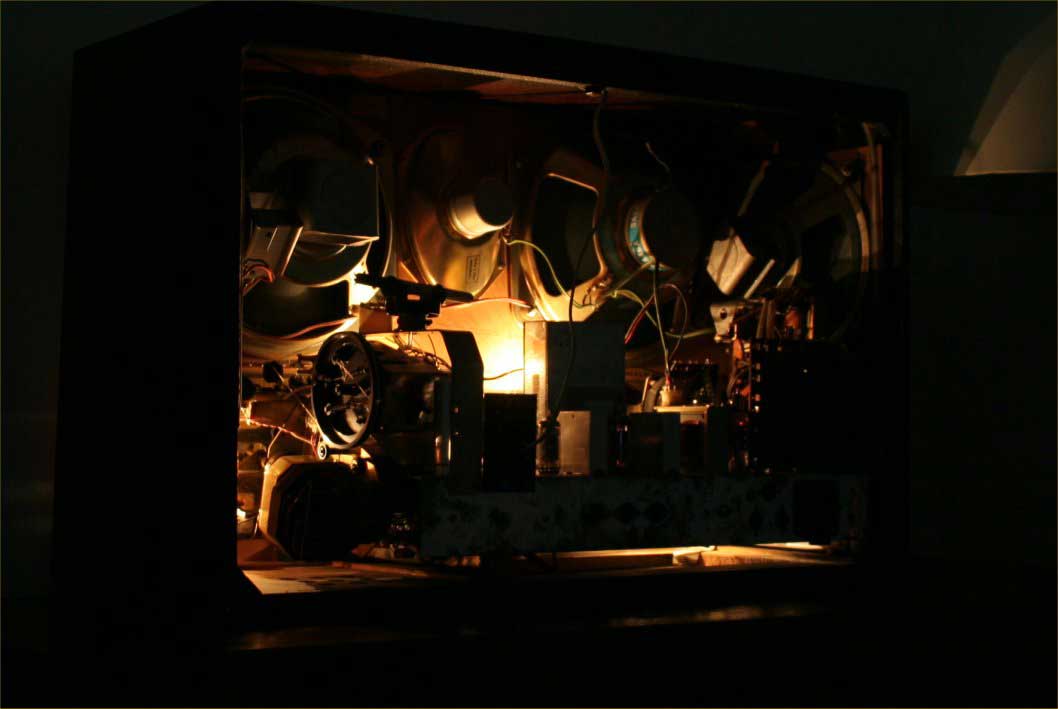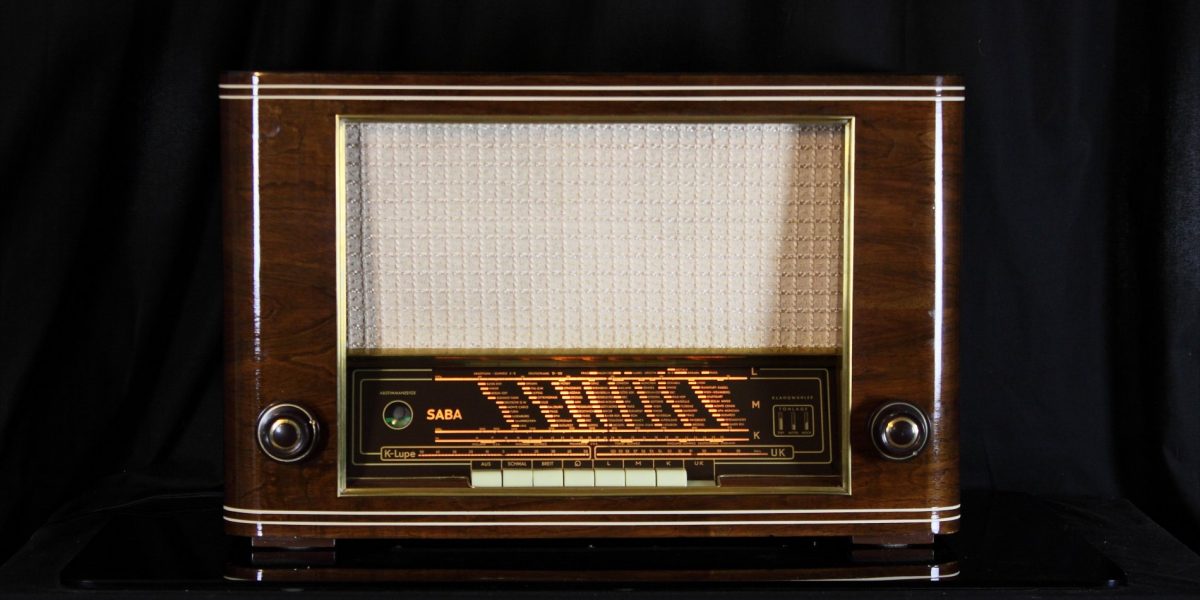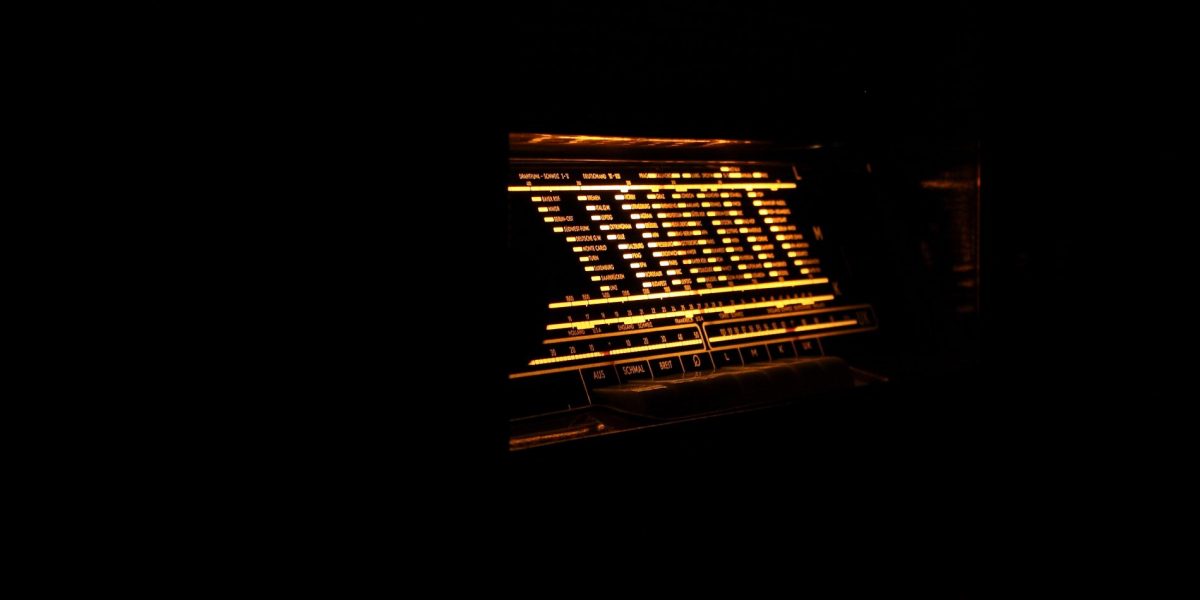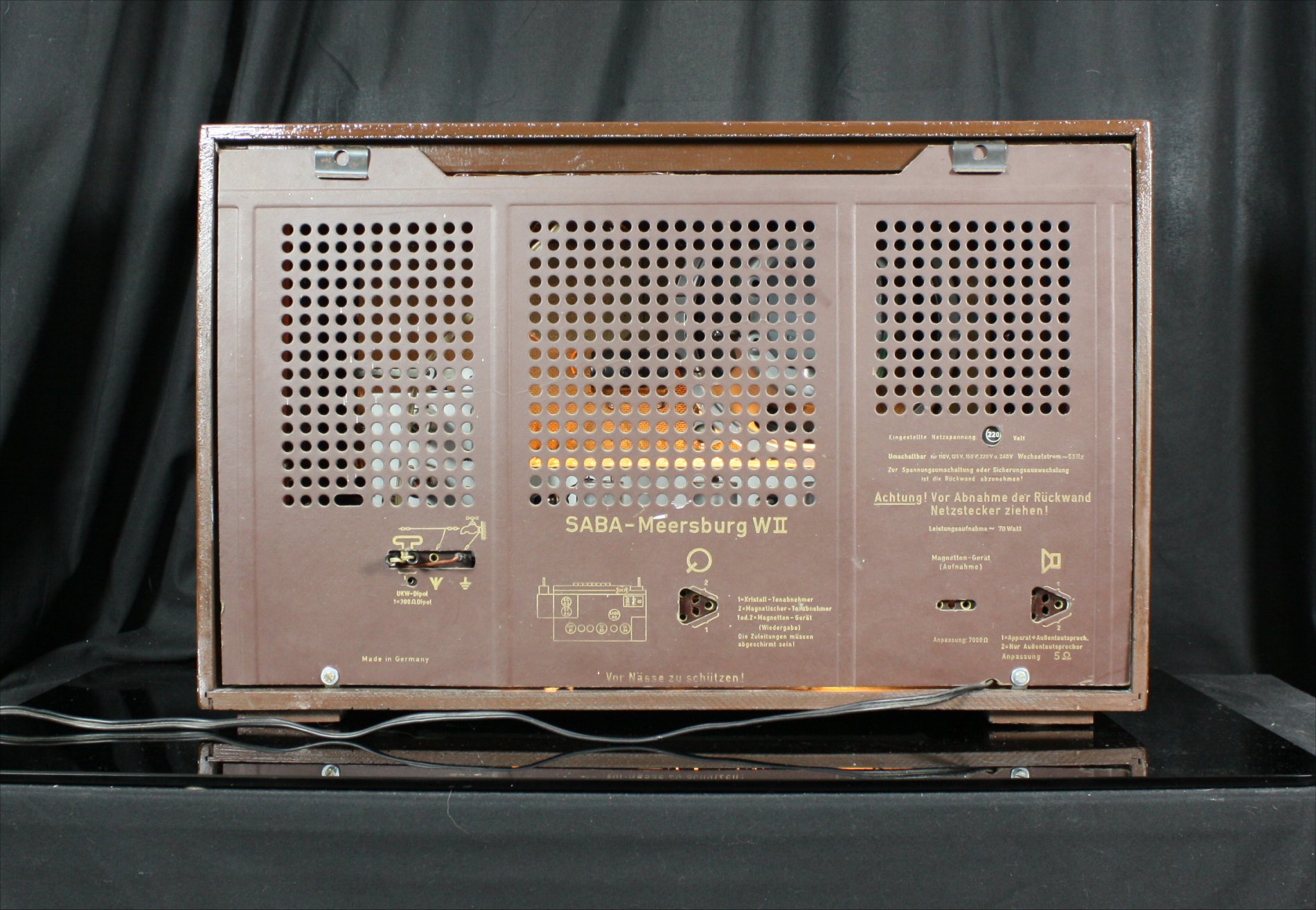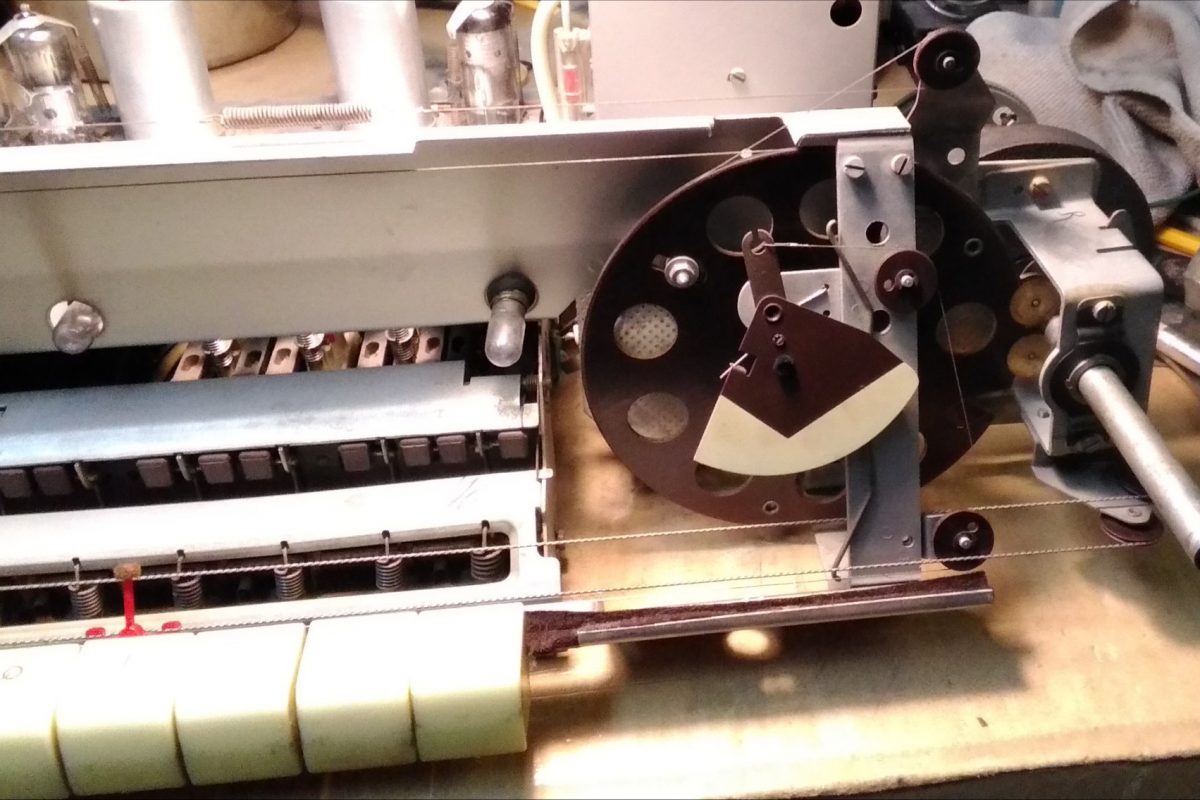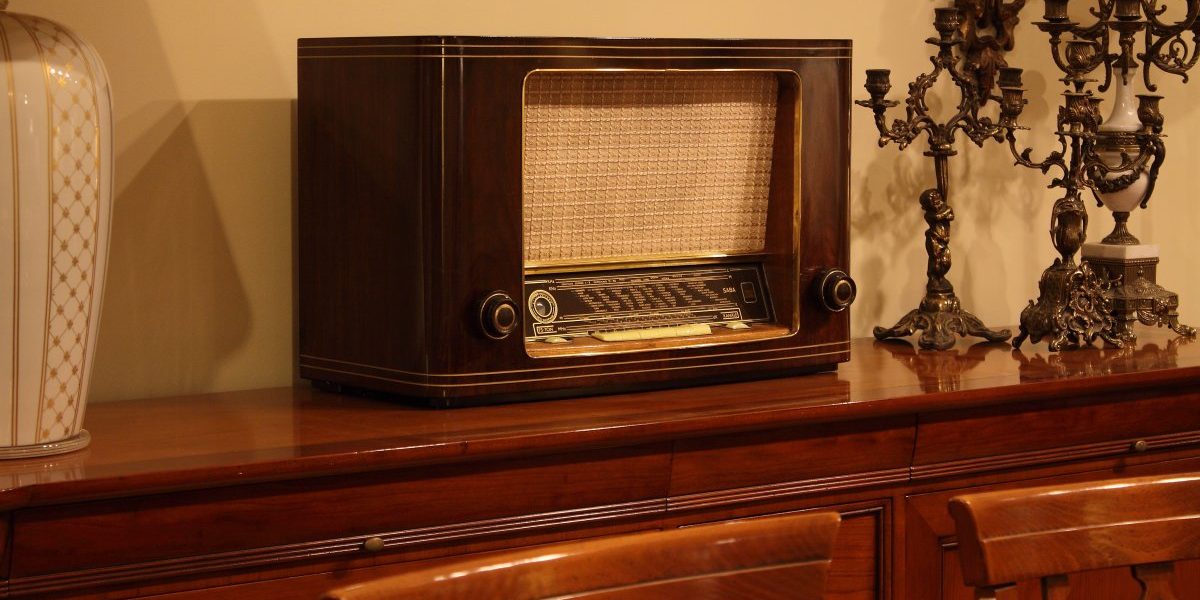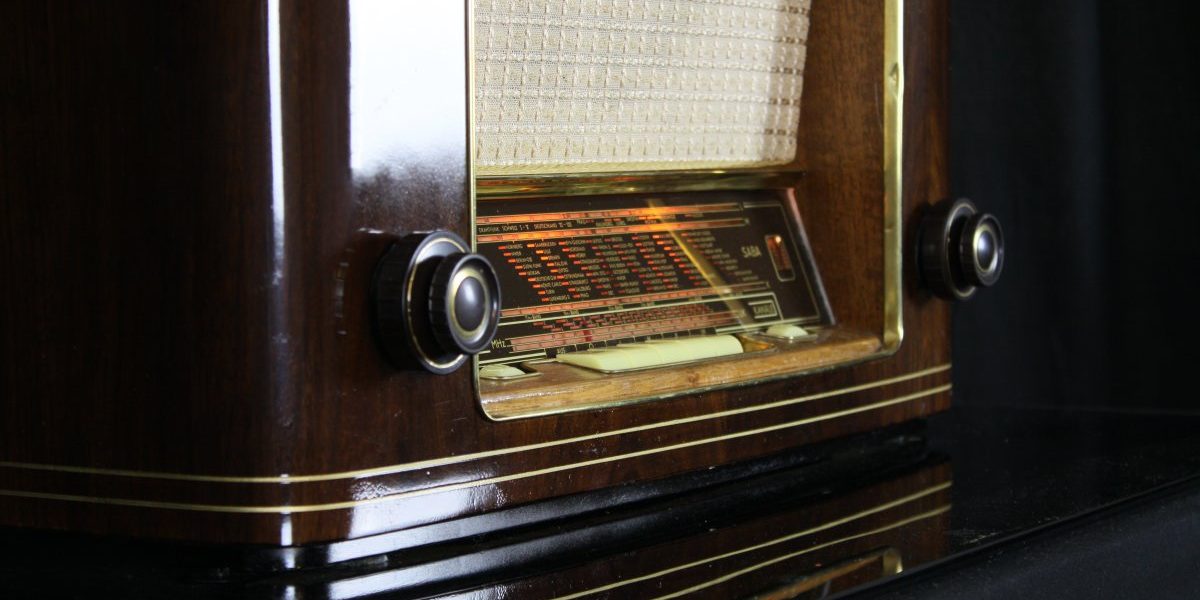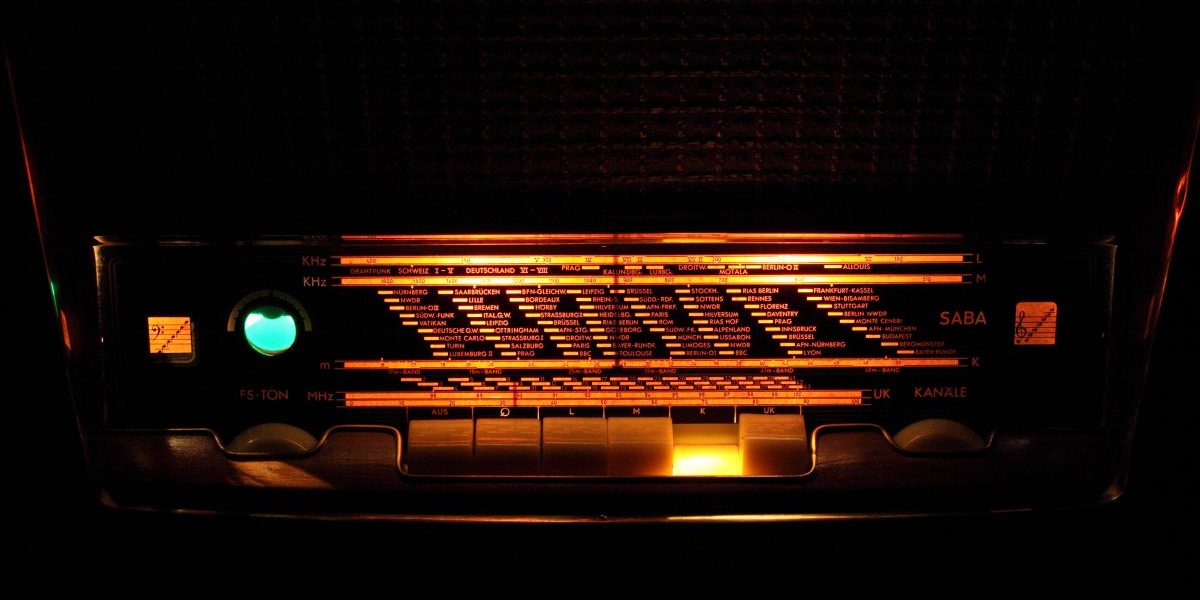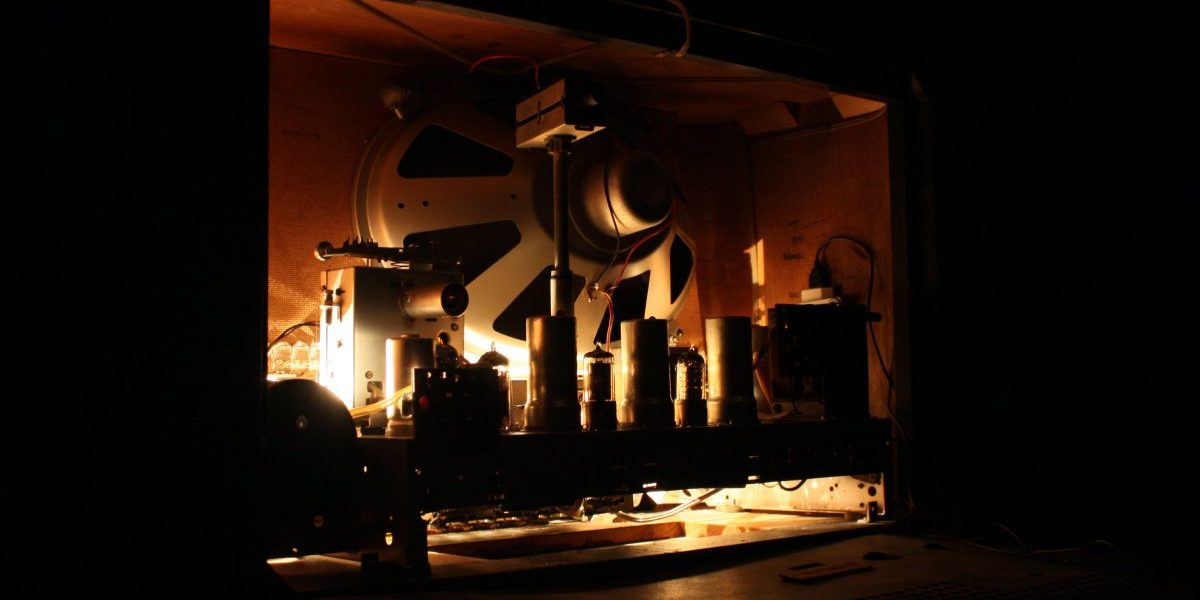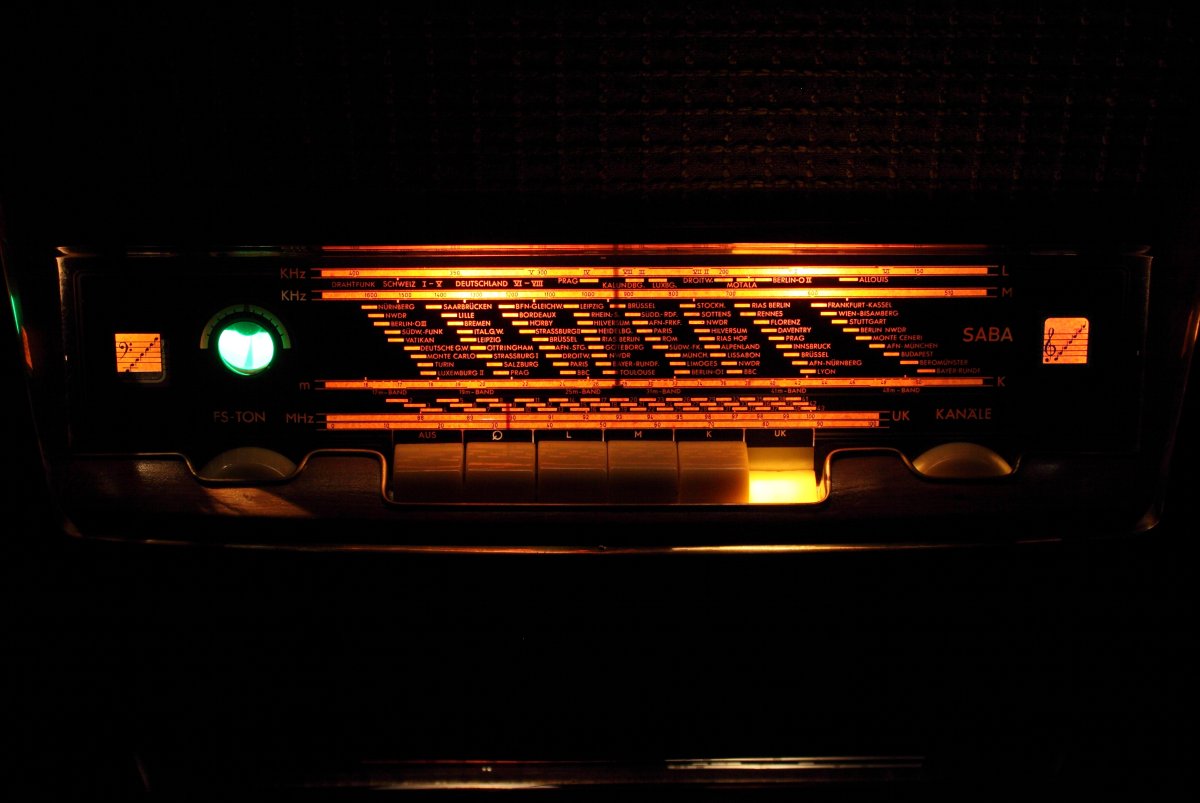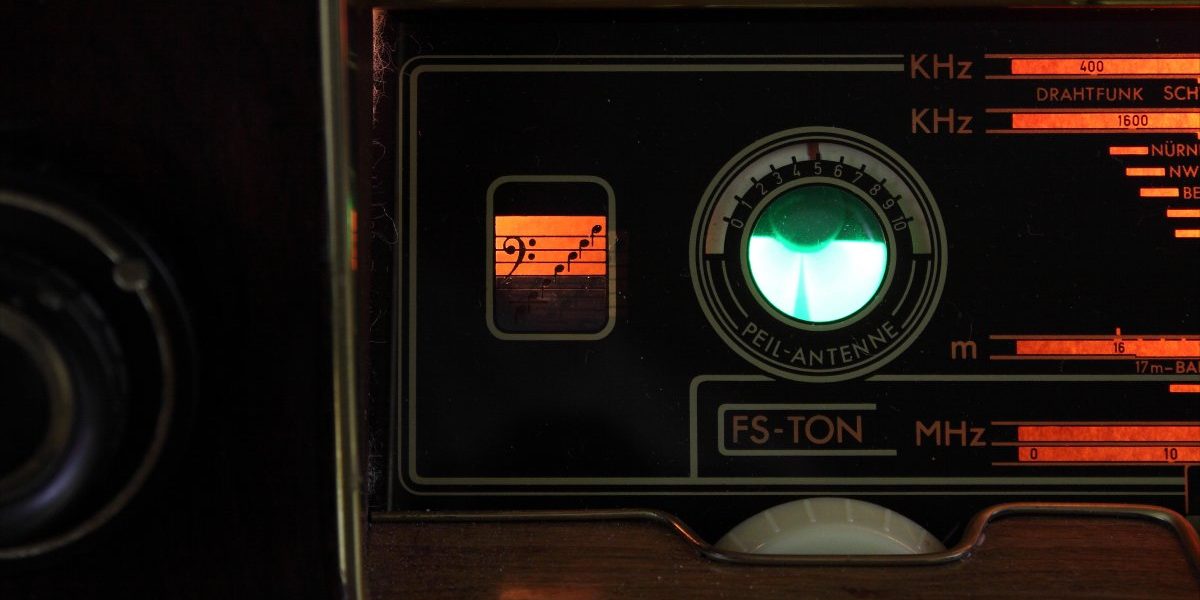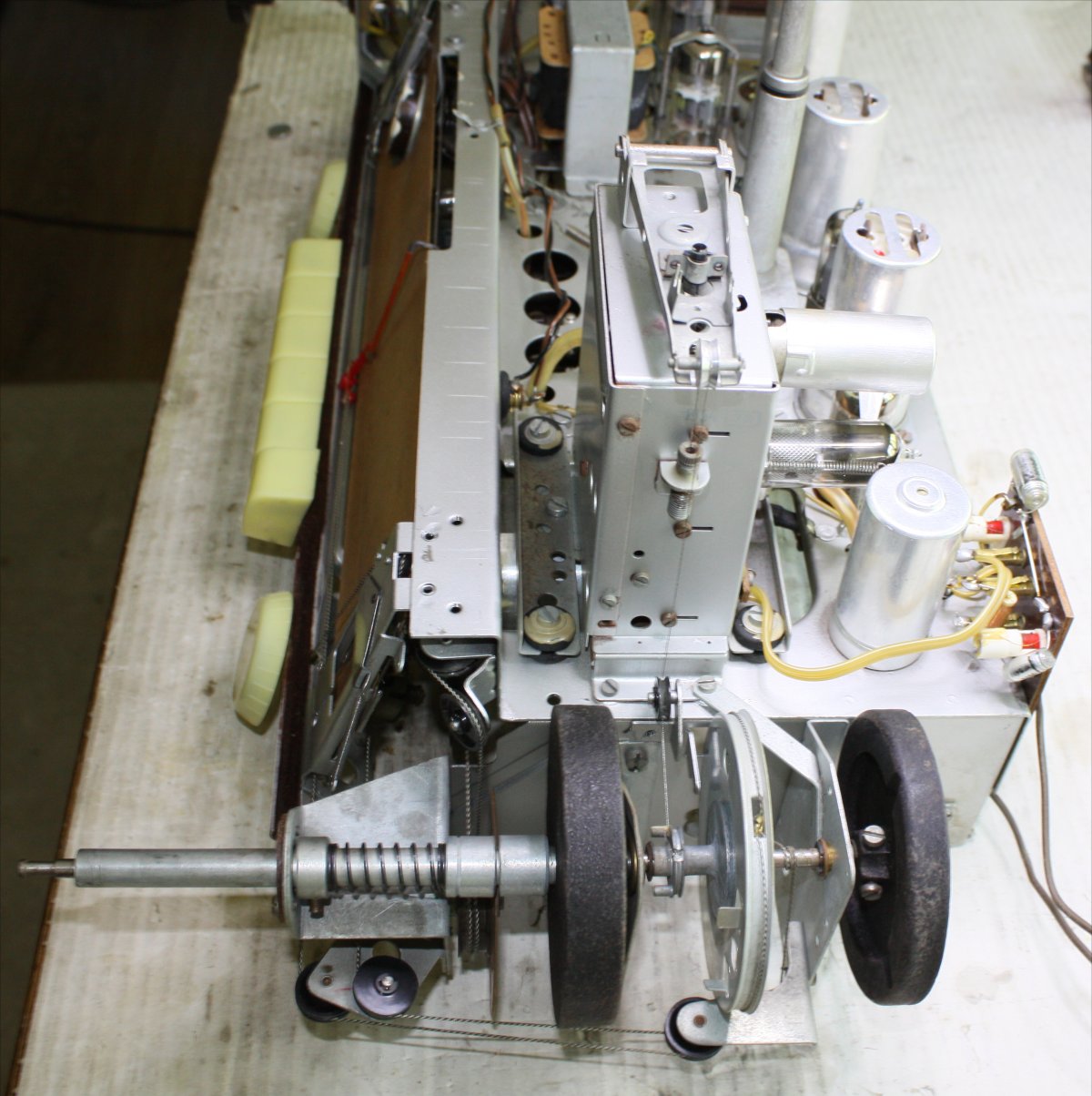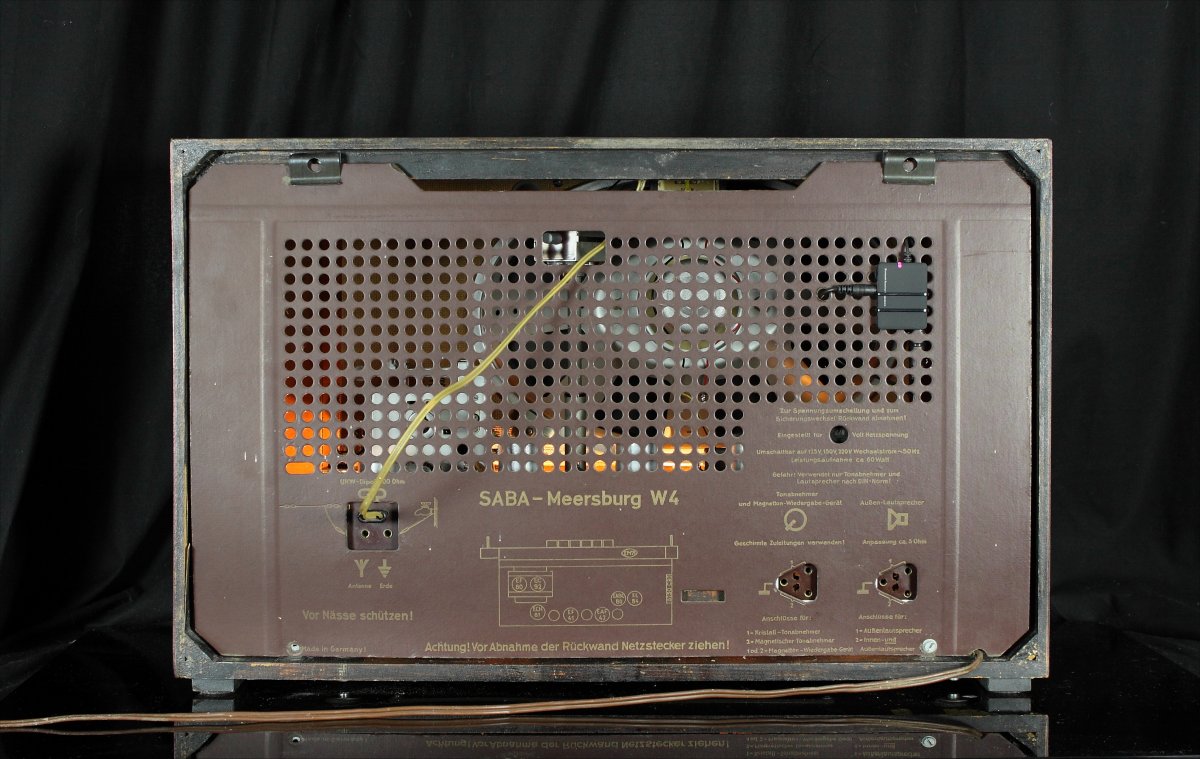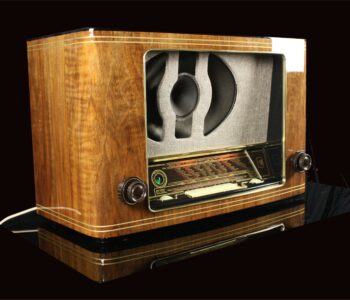 ready for sale - cn
ready for sale - cn
Saba Meer…
- by giovanni
Saba Meersburg W4 enhanced
Also this reviews will be accompanied by a section with graphs of technical measures of the most important parameters.
There is no such thing anywhere else, as far as I know. Not even the manufacturers themselves detailed the technical features of their own devices at this level.
This new section has been developed for an objective comparison of different devices.
In order to avoid interpreting the measurements incorrectly, it is very important to read the warnings carefully the first time.
The Meersburg is one of the most prestigious models produced by Saba. The version that we present in this review has been modified in order to maximize the performance of this device.
The low frequency stage is an excellent example of a class A amplifier, with an EL84 with well known sonic characteristics.
The feedback is moderate, so the resulting sound is very open, with great presence in the mids and trebles and sufficiently damped bass.
The cabinet is very robust and free from vibrations and resonances.
There are no equalizers or filter circuits that could introduce distortion or blurring of the sound.
In short, the first models of Saba Meersburg represent an ideal basis for an upgrade.
The weak point is represented by the loudspeaker system, and it is precisely the section on which we have worked around.
The speakers:
The larger of the two, a huge SABA 1675U10 with TIGGES Permadyn magnet in Alnico measures 35 x 24cm.
It is a loudspeaker built starting from 1953, with a magnet with a flux density of 8000 Gauss, an impedance of 4.1 Ohm and a voice coil of about 25 mm.
It has a frequency response that extends from 55 to 10,500Hz within +/-3dB.
The entire frequency range is sent to this loudspeaker and the high part is cut mechanically.
The cone, despite being very large is relatively light, this property allows you to have bass that are very ready, really powerful and without tails.
In our opinion, the original 5330F15 electrostatic tweeter is too inefficient compared to the large oval mid-woofer and above all it has a too high cutoff frequency. It begins to feel starting from 9600 Hz, and at a level that is too low anyway. It works therefore as a supertweeter rather than a tweeter.
This loudspeaker is placed in front of the full-range, almost in the centre. This arrangement (if it were placed right in the centre) would in our opinion be the ideal arrangement, see Goodmans Triaxiom, Altec Lansing Duplex and so on, because it allows very precise focusing of the sound image. However, since the mid-high frequencies emitted by the full range are concentrated right in the central part of the cone, the treble is mechanically hindered by the electrostatic loudspeaker placed in front.
The end result is a sound that tends towards gloom and with some unpleasant reflections as the electrostatic tweeter is not placed exactly coaxially with the mid-woofer.
We fixed these issues with two essential changes:
1 - Replacement and correct placement of the original tweeter with a Saba 5238U8 cone tweeter
2 - Made the frame with the front canvas removable
1) The Saba 5238U8 cone tweeter has a diameter of 112 mm, is equipped with a 7500 Gauss magnet, a very light 12 mm voice coil and an impedance of 5.1 Ohm.
The frequency response starts already regular from 1500 Hz and rises up to about 13 kHz, and then returns to decrease towards 20kHz.
Remember that all acoustic musical instruments that reach higher are the cymbals (Cymbals) that reach just over 10 kHz.
The efficiency of the tweeter and its low cut-off frequency compensate for the mids and trebles generated by the central part of the rear mid-woofer which are absorbed by the shadow cone of the tweeter itself.
The tweeter is positioned exactly in the center of the mid-woofer, in a perfectly coaxial position, thus avoiding the annoying reflections generated by the misalignment of the original electrostatic tweeter, maintaining the invaluable advantages of coaxial speakers.
Finally, the crescendo response curve up to 13 kHz means that the treble is really very bright.
2) The front canvas covering the speakers is never completely acoustically transparent.
For this reason, the only way to obtain maximum performance from the appliance is to eliminate it.
We built a dummy frame into which the original canvas was installed. This frame attaches to the speaker panel with magnets.
In this way it is possible to detach it when you want to listen to music with maximum transparency and put it back in its place when the radio is at rest to protect the loudspeakers from dust and to restore the original aesthetic appearance of the unit.
All this translates into exciting dynamics, brilliance of sound, lack of oscillation of the canvas in the presence of low frequencies, making listening to this beautiful device very realistic and pleasant. With a pinch of eccentricity.
The first track is Nobody Knows You When You're Down and Out performed by Bessie Smith. At the end of the WWI, the United States economy restarts strongly, a period of abundance begins, the Roaring Twenties. Written by pianist Jimmie Cox in 1923, after several interpretations and modifications to the original text, it was interpreted by Bessie Smith in 1929. The text speaks of the fortunes made by someone during the Prohibition era and highlights the precariousness of material wealth and interested friendships that result. On October 24, 1929, the collapse of the New York Stock Exchange will bring about the greatest depression that the United States and parts of the rest of the world have known.
This year Napoli won the Scudetto, so there was bound to be happy Neapolitan music. The second piece written by Umberto Bertini and set to music by Vincenzo Di Paola and Sandro Taccani Chella 'llà was one of Renato Carosone's fortes. The song tells of the joy of a man who manages to free himself from a relationship that caged him and who is savoring freedom. The song begins with a speech to become playful and catchy as only the Neapolitans can do.
The third piece performed by Dizzy Gillespie, the famous Tin Tin Deo was composed together with Gil Fuller and Luciano "Chano" Pozo. A thunderous opening that later transforms into a Latin rhythm and then returns explosively with the trumpets sliding towards swing. His style that combined entertainment and musicality has encouraged the spread of bebop. Gillespie's solos were breathtaking. Certainly a giant of Jazz.
The fourth piece is the Adagio for oboe in D minor by Alessandro and Benedetto Marcello. It is an interesting piece because it is a classic example of baroque with a musical theme adorned with flourishes. The flourishes are recognized above all in the repetition of the opening motif where the virtuosity and musical sensibility of the singer or performer could be expressed. Johann Sebastian Bach transcribed a harpsichord version of Marcellus' Adagio (BWV 974)
The fifth song is the very famous The River by Bruce Springsteen. Springsteen himself called this song "a revolutionary song". He himself also stated that he drew inspiration, in the lyrics, from a 1950 song by Hank Williams "Long Gone Lonesome Blues". The song recounts a conversation between him and his wife's brother. After losing his construction job, he worked hard to support his wife and young son, but he never complained. In Pittsburgh on September 22, 1984, he dedicated the song to Pennsylvania union leaders.
-
BLUETOOTH
Bluetooth receiver embedn -
MULTI PLATFORM CONNECTION
Each radio is equipped with a cable for connection to any digital device.n
TUBESOUND IMPROVEMENT
Bluetooth receiver embed – The unit is equipped with a BLUETOOTH receiver powered directly by the receiver power supply. This makes it possible to control the amplifier from any external digital device as an IPAD, a Smartphone, or a sophisticated multimedia station. So you can hear your preferred web station or your lossesless file without cables on the room. Wireless Receiver can be equipped upon requests.
– Multi Platform Connection – A customized adaptation cable to connect any digital device as Iphone, Smartphone, Laptop, CD Player etc. will be provided with this radio. This special cable suits the different impedances between the modern equipment and the receiver. Furthermore the two stereo channels flow into one without increasing the load to the input unit.
THE HISTORY
SABA is the acronym for Schawarzwälder-Apparate-Bau-Anstalt meaning engineering institute of Technological appliances of the Black Forest.
The company was founded back in 1835 by Joseph Benedikt with the initial name of Jockele-Uhren, but only in 1923 the production of radio devices began and the company went under the name of SABA.
Toward the end of the 20s SABA became famous with the well-known S35 and in the following years it became the second German producer after Telefunken. During the war SABA produced military equipment and in 1945 the company was completely destroyed by a bombing.
In 1947 the production of radio devices began again and SABA distinguished itself immediately for ist avant-garde and high- quality production.
hey also began to produce TVs (the first PAL color TV is a SABA), house appliances and medical equipment. Many Italians used to work there. The Alnico Greencone loudspeakers became popular for their linearity, power handling, constant impendence that would be employed in each Hi-Fi devices of that time.
The radio devices with motorized tuning became popular as well and SABA became the representative German brand meaning quality, reliability and detailed precision. In the 1970s the decline began. According to specialized magazines of that time not having a Japanese device at that time meant not having Hi-Fi. In the 80s Thompson took over SABA. In the 90s the other way around, having a Japanese device of the 70s meant not having Hi-Fi. They found out that they functioned with a 96% counterreaction and that a device with 0.001 db from 1 to 100 KHz extension did not necessarily sound good.
We do not trust our ears and we do trust what other people say not necessarily with a good purpose.
2007: due to insolvency SABA disappeared from the TLC (Chinese) and Thompson (French) joint venture, and SABA ceased to exist.
MAIN FEATURES
Year of production: 1954
Superheterodyne IF: 472/10700
8 AM Circuits - 11 FM Circuits
Wavebands:
Medium Waves (MW), Long Waves (LW), Short waves (KW), FM (UKW)
Loudspeakers:
a 9" x 14" woofer
a 4" tweeter
Dimensions (LHD): 610 x 385 x 276 mm / 24 x 15.2 x 10.9 inch
Peso netto: 14.5 kg / 31 lb 15 oz
Tubes 11: EF80 EC92 ECH81 EF41 EM71 EAF42 EABC80 EL84
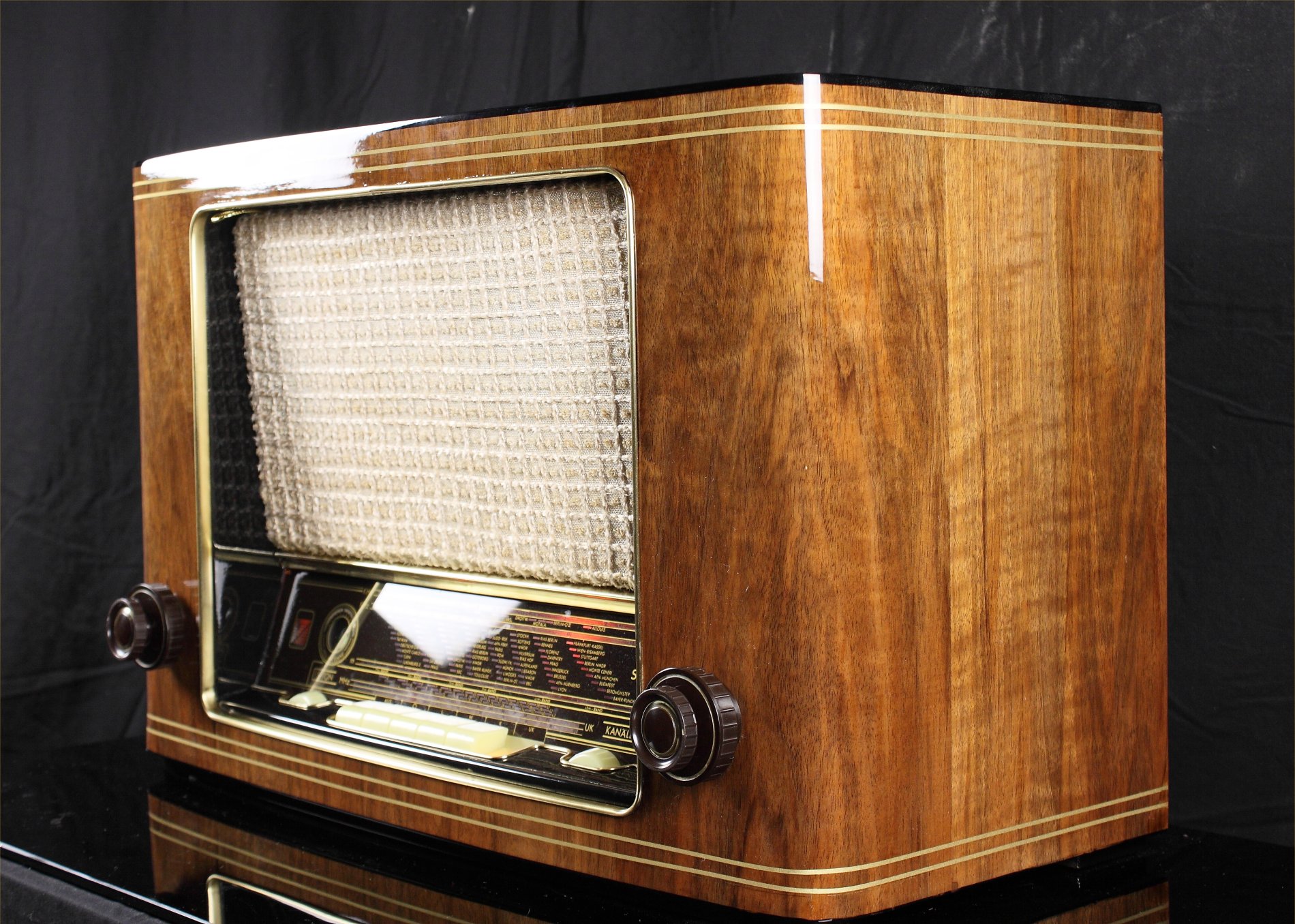
MEASURED TECHNICAL FEATURES
IMPORTANT REMARK
(to be read carefully at least the first time)
- The following measures have been carried out in order to compare, from an electrical point of view, the devices that will be reviewed on this site. It is not possible to make comparisons with measurements made by other laboratories on different devices. The instrumentation and measurement conditions are probably very different.
- The instrumentation used for the measurements is obsolete and unprofessional. We believe that more precise instrumentation is not necessary due to the tolerances of the human auditory system. Distinguishing a distortion of 1% from one of 1.1% or 1.001% only makes sense from the electrical point of view. Probably no one can hear the difference by ear. Only a child and very few lucky people can perceive the difference between a flat response curve up to 16 KHz and one up to 20 kHz.
- The perception of sound depends on many factors, namely the age of the listener, the listening environment, the musical genre that is being reproduced, the listener's expectations, his or her listening habits and knowledge and many other factors, besides of course the quality of the other devices. Therefore, there is no direct and unique relationship between the results of the measurements made and the pleasantness of listening to a specific device.
BANDWIDTH
Normally the measurement of the bandwidth is done on a resistive load. Therefore, the deformation caused by the loudspeakers' inductive load and the effect of the mechanical resonance of the speakers themselves on the feedback circuit are not considered. The effects are by no means negligible, the measurements carried out on a purely resistive load are always very linear but they don't coincide with the real frequency response.
On the other hand, this response curve was measured on an inductive laod, that is, with its own loudspeakers.
The frequency response measurements were made with a sinusoidal generator and a Wandel & Goltermann WM – 20 level meter.
You can see the actual frequency response on the vobulator' screen.
RMS POWER
he lower of the RMS voltages measured at the three sample frequencies divided by the load resistence.
The measurement conditions are the following:
- sample frequencies, 100, 1000, 10,000 Hz
- 8 ohm resistive load
- distortion less than or equal to 1%.
The measuring instrument provides the RMS value directly.
The measured RMS power is 3.8 W
INTERMODULATION DISTORTION %
The Intermodulation Distortion % was measured with the SMPTE standard and measured at 1W RMS.
The two measurements were carried out by modulating the 50 Hz sine wave with a 1080 Hz sine wave and then with a 10400 Hz sine wave, with an amplitude in a ratio of 1/4 compared to the basic sinusoid.
The output voltage was kept around 2.83V on an 8 ohm carico.
The measured Intermodulation Distortion % (IM%) is 0.14%
TONE CONTROL WITH LEVEL INDICATION
AERIALS
Inside the cabinet there is a dipole for FM reception and a ferrite rotating aerial for AM reception.
Ferrite aerial can be rotated from the outside to achieve a perfect tuning of the device in the AM.
In this picture you can see the rotation mechanism, and the aerial position indicator.
The reception sensitivity with internal aerials is very good. This unit was in fact produced when there were not many radio stations, and those available were far from each other.
Using an external aerial sensitivity is further increased.
1 - Rotation command of the ferrite antenna
2 - Volume control (with loudness built-in)
3 - The bass control knob
4 - OFF
5 - Aux
6 - Long waves
7 - Medium Waves
8 - Short Waves
9 - FM
10 - Treble control knob
11 - Tuning knob AM
12 - Tuning knob FM
THE USUAL AMAZING LAST IMAGE

